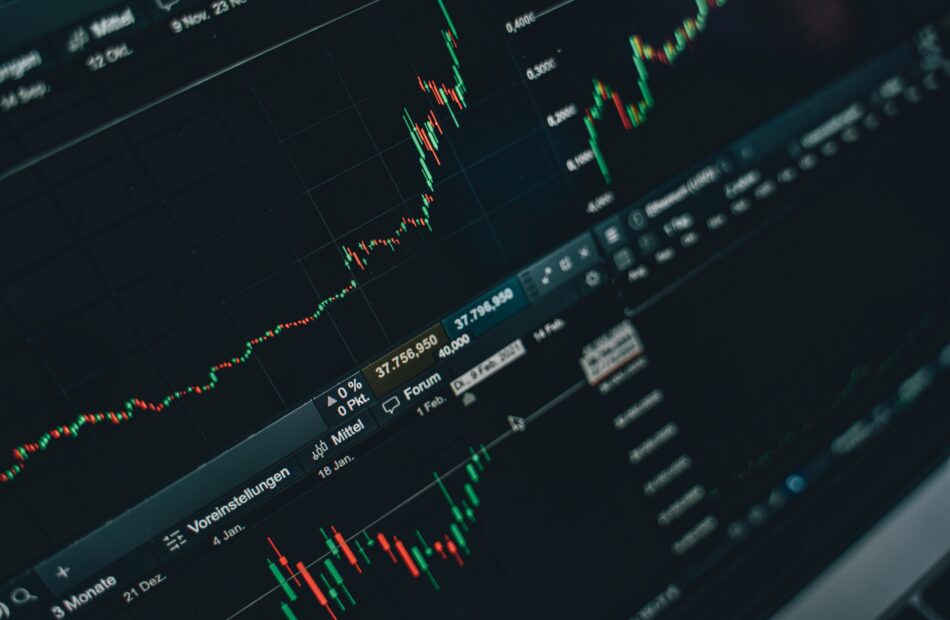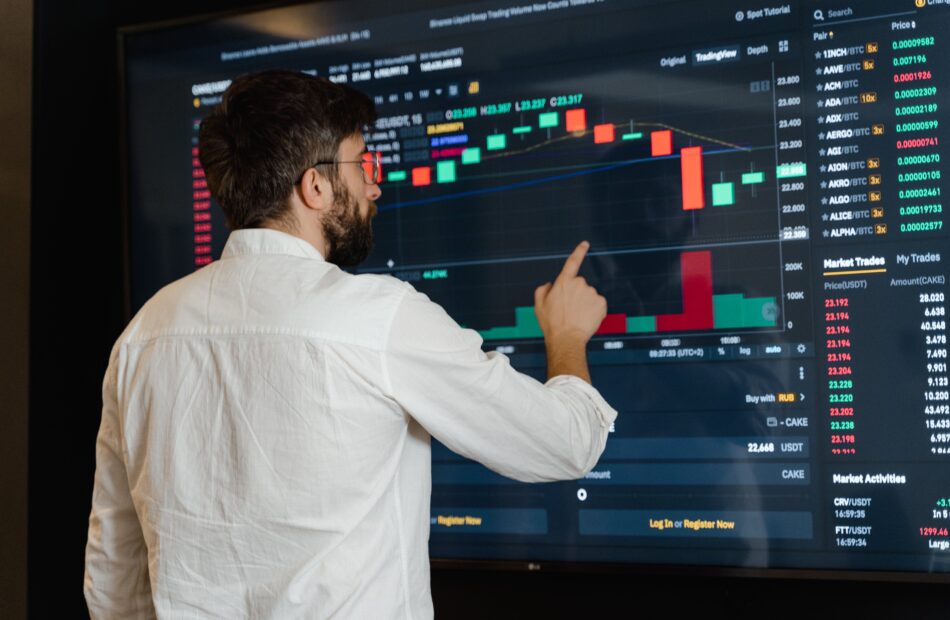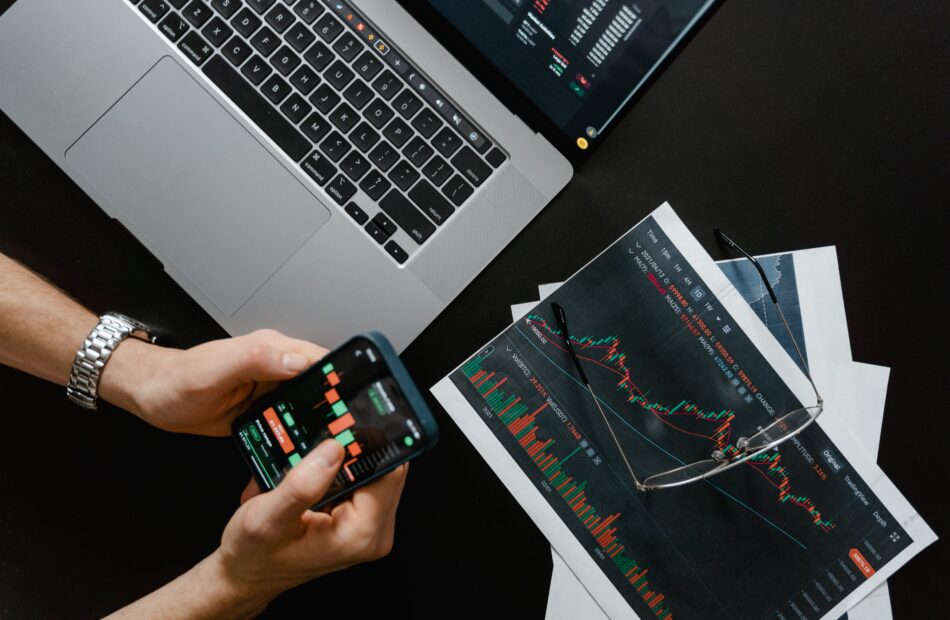Arbitrage Opportunities in the Crypto Market
Introduction to Arbitrage in the Crypto Market

Introduction to Arbitrage in the Crypto Market
Arbitrage is a popular strategy used in the cryptocurrency market to take advantage of price differences and make profits. Essentially, it involves buying a certain cryptocurrency on one exchange where prices are lower and selling it on another platform where prices are higher. This process exploits temporary imbalances in prices across exchanges and aims to generate risk-free returns for the trader.
Unlike traditional financial markets, cryptocurrencies are decentralized, which means that prices can vary significantly between different exchanges. Such price differences exist due to factors like trading volume, liquidity, regulations, and market demand. By exploiting these price gaps, arbitrageurs aim to make quick profits.
The concept behind crypto arbitrage is not new; it has been prevalent in traditional financial markets for years. However, with the rise of digital currencies and numerous cryptocurrency exchanges, the opportunities for arbitrage have expanded exponentially.
To execute a successful arbitrage trade, traders must keep an eye on various key factors. Firstly, they need to closely monitor different cryptocurrencies and their varying price patterns across exchanges to identify potential opportunities. Furthermore, it’s crucial to consider trading fees on both ends of the transaction as they can impact profitability.
Since speed is essential in arbitrage trading, traders often utilize automated trading bots that can quickly execute transactions across multiple exchanges simultaneously. These bots can constantly scan numerous trading platforms for price differentials and instantly execute trades when profitable opportunities arise.
It’s important to note that while arbitrage aims to exploit temporary price differences, these discrepancies often vanish swiftly as the market adjusts. The increased popularity of crypto arbitrage has also reduced some opportunities due to improved market efficiency and tightening spreads among exchanges.
Nevertheless, crypto arbitrage remains a viable strategy for traders able to act swiftly. It aligns with the promise of a decentralized and globalized financial system that cryptocurrencies represent. By taking advantage of unique trading conditions at any given moment, arbitraging cryptocurrencies provides potential returns from an evolving marketplace.
In conclusion, arbitrage in the crypto market is a strategy used to profit from price variations across different cryptocurrency exchanges. It involves buying at a lower price on one exchange and selling at a higher price on another. While it requires careful monitoring and should be executed quickly, crypto arbitrage is an interesting aspect of this rapidly evolving market with the potential for profits.
How Crypto Arbitrage Works: A Beginner’s Guide
Crypto arbitrage is a strategy utilized by traders to take advantage of price differences between different cryptocurrency exchanges. It involves buying a digital asset from one platform at a lower price and immediately selling it on another exchange where the price is higher. This can lead to profit generation due to these disparities in prices.
To understand how crypto arbitrage works, let’s consider an example. Suppose Bitcoin is trading at $10,000 on Exchange A and $10,200 on Exchange B. As an arbitrageur, you would purchase Bitcoin on Exchange A for $10,000 and sell it on Exchange B for $10,200. By doing so, you make a profit of $200 per Bitcoin.
This technique relies on market inefficiencies which could arise due to several reasons. First, different exchanges maintain separate order books with varying liquidity, creating differences in prices. Secondly, time zone variations can influence the market as well. Suppose a new development affecting cryptocurrency prices happens at a particular exchange during off-peak hours; this may cause imbalances in prices across exchanges until the news spreads globally.
There are two main types of crypto arbitrage: simple arbitrage and triangular arbitrage.
Simple Arbitrage:
Simple arbitrage involves buying and selling the same cryptocurrency between two different exchanges. For instance, purchasing Bitcoin on Exchange A at a lower price and then instantly selling it on Exchange B for a higher price leads to a profit. The process is relatively uncomplicated since it revolves around exploiting price differences in the same digital asset across multiple platforms.
Triangular Arbitrage:
In contrast to simple arbitrage, triangular arbitrage involves taking advantage of price discrepancies between three different cryptocurrencies on the same or various exchanges. This method uses a sequence of trades to generate profits utilizing multiple currency pairs.
For example, let’s assume there are differences in the exchange rates between Bitcoin (BTC), Ethereum (ETH), and Ripple (XRP). The trader starts by exchanging their BTC to ETH on one platform, then converting the acquired ETH to XRP on another exchange, and finally exchanging the obtained XRP back to BTC on a third platform. Through these transactions, if discrepancies in prices allow for profitable gaps, the trader can accumulate more BTC than originally possessed.
It is important to note that crypto arbitrage is not risk-free. Several factors may impact a trader’s ability to successfully execute arbitrage opportunities. These include transaction fees, withdrawal fees, network congestion leading to slower transactions, and minimum deposit/withdrawal limits on exchanges. Moreover, prices can quickly change during market volatility, resulting in potential losses if the trades are not executed swiftly.
Additionally, since the popularity of crypto arbitrage has grown, finding profitable opportunities has become more challenging due to increased market efficiency. Professional traders with sophisticated algorithms constantly scan the markets for any pricing anomalies and act promptly before most individuals can capitalize on them.
Despite the risks and complexities involved in executing crypto arbitrage, it remains an intriguing strategy for those interested in profiting from short-term price differentials among various cryptocurrency exchanges.
Types of Arbitrage Opportunities in Cryptocurrency Trading
Arbitrage opportunities in cryptocurrency trading refer to instances where traders can profit from price differences between different exchanges or markets. This arises due to the decentralized nature of cryptocurrencies, resulting in price disparities across platforms. As a result, various types of arbitrage opportunities exist within the crypto market:
- Simple Arbitrage: This involves purchasing a cryptocurrency at a low price from one exchange and selling it at a higher price on another exchange. Traders capitalize on these price variations to generate profits without assuming much risk since the process usually happens instantaneously.
- Triangular Arbitrage: This type of arbitrage takes advantage of price discrepancies between three different cryptocurrencies instead of just two. The trader completes a sequence of transactions to exploit variations in exchange rates, ultimately generating profits by efficiently utilizing price gaps within interconnected markets.
- Exchange-to-Exchange Arbitrage: It revolves around exploiting price differences that occur across different cryptocurrency exchanges. Traders transfer their assets between exchanges, capitalizing on varying prices degrees to acquire coins at a lower rate in one market and sell them at a higher rate on another, earning profits in return.
- Statistical Arbitrage: Unlike other approaches that rely purely on price disparity, statistical arbitrage exploits quantitative analysis and mathematical models to identify pricing irregularities when compared with historical data and market trends. Traders leverage this strategy algorithmically, assuming smaller risks while aiming for consistent gains over time through multiple trades.
- Risk Arbitrage: This method branches away from exploiting just variations in crypto prices and taps into divergences during specific events or developments. For example, a trader could assess market reactions to news such as protocol upgrades or regulatory changes, aiming to forecast price fluctuation effects caused by these events.
- Market Maker Arbitrage: Market makers provide liquidity by placing limit orders on both sides of the order book, essentially bridging the gap between buyers and sellers. In this type of arbitrage, traders reap substantial profits by maintaining bid-ask spreads, frequently placing limit orders, and profiting from the resulting buying and selling imbalances that occur due to differing market sentiments.
- Cross-Exchange Arbitrage: Traders exploit discrepancies between different cryptocurrency pairs listed on various exchanges. By ensuring simultaneous buy and sell placement of different pairs, market participants look to gain from temporary price imbalances which arise when the prices differ significantly for similar assets.
In conclusion, numerous types of arbitrage opportunities exist within the cryptocurrency trading sphere. These methods leverage differences in prices across platforms and employ various strategies to generate profits. However, it’s important to be aware that crypto markets are highly volatile, so traders must thoroughly assess their risks and know-how to execute trades efficiently while adhering to each exchange’s specific requirements and regulations.
Understanding the Risks and Rewards of Crypto Arbitrage
Understanding the Risks and Rewards of Crypto Arbitrage
Crypto arbitrage has gained significant popularity in recent years due to its potential for generating substantial profits. However, it is crucial for investors to understand the associated risks and rewards before venturing into this part of the crypto market. Here’s a breakdown of what individuals should know about crypto arbitrage:
Arbitrage Defined:
Arbitrage refers to the practice of buying a digital asset at a lower price on one exchange and simultaneously selling it at a higher price on another exchange. Traders exploit discrepancies in cryptocurrency prices across various platforms to make profits from market inefficiencies.
Rewards:
- Profits: Successful execution of arbitrage trades can yield quick profits for traders. By leveraging price discrepancies, crypto arbitragers can generate substantial returns in a short period.
- Risk Mitigation: Since arbitrage trading keeps funds predominantly stored in stable cryptocurrencies like Bitcoin or Ethereum, traders can minimize the impact of sudden price fluctuations that might occur with less stable altcoins.
- Liquidity Opportunities: Arbitrage exploits help improve overall liquidity in the market by equalizing prices across exchanges, contributing to the efficiency and stability of the crypto ecosystem.
Risks:
- Exchange Regulations: Different exchanges have varying regulations and trading fees that significantly impact profit margins. Cross-border transactions may be subject to additional fees or stringent regulatory requirements.
- Transaction Delays: Cryptocurrency transactions can sometimes encounter delays due to network congestion or unforeseen technical problems, potentially affecting transaction execution speed and profit opportunities.
- Market Volatility: The inherent volatility characteristic of cryptocurrencies exposes traders to significant risks. Prices can fluctuate rapidly, rendering profitable arbitrage opportunities unfeasible or even resulting in losses.
- Security Concerns: Conducting arbitrage often involves transferring funds between different exchanges. This brings security risks such as potential hacks or untrustworthy exchanges, leading to compromised funds.
Precautions:
- Thorough Research: Understanding the functioning of different cryptocurrency exchanges, their regulatory environments, and potential additional costs is essential to make informed trading decisions.
- Risk Management: It is vital to utilize proper risk management strategies such as setting realistic profit targets, diversifying investments, and implementing stop-loss orders to mitigate potential losses.
- Technical Analysis: Analyzing price charts, order books, and historical data can aid in identifying market trends and potential arbitrage opportunities.
- Reliable Exchanges: Choose reputable exchanges with robust security measures to minimize the risks associated with hacks or loss of funds.
Before engaging in crypto arbitrage, individuals should consider its complexities and conduct a careful risk assessment. Developing a comprehensive understanding and employing proper risk management strategies are crucial steps for navigating this potentially lucrative yet volatile corner of the crypto market.
Tools and Technologies for Identifying Crypto Arbitrage Opportunities
In the volatile world of cryptocurrency markets, identifying arbitrage opportunities can be a lucrative strategy for traders. Several tools and technologies can assist traders in detecting and capitalizing on these opportunities, boosting their profitability. Here’s an overview of some essential tools and technologies frequently used by crypto market participants:
- Exchanges: Cryptocurrency exchanges are platforms where users buy, sell, and trade various digital assets. To spot arbitrage possibilities effectively, traders employ multiple exchanges simultaneously. By keeping an eye on price discrepancies across different platforms, they can quickly take advantage of buying low on one exchange and selling high on another.
- Trading Bots: Automated trading bots are computer programs designed specifically for executing trades based on predetermined parameters and strategies. These bots can scan multiple exchanges in real-time and actively seek potential arbitrage opportunities based on predefined trading indicators and algorithms. By automating the process, traders can swiftly respond to movements in the market without continuously monitoring it themselves.
- Market Data Aggregators: Crypto market data aggregators consolidate information from various exchanges, making it easier for traders to analyze and compare prices across different platforms. These platforms provide real-time pricing data, order books, trade volumes, and other essential market indicators, empowering traders to identify potential arbitrage possibilities more efficiently.
- APIs: Application Programming Interfaces (APIs) allow software systems to communicate and interact with each other. Exchanges typically provide APIs that enable traders to access live streaming market data, place orders programmatically, and even perform automated trades or arbitrage strategies using coding techniques. APIs enhance speed and efficiency when analyzing numerous markets simultaneously.
- Tracking Tools: There are several tracking tools available that assist traders in monitoring price movements across multiple cryptocurrencies continually. These tools provide alerts and notifications whenever a substantial price difference occurs between different exchanges or pairs of cryptocurrencies, thereby increasing the chances of identifying profitable arbitrage opportunities.
- Statistical Analysis Tools: Successful cryptocurrency trading often involves a considerable amount of statistical analysis and pattern recognition. To identify potential arbitrage opportunities, traders can employ various statistical tools and techniques such as moving averages, Bollinger bands, or relative strength index (RSI) indicators. These analytical tools help traders predict market trends and make informed trading decisions.
- Order Execution Management Systems: Efficient order execution is crucial when capitalizing on arbitrage opportunities with cryptocurrencies. Order execution management systems ensure that traders’ orders are executed accurately and precisely at the desired price or within the predetermined trading parameters, minimizing the chances of slippage which can diminish profitability in arbitrage trading.
By utilizing a combination of these tools and technologies, crypto traders can potentially increase their chances of identifying and exploiting arbitrage opportunities in various markets. However, it is essential to consider several factors like liquidity, transaction fees, and network congestion while employing these tools to minimize potential risks associated with trading volatility.
The Role of Exchange Fees in Crypto Arbitrage Profits

Exchange fees play a pivotal role in determining the profitability of crypto arbitrage. Arbitrage is a strategy where traders take advantage of the price differences between different cryptocurrency exchanges. By buying low on one platform and selling high on another, traders attempt to make an instant profit.
When engaging in arbitrage, it’s crucial to consider the various fees imposed by exchanges. These fees are typically charged for executing trades, and they can significantly impact the potential profits or even turn an otherwise profitable opportunity into a loss.
There are usually two types of exchange fees that traders encounter:
1) Trading Fees: Exchanges often charge traders a fee for every executed trade or transaction. This fee is commonly calculated as a percentage of the total trade value. Therefore, the higher the trading volume, the higher the fee. For frequent traders, these costs can accumulate rapidly and eat into potential profits.
2) Withdrawal/Deposit Fees: Besides trading fees, traders may also encounter charges when depositing or withdrawing funds from exchanges. Although these fees may seem negligible at first glance, they can add up over time, especially if traders are frequently moving funds between platforms.
Considering all potential exchange fees is essential when calculating arbitrage profits accurately. While it’s tempting to focus solely on price differences across exchanges to identify profitable opportunities, ignoring relevant fees could lead to incorrect calculations and misjudgments.
To optimize arbitrage profits, traders must carefully examine and compare the fee structures of different exchanges. Certain platforms may offer lower trading fees but impose higher withdrawal fees or vice versa. Balancing these costs allows traders to identify exchanges with favorable conditions that will result in higher overall profitability.
Additionally, some exchanges offer specific fee structures based on factors such as trader volume or holding their native tokens. Exploring these options can potentially reduce trading costs and enhance arbitrage profits further.
Lastly, one must also consider transaction speeds while analyzing the impact of exchange fees on arbitrage opportunities. While certain platforms may charge lower fees, the slower execution times could affect overall profitability. Time is of the essence in arbitrage; if prices fluctuate before trades are executed due to latency, it can result in missed opportunities or reduced profit margins.
Keeping a keen eye on exchange fees and establishing a well-calculated approach to arbitrage will significantly improve the chances of successful trading and consistent profits within the dynamic world of cryptocurrency markets.
Time-Sensitive Nature of Successfully Executing Arbitrage in Crypto
Time-Sensitive Nature of Successfully Executing Arbitrage in Crypto
Successful execution of arbitrage in the crypto market heavily relies on the time-sensitive nature of the transactions. Arbitrage involves capitalizing on price discrepancies between different crypto exchanges or platforms by buying low on one exchange and selling high on another. However, the dynamic nature of cryptocurrency markets makes time a crucial element for profit realization. Here are some important aspects of the time-sensitive nature associated with executing crypto arbitrage:
- Volatility: Cryptocurrencies are notorious for their extreme price fluctuations and high volatility. Prices can rapidly rise or fall within minutes, which necessitates swift actions. Execution timing when engaging in arbitrage is critical as slight delays might invalidate potential profits or, worse, result in losses.
- Latency: The speed of executing trades is paramount. Latency refers to the delay between identifying an arbitrage opportunity and completing the transaction. Even seconds can significantly affect arbitrage outcomes as others can swoop in, reducing potential profits. Minimizing latency through efficient trading strategies and advanced technology like automated bots is increasingly common among crypto traders.
- Order Books: Understanding how order books work is crucial in successfully executing crypto arbitrage. An order book consists of buy and sell orders from users and indicates supply and demand at different prices on a particular exchange. The bids and asks are constantly updated in real-time based on market movements. It’s important to analyze the depth and liquidity of an exchange’s order book to gauge available opportunities accurately.
- Market Dynamics: Cryptocurrency markets globally operate 24/7, allowing constant trading activities across different continents. However, crypto prices can vary across exchanges due to factors such as regional regulations, market sentiment, liquidity, and user demand. Traders need to be aware of these market dynamics to identify and execute profitable arbitrage opportunities within these variations.
- Risk Management: Because executing arbitrage involves multiple transactions across exchanges, it is crucial to manage risks associated with price fluctuations during the process. If prices shift unfavorably while executing a series of trades, potential profits may transform into losses. Techniques like stop-loss orders can be utilized to mitigate risks and protect against adverse market movements.
- Scalability: Given the volatile nature of crypto markets, successfully executing arbitrage requires scalability. Cryptocurrency trade volumes can fluctuate dramatically within short time frames. Traders must have both technical and financial resources to scale their operations quickly to accommodate greater trading volumes during favorable arbitrage opportunities.
In conclusion, the time-sensitive nature of executing arbitrage in the crypto market is undeniable. Timing is everything when capitalizing on price discrepancies between exchanges. Staying updated on market developments through real-time data feeds, employing efficient trade execution strategies, managing risks wisely, and leveraging technology can empower traders engaged in crypto arbitrage to enhance the probability of success in this dynamic landscape.
Geographic Arbitrage: Exploring International Crypto Price Variations
Geographic arbitrage, also known as international price arbitrage, is a concept that intrigues many crypto enthusiasts. It revolves around the idea of exploiting price variations for cryptocurrencies across different geographical regions. This strategy seeks to take advantage of the discrepancies in cryptocurrency prices between various markets around the world.
Cryptocurrencies, like Bitcoin, Ethereum, or Litecoin, are traded on multiple exchanges across different countries and continents. As a result, the supply and demand factors in each region may differ significantly, influencing prices in distinct ways. Geographic arbitrage essentially involves capitalizing on these varying prices by buying digital assets on one exchange where they present lower values and selling them simultaneously on another platform where their worth is higher.
The execution of such a trading strategy requires careful analysis and precise timing. Traders employ several methods to identify geographic arbitrage opportunities. This includes closely monitoring order books, trading volumes, market depth, and historical price data across multiple cryptocurrency exchanges worldwide.
When high potential arbitrage opportunities arise, traders can exploit them by quickly moving funds between exchanges to capture the price differences before they correct or disappear. However, one must also consider transaction costs such as fees for depositing/withdrawing funds and fees associated with exchanging different currencies. These costs could potentially reduce or eliminate any profits gained from such arbitrage trades.
Geographic arbitrage is not limited to just cryptocurrencies. It has been a prevalent technique in various financial markets for centuries, but it gained momentum with the rise of digital assets. The relatively young nature of the crypto market contributes to greater price volatility and increased potential for profitable geographic arbitrage opportunities.
Despite its potential benefits and profitability when done right, crypto market observers should consider some caveats. The speed at which information travels in today’s hyper-connected world often results in rapid price adjustments across different exchanges. This makes finding and exploiting geographical price discrepancies increasingly difficult.
Additionally, there might be hurdles when it comes to moving fiat currency or cryptocurrencies between international exchanges due to regulatory differences or operational inefficiencies. Such challenges can limit the effectiveness of executing arbitrage strategies and potentially erode potential profits.
Given the continuously evolving nature of the crypto market, investors need to adapt their geographical arbitrage tactics over time and stay informed about new exchange listings, regulations, and emerging trends.
In conclusion, geographic arbitrage represents a fascinating concept within the realm of cryptocurrency trading. It leverages price differentials of digital assets across global exchanges to maximize potential profits. However, successful implementation requires meticulous analysis, efficient execution, and constant monitoring of market conditions. By carefully navigating the complexities associated with geographic arbitrage, traders can potentially benefit from international price variations in the dynamic crypto market.
Flash Loans and Arbitrage Opportunities in DeFi Sectors
Flash Loans and Arbitrage Opportunities in DeFi Sectors
The advent of decentralized finance (DeFi) has introduced groundbreaking concepts that are revolutionizing the financial landscape. Two such concepts are flash loans and arbitrage opportunities, which have gained significant attention in recent times.
Flash loans are a revolutionary lending innovation provided by certain DeFi protocols, which grant users instant access to large amounts of cryptocurrency without requiring collateral. These loans allow users to borrow vast sums of digital assets within a single transaction and don’t need prior collateralization, as they rely on the loan being repaid within the same transaction block. Such loans have opened up new avenues for creative financial strategies and trading opportunities.
One compelling use case of flash loans is arbitrage within DeFi sectors. Arbitrage refers to the practice of taking advantage of price differences for an asset across different markets or platforms, aiming to profit from this disparity. In the context of DeFi, crypto traders utilize flash loans to capitalize on opportunities wherein prices for an asset differ across multiple decentralized exchanges (DEX).
Arbitrage using flash loans typically involves executing multiple carefully timed transactions across several DEX platforms to exploit temporary market inefficiencies. Traders can borrow significant amounts of cryptocurrency through flash loans, execute various trades, and return the loan within the same block. By doing so, they can potentially profit from price discrepancies before they are reconciled.
This strategy works by taking advantage of slippage and liquidity imbalances. Slippage occurs when executing large trades in less liquid markets, resulting in prices moving substantially due to limited available liquidity. Proponents argue that slippage can facilitate profitable opportunities through arbitrage.
To leverage these opportunities, traders use automated bots or write complex smart contracts that execute a sequence of trades. These automated processes scan different decentralized exchanges simultaneously and execute trades only if the potential profit exceeds associated costs, such as gas fees incurred during transactions. However, building effective algorithms requires a deep understanding of the market dynamics and sophisticated programming skills.
It’s important to note that flash loan-related arbitrage is not risk-free. Several risks associated with both flash loans and arbitrage strategies exist within DeFi sectors. These risks include sudden market volatility, inaccurate or delayed data, transaction failures, smart contract vulnerabilities, as well as regulatory uncertainties.
In conclusion, flash loans and arbitrage opportunities have rapidly become significant areas of exploration for crypto traders operating within the DeFi space. While offering immense profit potential, these strategies are not without risks. Nevertheless, their popularity in the emerging DeFi sector suggests that flash loans and arbitrage are likely to continue impacting the crypto market and financial landscape as a whole.
Regulatory Considerations for Arbitrage Traders in the Crypto Space

Regulatory considerations for arbitrage traders in the crypto space can play a pivotal role in shaping their strategies and operations. As the cryptocurrency market evolves, so does the need to comply with various regulations, reinforcing stability, security, and investor protection.
First and foremost, it’s essential for arbitrage traders to familiarize themselves with the legal framework of each jurisdiction they operate within. Crypto regulations vary between countries, with some adopting accommodating policies while others have implemented strict measures. Being aware of these regulatory landscapes is crucial for ensuring compliance and avoiding legal issues.
One significant aspect often regulated in the crypto space is Know Your Customer (KYC) procedures. Many countries require cryptocurrency exchanges to follow strict KYC guidelines which entail verifying the identity of their users. Arbitrage traders need to be aware of these requirements and ensure they are dealing with exchanges that adhere to such protocols.
Additionally, anti-money laundering (AML) regulations are frequently enforced in the crypto market. These regulations aim to combat illicit activities by ensuring that exchanges have robust measures in place to detect and prevent money laundering through cryptocurrencies. Knowledge of AML practices is important to ensure arbitration trading doesn’t inadvertently facilitate any illegal activities.
The tax implications associated with cryptocurrency transactions also demand careful attention from arbitrage traders. Tax regulations related to cryptocurrencies are continually evolving as governments seek to gain insight into this rapidly growing market sector. Traders must understand the tax obligations specific to each jurisdiction they operate within to avoid potential penalties or disputes.
Ensuring data privacy and security is another regulatory consideration that should not be overlooked. The large-scale exchange hacks and data breaches that have occurred in the industry highlight the necessity for exchanges to prioritize user data protection. Arbitrage traders should assess the security practices employed by exchanges they work with and evaluate their own security measures when handling sensitive information.
Compliance with international sanctions is yet another regulatory consideration for arbitrage traders. Countries might enforce specific sanctions on individuals or entities, and traders need to determine whether any exchanges or assets they engage with fall under such sanctions. Failing to comply with sanction laws can result in severe legal consequences.
Furthermore, it’s vital for traders to stay up-to-date with emerging regulations and regulatory guidance within the crypto space. Governmental authorities often release statements, advisories, or even amend existing laws pertaining to cryptocurrencies. Continuous awareness of regulatory changes helps traders adapt their strategies accordingly and maintain compliance in this dynamic environment.
Ultimately, navigating the regulatory landscape can be challenging for arbitrage traders in the crypto space. However, staying informed about each jurisdiction’s unique legal requirements, including KYC, AML, tax obligations, data privacy/security measures, international sanctions, and ongoing regulatory updates, is crucial for mitigating risks and ensuring successful and compliant trading practices in the cryptocurrency market.
Effective Strategies for Minimizing Risks in Crypto Arbitrage
One of the main concerns for investors in crypto arbitrage is the potential risks involved. However, with effective strategies, these risks can be minimized significantly. Here’s what you need to know:
- Thorough research: Before diving into any crypto arbitrage opportunity, conduct in-depth research on the coins or tokens involved, the exchanges where the arbitrage will take place, and recent market trends. This will provide you with a better understanding of the potential risks associated with each opportunity.
- Multi-exchange knowledge: Instead of relying on a single exchange for your arbitrage trading, explore multiple exchanges and understand their trading practices, liquidity levels, and security measures. Diversifying your trading across various trusted exchanges helps lower the risk of being negatively affected by a single exchange’s issues or limitations.
- Timely execution: Timing is crucial in crypto arbitrage since prices fluctuate rapidly. Implement efficient trading strategies to execute your trades quickly and take advantage of price differentials before they normalize. Using automated trading bots or tools can aid in achieving faster trade execution.
- Analyze fees: Examine the trading fees associated with various exchanges and take them into account when calculating potential profits from an arbitrage opportunity. Selecting exchanges offering competitive and reasonable fees can make your strategy more economically viable.
- Security measures: Protecting your funds during crypto arbitrage is vital. Enable two-factor authentication (2FA) for all your exchange accounts, choose reputable platforms known for prioritizing security, and keep the majority of your funds in secure wallets rather than on exchanges.
- Understand withdrawal policies: Familiarize yourself with the withdrawal policies of different exchanges involved in your arbitrage trades. Checking withdrawal limits and processing times can ensure a smooth execution and help avoid unnecessary delays or complications.
- Volatility mitigation: Cryptocurrencies are notorious for their price volatility. While price fluctuations present profitable opportunities, they can also be risky if not managed appropriately. Consider setting stop-loss orders or implementing hedging strategies to reduce potential losses caused by sudden market downturns.
- Stay informed: Regularly follow reliable sources of crypto market news and stay updated on ongoing trends, regulatory changes, and significant industry developments. Real-time knowledge about the market will empower you to make better-informed decisions and minimize risks associated with factors beyond your control.
Remember, minimizing risks in crypto arbitrage does not guarantee complete elimination, as market conditions can rapidly change. Consistently evaluate your strategies while being vigilant about emerging risks to ensure the long-term success of your crypto arbitrage endeavors.
Success Stories: Big Wins in the World of Crypto Arbitrage
Crypto arbitrage has undoubtedly caught the attention of investors and traders worldwide, thanks to its potential for yielding substantial profits. The concept behind crypto arbitrage is simple yet effective: capitalize on price discrepancies for the same digital asset across different cryptocurrency exchanges.
Success stories in the world of crypto arbitrage continue to sprout, showcasing the immense opportunities present in this market. These tales of triumph often involve astute traders who have grasped the art of arbitrage to obtain significant wins. Here are a few noteworthy success stories that can inspire and educate crypto enthusiasts:
One notable tale originates from a professional trader who detected a significant variation in the price of Bitcoin (BTC) on two separate exchanges. With swift reflexes, he immediately seized this lucrative opportunity by purchasing BTC at a lower price on one exchange before swiftly selling it at a higher price on another exchange. In just a matter of minutes, he generated an impressive profit which wouldn’t have materialized had he solely relied on one platform.
Another remarkable success story involves a group of crypto entrepreneurs who developed sophisticated algorithms to automate their arbitrage strategies. By employing cutting-edge technology, such as high-frequency trading bots capable of placing trades instantaneously, they capitalized on price disparities across multiple exchanges. This innovative approach enabled them to maximize profits while minimizing risk.
In yet another case, an ardent investor discovered a relatively unknown cryptocurrency in the early stages of its journey and recognized its potential for exponential growth. He wisely purchased a substantial amount and monitored it closely. As anticipated, due to growing demand and promising developments surrounding the project, the cryptocurrency’s value soared significantly within a short timeframe. The investor ultimately sold his holdings at an enormous profit— a testament to perceptive vision and calculated risk-taking.
A crucial element inflating these crypto arbitrage success stories is profound market research and constant vigilance. Seasoned arbitrageurs keep a keen eye on various exchanges and meticulously analyze market trends, liquidity patterns, and transaction costs. This meticulous monitoring helps identify fleeting arbitrage opportunities that arise due to the often widely dispersed cryptocurrency price data present on different platforms.
Lastly, it’s important to mention that while success stories in this realm are motivating, they don’t negate the potential risks associated with arbitration. Price volatility, regulatory uncertainties, and technological glitches are just a few examples of challenges that can swiftly turn a profitable trade sour.
In conclusion, success stories featuring big wins in the world of crypto arbitrage continue to enthrall enthusiasts and investors alike. These tales highlight the vast profit potential and rewards that can be reaped by those who undertake thorough market analysis, employ innovative technology, and possess a keen eye for spotting ultimate arbitrage opportunities. However, it is crucial to remember that diligent research, calculated risk-taking, and understanding the complexities of the market are key factors in achieving sustainable success in the domain of crypto arbitrage.
Automated Trading Bots for Arbitrage: Are They Worth It?
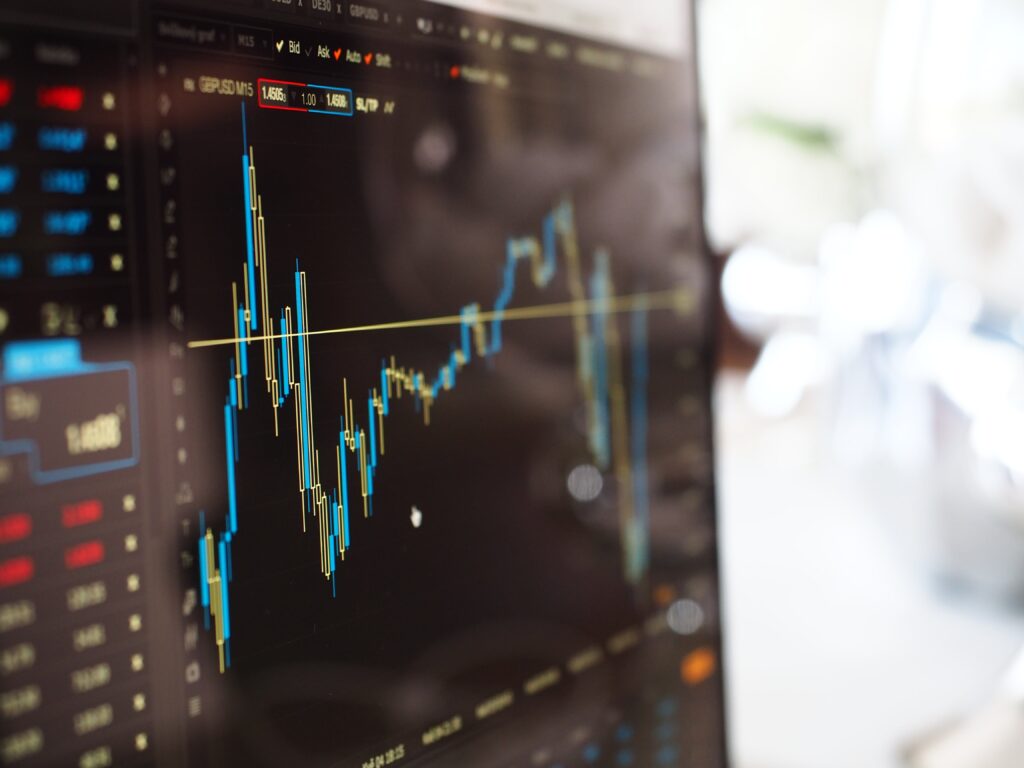
Automated trading bots for arbitrage have gained significant attention in the cryptocurrency market as savvy traders look for ways to make profits quickly and efficiently. These bots are designed to automate the process of buying and selling different cryptocurrencies on various exchanges simultaneously, taking advantage of price discrepancies and earning profits through arbitrage opportunities.
Arbitrage refers to the practice of capitalizing on price differences of an asset between different markets. In the context of the crypto market, it involves exploiting price variations across multiple cryptocurrency exchanges. These bots utilize algorithms and advanced trading strategies to identify such price differences and execute trades swiftly.
One of the main advantages of automated trading bots is their ability to process large volumes of data and execute trades at high speeds, 24/7. They can monitor multiple exchanges simultaneously, analyzing the market in real-time and identifying potential opportunities much faster than a human trader. This gives them a significant advantage in capturing arbitrage opportunities that may only last for a few seconds or minutes.
Another benefit of using automated trading bots for arbitrage is their ability to remove human emotions from the trading process. Human traders may fall victim to fear or greed, leading to biased decision-making or impulse trades that result in losses. Bots, on the other hand, operate based on predetermined rules and algorithms, ensuring consistent execution of profitable trades without being influenced by emotions.
While automated trading bots offer potential advantages, it’s important to note that they also come with risks. Market conditions can change rapidly, affecting price movements, which may result in losses if trades are not executed at the desired prices. Additionally, technical issues or glitches with the bot could lead to unexpected losses or missed opportunities.
Furthermore, using trading bots requires technical knowledge and an understanding of programming since customization may be necessary. Additionally, users must select a reliable bot provider and conduct thorough research into their track record and security measures. There have been instances where fraudulent bot providers have scammed users by enticing them with false promises and taking their money.
Lastly, automated trading bots are not foolproof solutions. While they may increase the efficiency of executing trades and capturing arbitrage opportunities, there are no guarantees of consistent profits. Market volatility, regulatory changes, and unforeseen events can impact cryptocurrency prices and disrupt arbitrage strategies.
In conclusion, automated trading bots for arbitrage can be valuable tools for cryptocurrency traders seeking to capitalize on price variations across different exchanges. They offer speed, efficiency, and the removal of emotions from trading decisions. However, they come with inherent risks that users must carefully consider before deciding to utilize them. Thorough research, reliable bot providers, and an understanding of the market are vital in determining whether these bots are worth it or not in each particular case.
The Impact of Market Volatility on Crypto Arbitrage Opportunities
Market volatility plays a significant role in shaping crypto arbitrage opportunities. The unprecedented fluctuations in prices and market conditions directly influence the potential profitability and risks associated with arbitrage trading. Understanding the impact of market volatility can help traders make informed decisions and navigate this dynamic landscape more effectively.
Firstly, it’s essential to grasp the basic concept of arbitrage in the cryptocurrency market. Crypto arbitrage involves taking advantage of price discrepancies for a particular asset across different exchanges. Traders buy an asset at a lower price on one exchange and sell it at a higher price on another exchange, thereby pocketing the profit without significant exposure to market movements.
Market volatility introduces both advantages and challenges to crypto arbitrage opportunities. During periods of high volatility, price discrepancies tend to widen across exchanges due to increased buy or sell pressure. This widening gap often presents appealing opportunity windows for profitable trades.
However, heightened volatility also brings higher risks for arbitrage traders. The increased unpredictability can result in intensified price slippage, where the execution price differs from the desired purchase or sell level due to fast-paced market movements. Larger fluctuations may jeopardize potential profits as the gap between buy and sell rates could dwindle swiftly.
It’s crucial to understand that market volatility affects different cryptocurrencies and exchanges in diverse manners. Some assets might experience more significant price swings, resulting in more frequent arbitrage chances but also higher risks. Moreover, not all exchanges show the same degree of market turbulence simultaneously, creating further complexities to identify optimal arbitrage opportunities.
To adapt to market volatility and mitigate associated risks in crypto arbitrage, sophisticated traders often rely on specialized algorithms and trading bots. These automated systems monitor multiple exchanges simultaneously, identifying potential profit-generating opportunities accurately and swiftly executing trades to reduce response time.
Another factor influencing crypto arbitrage amidst market volatility is trade volume. Higher volumes tend to bring more stability into the markets and reduce transaction inefficiencies, decreasing the likelihood of exploitable pricing discrepancies. Conversely, lower liquidity and trade volumes can catalyze wider spreads and enhance the chances for successful arbitrage trades.
Furthermore, external events like regulatory actions, major announcements from influential figures, or global economic developments can generate substantial market volatility. Traders must stay well-informed about these events to assess their impact on the crypto market, as they may lead to significant price movements and create or close arbitrage opportunities.
In summary, market volatility crucially affects the viability and profitability of crypto arbitrage opportunities while introducing increased risks. While volatility widens price discrepancies and can lead to attractive chances for profit-making trades, it also intensifies price slippage and necessitates faster decision-making. Traders leverage automated systems and monitor trade volumes to adapt to market fluctuations effectively. Comprehensive awareness of external events empowers traders with strategic insights to identify optimal moments for executing arbitrage trades in this ever-evolving crypto landscape.
Future Trends: The Evolution of Arbitrage Opportunities in the Expanding Crypto Market

Arbitrage opportunities in the expanding crypto market seem to be evolving with each passing year. The rapid development of the cryptocurrency industry, coupled with increasing liquidity and availability, has created a fertile ground for lucrative arbitrage strategies.
Initially, arbitrage in the cryptocurrency market primarily revolved around price discrepancies across different exchanges. Traders would quickly buy digital assets on one exchange at a lower price and sell them instantly on another platform where they were trading at a higher value. These differences were mainly driven by varying supply and demand dynamics, regional preferences, regulatory disparities, or simply technical glitches.
As the crypto market has matured, basic price arbitrage opportunities have become less common and more challenging to exploit. Many exchanges have implemented measures to avoid these discrepancies by improving order matching capabilities or standardizing prices across their platforms. Additionally, increased market participation and algorithmic trading have compressed price spreads between exchanges.
Nevertheless, with the growth of decentralized finance (DeFi) platforms, new types of arbitrage opportunities have emerged. DeFi protocols enable users to trade financial assets, lend or borrow funds, and participate in other financial activities without intermediaries. This ecosystem has fostered what is commonly known as decentralized arbitrage.
Decentralized arbitrage opportunities involve capitalizing on price disparities between different platforms, particularly decentralized exchanges (DEXs), within the DeFi sector. DEXs operate on blockchain networks and usually rely on automated market-making algorithms for pricing assets. These algorithms often differ between protocols, leading to mismatches in token prices. Savvy traders can exploit these differences by buying a token at an undervalued price on one DEX and selling it on another for a higher value.
Moreover, cross-chain arbitrage is also on the rise as interoperability solutions enable seamless transactions between different blockchain networks. Previously isolated ecosystems are now becoming interconnected through bridges or cross-chain technology, presenting traders with opportunities to profit from price imbalances across platforms.
Arbitrage in the crypto market is further facilitated by the proliferation of trading bots and algorithms. These sophisticated tools are designed to identify and execute arbitrage opportunities automatically, minimizing human error and response time. As automation becomes more prevalent, it is expected that algorithms will continue to refine their strategies and capitalize on ever-evolving market conditions.
However, it is crucial to note that the crypto market remains highly volatile and subject to numerous risks. Sharp fluctuations in prices, liquidity constraints, regulatory changes, security vulnerabilities, or even network congestion can significantly impact arbitrage opportunities. Traders must carefully assess and manage these evolving dynamics to effectively exploit arbitrage strategies while mitigating associated risks.
In summary, as the crypto market expands and evolves, so do the opportunities for arbitrage. While traditional price discrepancies may be dwindling, decentralized environments like DeFi are now fertile grounds for innovative arbitrage strategies. Cross-chain transactions and advancements in automated trading technologies are likely to play key roles in shaping future trends in this exciting niche. However, traders must remain vigilant and adapt to an ever-changing landscape to harness the full potential of the evolving market.
Day Trading Strategies for Cryptocurrencies
Overview of Day Trading in the Cryptocurrency Market

Day trading in the cryptocurrency market is a popular strategy used by traders to capitalize on short-term price fluctuations. It involves buying and selling cryptocurrencies within the same day, aiming to make profits from these quick trades. This approach requires individuals to closely monitor market trends, news, and charts to predict price movements accurately.
To begin day trading crypto, it is crucial to choose a reputable exchange platform that offers a wide range of cryptocurrencies for trading. Many well-known platforms like Binance, Coinbase Pro, or Kraken offer various digital assets and advanced tools suitable for day traders.
Before diving into day trading, understanding technical analysis is essential. This involves analyzing historical price charts, identifying patterns, using indicators like moving averages or RSI to determine when to buy or sell a specific cryptocurrency based on market signals. Technical analysis helps traders make informed decisions and evaluate potential profits and risk levels.
It is important to establish a clear trading strategy and stick to it while day trading crypto. Without a plan, emotions might drive impulsive decisions, leading to poor outcomes. Traders often develop several strategies depending on their preferred timeframe (minutes, hours) and use different indicators accordingly.
Risk management is crucial for successful day trading in the crypto market. Traders should always set stop-loss orders or take-profit levels to mitigate potential losses and secure gains. This ensures that any given trade has predefined risk limits, minimizing the impact of unexpected market movements.
Moreover, day traders need to stay up-to-date with cryptocurrency news and announcements that could impact prices significantly. Important news events such as government regulations, partnerships, or major exchange hacks can affect the entire cryptocurrency market. Being aware of these events helps traders adapt their strategies accordingly.
One of the key benefits of day trading crypto is its potential for high returns due to the volatile nature of cryptocurrencies. However, it also exposes traders to increased risk since prices can swing drastically within short periods. Thus, being disciplined and sticking to one’s trading strategy is fundamental.
It is worth noting that day trading crypto requires dedication, time, and continuous learning. Traders must invest time in researching and educating themselves about cryptocurrencies, technical analysis, risk management techniques, and trading psychology to enhance their chances of success.
Overall, day trading in the cryptocurrency market offers an opportunity to profit from short-term price movements in a highly volatile environment. With thorough planning, risk management measures, and knowledge of market trends, aspiring day traders can navigate this space and potentially achieve satisfactory results.
Fundamental Analysis for Cryptocurrency Day Traders
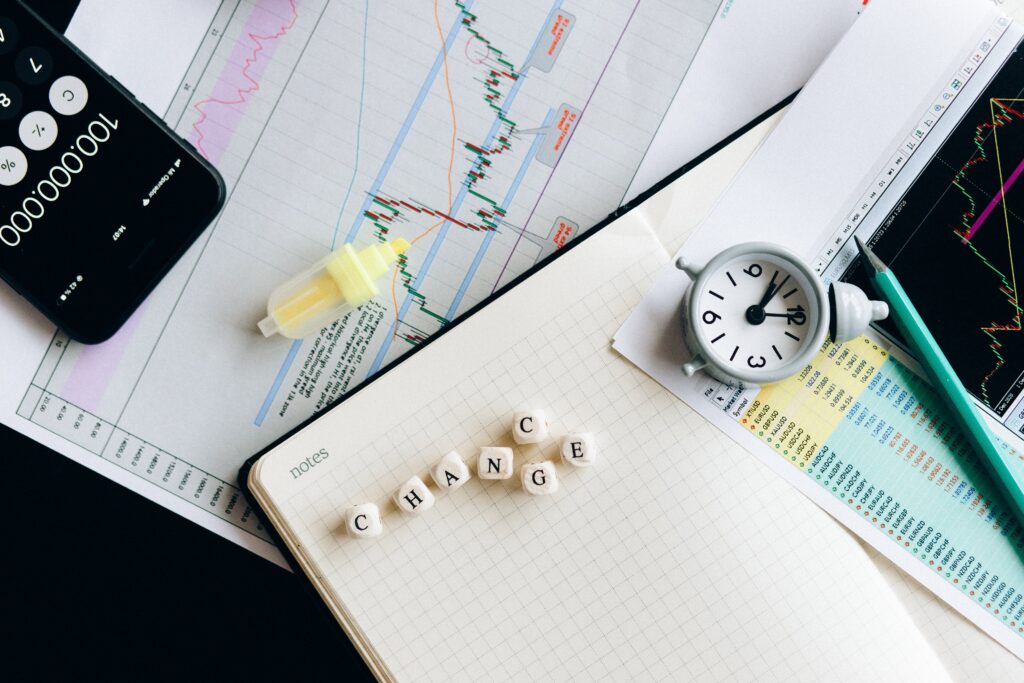
Fundamental analysis is a crucial aspect of cryptocurrency day trading. It involves evaluating the intrinsic value of a cryptocurrency by analyzing various underlying factors that could impact its price and market value. Here are some key things you should know about fundamental analysis in the crypto market:
- Research and Analysis: Successful day traders need to conduct thorough research and collect information about the cryptocurrency they are interested in. This includes analyzing the project’s whitepaper, team members, partnerships, roadmap, market competition, and its overall vision.
- News and Announcements: Staying updated with the latest news and announcements related to cryptocurrencies is essential. Major developments, milestones, news of partnerships or collaborations, regulatory updates, or any positive/negative events can significantly influence the price movement.
- Market Demand: Assessing the market conditions pertaining to a particular cryptocurrency is crucial. Factors such as increasing/decreasing demand, trading volume trends, liquidity, and adoption rates play a crucial role in determining its potential growth.
- Technology and Use Case: Understanding the underlying technology and use case of a cryptocurrency is important for valuation. Evaluating the applicability of blockchain technology, scalability solutions, decentralized features, security protocols, and real-world utility of the cryptocurrency can provide insights into its future prospects.
- Financial Metrics: Examining financial indicators helps determine a cryptocurrency’s financial health and sustainability. This may include assessing profitability ratios, revenue streams generated by software or solutions powering the coin/token ecosystem, market capitalization, token supply mechanisms (inflationary vs. deflationary), and considering any token burns or buybacks implemented by the project’s team.
- Community Support: Evaluating the strength and vitality of a cryptocurrency’s community is valuable for making informed decisions. Observing social media presence/activity, user engagement levels, developer community interest/participation through GitHub contributions, or project-related forums provides insight into a coin’s long-term viability.
- Regulatory Landscape: Monitoring the current and potential regulatory environment is crucial in assessing the risk associated with a particular cryptocurrency. Changes in legislation, government initiatives, pro-crypto or anti-crypto sentiments can have significant impacts on market sentiment and price movement.
Remember, fundamental analysis should be used in conjunction with other analysis approaches (such as technical analysis) to make well-rounded trading decisions. Continuous learning, adapting strategies based on new information, anticipating trends, and having a disciplined approach are key to successful crypto day trading.
Technical Analysis Techniques for Crypto Day Trading

Technical analysis involves studying historical price and volume data to analyze and predict future price movements. Here are some commonly used techniques in technical analysis for crypto day trading:
- Candlestick patterns: Candlestick charts visually represent the high, low, opening, and closing prices of a cryptocurrency within a specific time span. Various patterns, such as doji, hammer, engulfing, etc., can indicate potential reversals or continuation of the current trend.
- Support and resistance levels: Support levels represent the price point at which buying pressure tends to outweigh selling pressure, preventing the price from falling further. Resistance levels are the opposite, indicating a price point where selling pressure exceeds buying pressure. Identifying these key levels helps traders make decisions about entering or exiting trades.
- Moving averages: Moving averages (MA) are used to smoothen out market noise and identify trend direction. The most commonly used MA is the simple moving average (SMA), which calculates the average price over a specified period. Traders often look for crossovers between different MA periods as potential entry or exit signals.
- Relative Strength Index (RSI): RSI is a momentum indicator that measures the speed and change of price movements. It oscillates between 0 and 100 and is commonly used to identify overbought or oversold conditions in a cryptocurrency’s market. Traders may use RSI to anticipate potential trend reversals.
- Moving Average Convergence Divergence (MACD): MACD is another popular momentum indicator that shows the relationship between two moving averages of a cryptocurrency’s price. It consists of two lines – the MACD line and the signal line – along with a histogram. Traders will look for crossovers and divergences between these lines for buy/sell signals.
- Fibonacci retracement: Based on the Fibonacci sequence, retracement levels are horizontal lines drawn on a chart indicating potential areas of support or resistance. These levels are often used to identify target entry or exit points during a retracement before the price continues in its original direction.
- Volume analysis: Analyzing trading volume along with price can help confirm the strength of a trend or indicate potential reversals. Increasing volume during an uptrend suggests growing buyer interest, while decreasing volume could indicate weakening momentum.
- Chart patterns: Various chart patterns, such as triangles, flags, head and shoulders, etc., provide insights into potential price movements. For example, a bullish flag pattern may suggest a continuation of an uptrend, while a head and shoulders pattern might indicate a trend reversal.
- Trendlines: Trendlines are drawn by connecting consecutive high or low points on a chart. An ascending trendline represents an uptrend, while a descending trendline indicates a downtrend. Breakouts or breakdowns from these trendlines can serve as potential entry or exit points.
Remember, technical analysis is not foolproof and should be used as part of a comprehensive trading strategy. Market sentiment, news events, and other factors can influence price movements beyond what is captured by these techniques.
The Most Volatile Cryptocurrencies for Day Trading

When it comes to day trading in the volatile world of cryptocurrencies, there are several digital currencies that tend to showcase exceptionally high volatility levels. These highly unpredictable price movements present both opportunities and risks for traders seeking to make quick profits. Here’s an account of a few of the most volatile cryptocurrencies known for their wild price swings:
Bitcoin (BTC): As the pioneer of cryptocurrencies, Bitcoin boasts unparalleled levels of volatility. Over the years, it has witnessed dramatic price rallies and sudden plunges, making it enticing for day traders. The market sentiment plays a pivotal role in determining Bitcoin’s price movements, often resulting in significant intraday fluctuations.
Ethereum (ETH): As the second-largest cryptocurrency by market capitalization, Ethereum has a reputation for its volatility. The coin’s value is influenced by several factors such as investor sentiment, adoption rates, technological advancements, and regulatory developments. Its historic price surges and pullbacks have been highly appealing to day traders.
Ripple (XRP): Ripple faces increased price volatility due to its focus on partnerships with banks and financial institutions. News surrounding XRP’s utility and adoption greatly impact its value, leading to fluctuations within short time frames. Some rumors or announcements related to Ripple’s integration into global payment systems can emerge out of nowhere and significantly affect day traders’ decisions.
Litecoin (LTC): Known as the “silver to Bitcoin’s gold,” Litecoin is renowned for relishing fast and significant price fluctuations. Litecoin’s lesser market capitalization compared to Bitcoin allows more responsive shifts in valuation based on market trends, making it an enticing choice for day traders seeking high volatility.
Dogecoin (DOGE): Originally created as a meme cryptocurrency, Dogecoin has built substantial popularity among crypto enthusiasts due to its extraordinary price moves influenced by social media hype. Any tweet or mention from influential figures can lead to dramatic price jumps or drops within moments.
Binance Coin (BNB): Native to the Binance exchange, BNB’s value exhibits notable price swings due to its proportional relationship with user activity on the platform. Shifts in trading volumes, news about new exchange features, or changes in Binance’s policies tend to provoke substantial short-term price volatility.
While these cryptocurrencies are indeed known for their high volatility, it’s important to note that day trading any asset, including cryptos, carries inherent risks. Volatility brings both opportunities for significant gains but also potential losses. Therefore, it’s crucial for day traders to have a thorough understanding of the market, employ proper risk management strategies, and use reliable analysis tools to navigate this exciting yet unpredictable terrain.
Risk Management Strategies for Crypto Day Traders

Risk management is crucial for crypto day traders to protect their investments and navigate the volatile cryptocurrency market. Here are some important risk management strategies for crypto day traders:
- Diversify your portfolio: Spreading your investments across various cryptocurrencies can help minimize the impact of potential losses on a single asset. This strategy allows you to take advantage of different market opportunities and reduces your exposure to any one specific coin.
- Set realistic goals: Avoid setting unrealistic profit expectations that might tempt you to make impulsive and risky trading decisions. Establish achievable goals based on thorough analysis and market conditions to prevent overtrading or chasing quick gains.
- Use stop-loss orders: A stop-loss order places an automatic sell order when a cryptocurrency’s price reaches a predetermined level. By setting stop-loss orders, traders can limit potential losses by exiting positions before they drop further. It is essential, though, to determine appropriate stop-loss levels based on careful analysis rather than arbitrary figures.
- Set profit targets: Similarly, establishing profit targets can help prevent greed-driven trading behavior. Determine reasonable profit levels based on thorough research and adjust them as market conditions change. When a coin reaches your desired profit level, consider reassessing its potential for further gains before deciding whether to sell or hold.
- Employ proper position sizing: Determine the amount of capital to allocate for each trade based on established risk tolerance levels. Avoid allocating a disproportionate amount in a single trade, as it can lead to overwhelming losses in case of unpredictable market fluctuations.
- Utilize risk-to-reward ratio analysis: Evaluate potential trades by comparing the potential profit against possible losses. Maintaining a positive risk-to-reward ratio means aiming for trades where potential profits outweigh possible losses. Conducting comprehensive technical and fundamental analysis assists with identifying potential trades with favorable risk-to-reward ratios.
- Stay informed and updated: Regularly monitor news, market sentiments, and technical indicators related not only to cryptocurrencies but also to broader financial markets. Remaining informed can provide insight into potential risks, regulatory changes, and external factors influencing cryptocurrencies’ value. This knowledge helps make more informed trading decisions.
- Constantly monitor trades: Day trading requires active monitoring of open positions and market conditions. Stay managed in real-time with suitable charting and analytical tools to react promptly to unexpected market movements or news events.
- Implement risk management rules consistently: The most essential aspect of risk management is applying the strategies mentioned above consistently. Be disciplined and avoid emotionally driven decision-making. Consistency minimizes the impact of impulsive behaviors or short-term market fluctuations on long-term investment strategies.
By integrating these risk management strategies into their trading routine, crypto day traders can mitigate potential losses, minimize risks, maximize potential rewards, and build a more sustainable approach towards cryptocurrency trading.
The Role of Bots in Crypto Day Trading: Pros and Cons

The Role of Bots in Crypto Day Trading: Pros and Cons
In recent years, cryptocurrency trading has gained significant popularity among both casual investors and seasoned traders. With this surge, the integration of bots in crypto day trading has also increased. These automated tools are designed to execute trades on behalf of traders, leveraging technical indicators and algorithms to make speedy decisions. However, like any other trading strategy, there are pros and cons associated with using bots for crypto day trading.
Pros:
- Speed and Efficiency: Bots can analyze vast amounts of data within seconds, making them ideal for swiftly identifying profitable trading opportunities. With their lightning-fast execution capabilities, bots can place trades at the optimal moment, helping traders achieve better outcomes.
- Emotionless Trading: One significant advantage of bots is their ability to remove emotions from the trading equation. These tools operate based on predefined parameters and rules set by the trader. By eliminating emotional decisions prompted by greed or fear, bots can potentially reduce the influence of subjective biases on trading outcomes.
- Constant Monitoring: Since crypto markets operate 24/7, it is practically impossible for traders to track market fluctuations consistently. Bots can solve this issue by continuously monitoring market trends in real-time without rest. This perpetual vigilance allows traders to seize profitable trading opportunities even when they are unable to actively engage in monitoring.
- Backtesting Capabilities: Bots often come equipped with backtesting features, enabling traders to test various strategies against historical data. This can provide valuable insights into the effectiveness of a particular trading approach without risking real capital. Traders can fine-tune their strategies based on past performance before deploying them in live trading.
Cons:
- Technical Glitches: Despite their potential benefits, bots are not immune to technical glitches or malfunctions. Errors can occur due to faulty algorithms or temporary issues with exchange connectivity. Traders relying solely on bots must be prepared for such risks and monitor the bots’ functioning to avoid any detrimental impact.
- Lack of Adaptability: Bots are programmed with specific instructions, but they may struggle to adapt to sudden market shifts or unforeseen events. Major news releases or significant price fluctuations can overwhelm the algorithms, potentially leading to poor decision-making. Human traders often possess the intuition and adaptability necessary to adjust their strategies promptly in such situations.
- Algorithm Limitations: It’s important to remember that bots operate based on predefined algorithms. There is always a possibility that market conditions or new trends might not align favorably with the programmed algorithm’s parameters. In such cases, manually adjusting or fine-tuning the bot’s settings becomes necessary, requiring constant monitoring and intervention.
- Lack of Instinctual Judgment: While removing emotions from trading decisions can be advantageous, it also means missing out on potential opportunities that only human intuition can perceive. Bots rely solely on quantitative analysis and cannot factor in qualitative aspects or market sentiment that human traders may consider when making investment choices.
Understanding these pros and cons of employing bots for crypto day trading allows traders to make more informed decisions regarding their trading strategies. By blending the strengths of automated tools with human judgment, traders can enhance their chances of success in this dynamic and rapidly evolving crypto market environment.
Utilizing Moving Averages for Effective Crypto Trades

When it comes to effective crypto trades, one of the popular methods utilized by traders is using moving averages. Moving averages (MAs) are visual indicators that show the average price of a specific cryptocurrency over a set period of time. By analyzing moving averages, traders aim to identify potential trends and make informed trading decisions.
Moving averages are calculated by taking the sum of the prices within a specified timeframe and dividing it by the number of data points in that period. The resulting value represents the average price over that time frame and is displayed graphically on a chart.
Traders often use two main types of moving averages — simple moving averages (SMA) and exponential moving averages (EMA). A simple moving average applies equal weightage to all data points in the defined period, while exponential moving averages assign more significance to recent prices.
One approach at utilizing moving averages for effective crypto trades entails examining crossover signals. Crossover occurs when a shorter-term moving average, such as the 50-day MA, crosses upward or downward over a longer-term one, like the 200-day MA. This event is interpreted by chartists as a signal that momentum is changing and can indicate a potential buying or selling opportunity.
Bullish crossovers happen when the shorter-term MA surpasses the longer-term MA from below, suggesting that buying pressure may be increasing. This could indicate a favorable entry point for traders. On the other hand, bearish crossovers occur when the shorter-term MA falls below the longer-term MA, indicating potential selling pressure and possibly signaling an advisable exit for traders.
While crossover signals provide preliminary indications, they are not foolproof strategies on their own. Traders often combine them with additional technical analysis tools, such as volume indicators or support and resistance levels, for confirmation and to reduce false signals. Essentially, moving averages serve as complementary indicators amidst a broader analysis approach.
Moreover, it’s important to note that different timeframes for moving averages are used based on the trading strategy. Short-term traders may favor shorter MA periods (e.g., 10-day, 20-day), while long-term investors may rely on longer MA periods (e.g., 100-day, 200-day).
In conclusion, moving averages serve as valuable tools for effective crypto trades. By monitoring crossover signals and considering multiple timeframes, traders can gain insight into potential trend reversals and make more informed trading decisions. However, it is crucial to combine these indicators with other analytic techniques and never rely solely on moving averages for successful trading in the cryptocurrency market.
Importance of News and Social Media Sentiment in Day Trading Cryptocurrencies
When it comes to day trading cryptocurrencies, staying abreast of the latest news and understanding social media sentiment are paramount for success. The fast-paced and volatile nature of the cryptocurrency market demands constant monitoring and analysis of news updates and online chatter. Here are a few reasons why the importance of news and social media sentiment cannot be understated in this domain:
- Market Awareness: News helps traders remain aware of key events or developments occurring within the crypto space, both at a global scale and specific to individual cryptocurrencies. Such awareness is vital for making informed trading decisions, as market trends often follow major news announcements.
- Price Volatility: Cryptocurrencies are highly sensitive to news events, causing significant price fluctuations. Major regulatory decisions, technological breakthroughs, security breaches, or even celebrity endorsements can cause the market to react drastically. Traders need to be aware of such occurrences to capitalize on price movements during day trading, thereby achieving profitable outcomes.
- Fundamental Analysis: News provides essential insights that allow traders to conduct fundamental analysis. It helps them understand the factors affecting a cryptocurrency’s value and its long-term growth potential. For instance, updates related to adoption by mainstream businesses or potential partnerships greatly impact investment decisions.
- Technical Analysis Confirmation: While technical analysis focuses on charts, indicators, and historical price patterns; news acts as a confirming or negating factor for these analyses. An impact from unexpected news can disrupt any chart-based prediction. Therefore, juxtaposing technical analysis with the latest news assists in refining day trading strategies.
- Rumor Control: In a world driven by social media, cryptocurrencies are particularly vulnerable to rumors and false information disseminated across various platforms. Monitoring social media sentiment aids in separating factual news from baseless rumors and can prevent hasty trading decisions based on questionable sources.
- Sentiment Analysis: Social media platforms abound with conversations surrounding cryptocurrencies. Using sentiment analysis tools allows traders to gauge the overall positive, negative, or neutral sentiment prevailing in the online discussions. This insight helps traders speculate on how social behavior may impact trading decisions and potentially influence market movements.
- Technological Advancements: News about technological innovations, upgrades, or vulnerabilities in the crypto space greatly shape market trends. Emerging technologies like blockchain interoperability protocols, sustainability measures, or novel consensus algorithms can significantly impact the value of cryptocurrencies. Staying updated with such advancements gives traders a competitive edge.
- Regulatory Landscape: Regulations play a crucial role in shaping the cryptocurrency landscape. News regarding governmental regulations, country-wise regulations, or central bank interventions impacts market sentiment and price trends. By understanding the regulatory developments around different cryptocurrencies, traders can anticipate potential risks and opportunities.
In summary, news and social media sentiment are indispensable tools for day traders seeking success in crypto markets. Timely news updates and sentiment analysis assist traders in making informed decisions, better predict market trends, mitigate risks, and identify opportunities for profitable day trades. Ignoring these factors can expose traders to unnecessary risks and increase their chances of missing out on potentially lucrative trading opportunities.
Top Crypto Exchange Platforms for Day Traders: Features and Fees Comparison
When it comes to top crypto exchange platforms for day traders, there are several options to consider. These platforms offer a variety of features and fees that cater to the needs of day traders in the crypto market.
One popular platform is Binance. Binance provides a user-friendly interface and supports a wide range of cryptocurrencies. It offers advanced trading tools such as limit orders, stop-limit orders, and API integration for automated trading. Binance also provides access to margin trading, futures trading, and options trading for more experienced traders. The fees on Binance vary based on the trading volume and can be reduced further if paid with their native cryptocurrency, BNB.
Another notable platform is Coinbase Pro (formerly known as GDAX). Coinbase Pro focuses on security and reliability, offering insurance coverage for digital assets stored on their platform. It provides intuitive trading features like market orders and limit orders to assist day traders in executing fast trades. However, Coinbase Pro has a limited selection of cryptocurrencies compared to other exchanges. The fees on Coinbase Pro depend on the size of the trade and can be relatively high for smaller trades.
Kraken is another prominent exchange for day traders. Kraken boasts a robust trading engine with fast order execution and advanced charting tools. It offers different order types like market orders, stop orders, and take-profit limit orders. Kraken’s fee structure is based on a tiered system determined by the 30-day trade volume, which rewards high-volume traders with reduced fees.
For those interested in futures trading, BitMex is a widely used platform amongst day traders. BitMex specializes in leveraged trading with cryptocurrencies and provides features like perpetual contracts and futures contracts with up to 100x leverage. It offers a lightning-fast trading engine and provides detailed profit/loss calculations right on their interface. However, BitMex does not have many altcoin options available for trading, focusing primarily on Bitcoin-based contracts.
Day traders may also find attractive features on platforms like Huobi, Bybit, or FTX. However, their fee structures and offerings may differ, so it’s important to thoroughly research each platform and its benefits before making a decision.
In the competitive crypto market, choosing the right exchange platform as a day trader plays a crucial role in achieving profitability. Considering factors such as available cryptocurrencies, trading tools, fees, security measures, and supported trading options can help day traders make informed decisions according to their individual requirements and preferences.
The Psychology of Day Trading Cryptocurrencies: Overcoming Emotional Hurdles

The psychology of day trading cryptocurrencies is a crucial aspect that requires attention and understanding. Emotional hurdles play a significant role in this field, and traders must be equipped to effectively overcome these challenges.
- Fear and Greed:
Fear and greed are two powerful emotions that dominate the decision-making process of day traders in the crypto market. Fear often arises when there is a drop in prices or unexpected market events, leading to a tendency to sell impulsively and incur losses. Conversely, greed can arise when prices are rapidly rising, causing traders to seize opportunities for quick gains without proper analysis. - FOMO (Fear of Missing Out):
FOMO is a common emotional hurdle in cryptocurrency day trading where traders feel the need to jump into trades out of fear of missing profitable opportunities. This fear often stems from witnessing others’ success or watching a particular cryptocurrency’s price soaring. FOMO can cause impulsive and irrational trading decisions driven more by emotion than logical analysis. - Patience and Discipline:
Successful day traders understand the importance of patience when waiting for the right trading opportunities. Emotionally driven impatience can lead to entering trades prematurely or exiting too soon due to fear or insecurity. Maintaining disciplined trading practices involves adhering to a predefined strategy, regardless of impulsive temptations or unfavorable market conditions. - Cognitive Biases:
Cognitive biases are deeply ingrained psychological tendencies that can significantly impact decision-making in day trading cryptocurrencies. Common biases include confirmation bias (seeking information that supports existing beliefs), hindsight bias (believing “knew it all along” after an event), and anchoring bias (relying excessively on initial pieces of information). It’s crucial for traders to recognize and actively mitigate the impact of such biases. - Overtrading:
Emotional hurdles often contribute to overtrading, which refers to excessive and unnecessary buying and selling within short durations. Overtrading can be driven by a fear of missing profitable opportunities or the desire for quick gains. This behavior can lead to unnecessary transaction costs, increased risk exposure, and deteriorating decision quality. - Emotional Management Techniques:
Overcoming emotional hurdles requires learning various techniques to manage emotions effectively during day trading. These may include maintaining a trading journal to reflect on emotions post-trade, practicing meditation or mindfulness to increase self-awareness, setting realistic expectations to counter FOMO and excessive excitement, and creating a support network of fellow traders or mentors who can provide guidance and perspective. - Continuous Learning:
To build psychological resilience within the day trading realm, continuous learning is vital. Traders should focus on understanding market dynamics, technical analysis, and fundamental factors affecting cryptocurrency prices. Enhancing knowledge empowers traders to make informed decisions based on rational analysis rather than impulsive emotional responses.
The psychology of day trading cryptocurrencies and overcoming its emotional pitfalls isn’t an easy feat. Recognizing and addressing these emotional hurdles is essential for traders looking to elevate their skills, remain objective during turbulent times, and increase their chances of success in the dynamic crypto market.
Beyond Bitcoin: Exploring Altcoins for Day Trading Opportunities
Beyond Bitcoin: Exploring Altcoins for Day Trading Opportunities
The world of cryptocurrency goes far beyond just Bitcoin. In recent years, the emergence of various alternative cryptocurrencies, also known as altcoins, has provided traders with a plethora of new investment opportunities. These altcoins offer unique features, promising returns, and diverse applications that go beyond what Bitcoin initially introduced to the market.
Altcoins, by definition, encompass all cryptocurrencies other than Bitcoin. While they may share some basic principles with Bitcoin, such as being decentralized and utilizing blockchain technology, they often diverge in terms of underlying mechanisms and goals. Given their significantly lower market capitalization compared to Bitcoin, altcoins enjoy greater volatility and have the potential to present quicker gains or losses for day traders.
Engaging in day trading within the altcoin market requires an understanding of some essential factors. Firstly, it is crucial to grasp the basics of technical analysis. As altcoin prices can be highly influenced by short-term factors, studying chart patterns, trend lines, moving averages, and other indicators can help traders make more informed decisions.
Due diligence is paramount when seeking out potential day trading opportunities among altcoins. Comprehensive research is necessary to evaluate an altcoin’s fundamentals, including its team’s experience and track record, whitepapers outlining its purpose, target market segment, technological innovation, competition, and liquidity among exchanges.
Market sentiment also plays a crucial role in trading altcoins. Crypto communities thrive on various platforms like social media channels and forums, where discussions about altcoin projects generate buzz and influence sentiment. Remaining updated on news surrounding a particular altcoin or relevant industry developments can assist day traders in capitalizing on market sentiment shifts.
Considering altcoin seasonality is another essential aspect. The cryptocurrency market experiences phases where certain types of coins gain more attention based on investor sentiments or special events. Knowing these historical trends can provide traders with insight into which specific altcoins might see price movements worth capitalizing on.
With thousands of altcoins in existence today, traders need to determine which ones are worth considering for day trading opportunities. Despite their inherent risks, altcoins like Ethereum (ETH), Ripple (XRP), and Litecoin (LTC) have transcended Bitcoin’s shadow and established strong market presence. These well-known cryptocurrencies generally exhibit higher liquidity, more stable networks, and wider adoption rates compared to lesser-known altcoins. Keeping an eye on news specific to these influential altcoins can help traders identify windows of potential profitability.
In summary, the world of cryptocurrencies extends beyond Bitcoin, offering countless altcoins for day trading enthusiasts. To maneuver these lively markets successfully, traders need to equip themselves with technical analysis skills, engage in sufficient due diligence, stay updated with market sentiment, and analyze historical trends. Armed with comprehensive knowledge and a risk management strategy in place, day trading altcoins can potentially yield substantial returns for those willing to navigate this exciting and ever-evolving market.
Scalping Strategy in Cryptocurrency Trading: A Comprehensive Guide

Scalping strategy in cryptocurrency trading is a popular and advanced approach that focuses on making quick profits from short-term market price movements. Such movements occur within a few minutes, hours, or sometimes even seconds. Scalpers aim to capture multiple small profits while minimizing their exposure to market volatility.
To engage in scalping, traders closely watch the market’s short-term trends and fluctuations using tools such as technical analysis indicators, charts, and real-time order books. By identifying patterns, support and resistance levels, and market liquidity, scalpers seek to exploit price inefficiencies for fast gains.
Timing and speed are crucial in scalping strategy. Traders execute rapid trades, leveraging high-speed trading platforms and advanced algorithmic programs known as trading bots. These tools help automate the process of placing orders according to pre-determined criteria, enabling scalpers to respond swiftly to market data changes.
Risk management plays a vital role due to the inherent volatility of cryptocurrencies. Scalpers often allocate small position sizes to each trade, reducing potential losses if the market moves unfavorably. Scalping often requires consistent monitoring and an ability to enter and exit positions promptly.
Liquidity is another crucial factor for successful scalping. Cryptocurrency pairs with higher trading volumes generally ensure better execution of trades. Liquid markets offer narrow bid-ask spreads, allowing scalpers to capitalize on more favorable price differentials.
Scalping strategy requires distinct psychological traits like discipline, focus, and emotional control. Rapid decision-making, managing stress during hectic trading sessions, and staying committed to strict entry and exit rules define a successful scalper’s mindset.
It’s important for scalpers to keep abreast of the latest news related to cryptocurrency markets as they can significantly impact price movements. Market sentiment shifts due to regulatory announcements, hackings, company partnerships, and various other factors can create profitable opportunities or increased risks for scalping strategies.
While scalping strategy promotes profitability through frequent small gains, it requires careful consideration of transaction costs. Frequent trading usually entails higher commission fees and potential slippage, which can eat into profits. Thus, it’s advisable for scalpers to choose cryptocurrency exchanges with competitive fee structures and high order execution capabilities.
Scalping strategy should be employed judiciously alongside risk management techniques. Although less exposed to market risks during short durations, it requires constant vigilance and adaptation to ever-changing market conditions. Successful scalping depends on accuracy in predicting short-term price movements—schooling yourself in technical analysis and continuously refining your abilities will play a crucial role in mastering this strategy.
Overall, scalping strategy can be an effective approach for traders looking to take advantage of quick profit opportunities presented by cryptocurrency markets. However, it requires specialized knowledge, experience, focus, and discipline to overcome challenges associated with rapid decision-making, liquidity conditions, transaction costs, and overall market volatility.
The Impact of Regulations on Crypto Day Trading Strategies

Regulations play a crucial role in shaping the landscape for crypto day trading strategies. As cryptocurrencies have gained popularity, governments around the world are increasingly adopting measures to regulate this emerging market. These regulations can significantly impact the way traders approach and execute their day-to-day trading activities. Here are some key aspects to consider when discussing the impact of regulations on crypto day trading strategies:
- Compliance Requirements: Regulations often introduce compliance obligations for trading platforms and individuals involved in crypto trading. This means traders must adhere to certain rules and guidelines, such as KYC (Know Your Customer) and AML (Anti-Money Laundering) procedures. These requirements can potentially reduce anonymity in transactions but also enhance security and protect the market from illicit activities.
- Trading Restrictions: Regulatory authorities may impose limitations on certain types of trading activities. For instance, they might restrict margin trading or set limits on daily trading volumes. Such rules aim to prevent excessive speculation that may destabilize the market or increase systemic risk. Traders need to observe these restrictions and adjust their strategies accordingly.
- Reporting Obligations: Regulations often necessitate regular reporting of financial information or trades above a certain threshold. This transparency can assist regulators in monitoring and supervising the market effectively but also enables taxation authorities to ensure proper accountability. Crypto day traders must be aware of these reporting obligations to avoid potential penalties or legal complications.
- Investor Protection: Depending on regional regulations, investor protection measures can vary greatly. Stronger regulations tend to impose strict qualifying criteria for crowdfunding or initial coin offerings (ICOs). These requirements aim to safeguard retail investors from fraudulent schemes and scams, ensuring a more transparent investment ecosystem.
- Market Volatility Control: Authorities may try to stabilize crypto markets by implementing circuit breakers or other mechanisms designed to pause trading during extreme price volatility. While these measures curb excessive risk-taking, they can disrupt a day trader’s ability to capitalize on sudden price movements or execute planned trading strategies.
- Global Impact: Traders engaging in cross-border activities must contend with regulations from multiple jurisdictions. Each country may have different rules, classification of digital assets, tax implications, and reporting frameworks. Navigating these diverse regulatory landscapes requires extra diligence and a more comprehensive understanding of the legal environment.
- Innovation Potential: Contrary to popular belief, regulations can also stimulate innovation and market growth. Clear guidelines and well-defined legal frameworks provide confidence to entrepreneurs and investors alike, attracting more participants to the market. As regulatory frameworks mature, new opportunities arise through compliant financial products like crypto ETFs or regulated exchanges that further enhance day trading possibilities.
Awareness of the regulatory landscape and staying up-to-date with ever-evolving rules becomes critical for day traders seeking long-term success in the crypto markets. Compliance with regulations not only ensures a level playing field but also contributes to the overall maturity, stability, and mainstream recognition of cryptocurrencies as a legitimate asset class.
Building an Effective Daily Routine as a Successful Crypto Trader
Building an effective daily routine is crucial for any successful crypto trader. It helps in maintaining discipline, managing time efficiently, and staying abreast of the rapidly changing crypto market news. Here are some key factors to consider when crafting your daily routine as a crypto trader:
- Start with morning rituals: Begin your day by establishing morning rituals that can set a positive tone for the rest of the day. This may include exercising, meditation, reading educational materials, or even enjoying a healthy breakfast. Such activities can enhance focus and mental clarity, preparing you for the trading day ahead.
- Stay informed through research: To be successful in the volatile cryptocurrency market, keeping up with the latest news and market analysis is essential. Allocate time each morning to research and stay informed about economic events, emerging technologies, regulatory changes, and any other relevant information impacting crypto markets. This will help you make more informed decisions during your trading sessions.
- Develop a trading plan: Before diving into the crypto market, develop a comprehensive trading plan. Determine your investment goals, risk tolerance, preferred trading strategies, and the types of cryptocurrencies you wish to invest in or trade. Setting specific objectives allows you to focus on tasks that align with your overall strategy.
- Analyze market trends: Spend time analyzing market trends using technical analysis tools and related indicators that can offer valuable insights about historical patterns or potential future price movements. Reviewing charts and past performance can aid in identifying trends and establishing entry/exit points for your trades.
- Monitor news and social media: Continuously monitor crypto market news through reliable sources and social media platforms known for their active crypto communities. Be attentive to announcements by major influencers, developments related to specific cryptocurrencies or blockchain projects, or any other factors that may significantly impact prices or market sentiment.
- Regularly review your portfolio: Set aside time each day to assess your portfolio’s performance and identify opportunities for adjustments if needed. Keep track of your investments and trading outcomes to evaluate your overall strategies and gauge your progress towards your goals.
- Create dedicated trading sessions: Instead of trading sporadically throughout the day, allocate specific time slots for trading sessions. This practice helps in maintaining focus, preventing burnout, and minimizing potential distractions that may affect your decision-making abilities.
- Practice risk management: Embrace proper risk management in your daily routine. Define the maximum amount of capital you are willing to risk on each trade and implement stop-loss orders to guard against significant losses. Smartly managing risks will protect your capital and ensure long-term sustainability.
- Cultivate an analytical mindset: As a crypto trader, cultivating an analytical mindset is paramount. Dedicate time for expanding your knowledge and skills through reading books, attending online courses, or participating in educational webinars. Sharpening your analysis abilities will boost your ability to identify profitable opportunities and refine your trading strategies.
- Close the day with a review: Wrap up each day by conducting a review of your trades, portfolio performance, and lessons learned from the day’s activities. Identify mistakes, successes, and areas requiring improvement. This habit fosters continuous learning and growth as a crypto trader.
By adopting these key practices into your daily routine, you can enhance your effectiveness as a crypto trader while intelligently navigating the complex world of cryptocurrency markets. Remember that consistency is essential, and always adapt your routine as you gain experience and adapt to market changes.
Margin Trading in Cryptocurrencies: Strategies and Risks
Margin trading refers to a trading method in the world of cryptocurrencies where individuals can trade with borrowed funds, thus leveraging their investments. It involves borrowing money or digital assets from a trading platform’s lenders and using them as collateral to open larger positions than one’s initial capital would allow. This practice offers potential benefits but also carries significant risks.
One key strategy often employed in margin trading is called leverage. Leverage allows traders to magnify their potential profits by borrowing funds to increase their trading positions. For instance, a trader utilizing 10x leverage can essentially control ten times the value of their original investment. In such cases, even minor price movements may result in substantial gains or losses. However, it is crucial to understand that leverage greatly magnifies the risk associated with a trade, as losses can equally be magnified.
Additionally, margin traders usually have access to long and short positions. In long trades, individuals speculate on an asset’s upward price movement, aiming to sell at a higher price after it appreciates. Conversely, short-selling enables traders to speculate on an asset’s decline in value by selling borrowed assets and then repurchasing them at a cheaper price. Both strategies can be effective in appropriate market conditions but require careful consideration and accurate predictions.
While margin trading presents unique opportunities, it also poses significant risks that traders must be aware of. First and foremost, being leveraged means increased exposure to losses when the market moves against your bet. Losses can surpass your initial investment, leading to debt obligations and margin calls demanding additional funds or asset liquidation to cover losses.
Moreover, the highly volatile nature of cryptocurrency markets amplifies both potential profits and losses when engaging in margin trading. Cryptocurrencies tend to experience significant price fluctuations within short periods due to various factors such as news events, regulatory developments, or market speculation. Such volatility can quickly erode funds if risk management strategies are not effectively implemented.
Furthermore, timing plays a vital role in margin trading. Traders must be skilled at accurately judging market movements to maximize profits and avoid unnecessary losses. Incorrect predictions or market turbulence can swiftly wipe out gains or expose traders to substantial debts.
It is of utmost importance to conduct thorough research before participating in margin trading and familiarize oneself with the specific rules, fees, and margin requirements of the exchange platform being used. Understanding various technical indicators, following news closely, and utilizing stop-loss orders are essential practices to minimize risks.
In conclusion, margin trading allows traders to execute larger orders with limited initial capital by leveraging borrowed funds. While this strategy may provide significant opportunities in the crypto market, it comes with substantial risks that can lead to substantial financial repercussions. Traders must approach margin trading cautiously, discerningly analyze market trends, and establish proper risk management protocols to enhance their chances of success while limiting potential losses.
Analyzing Market Depth Charts for Better Trade Decisions in Crypto

Analyzing Market Depth Charts for Better Trade Decisions in Crypto
Market depth charts, also known as order books, are crucial tools used by traders to understand the supply and demand dynamics of a particular cryptocurrency. These charts visually represent the buy and sell orders placed at various price levels, helping traders make informed decisions regarding buy or sell orders. Here’s everything you need to know about analyzing market depth charts for better trade decisions in the crypto market.
Market Order Book Visualization:
Market depth charts typically feature two sections: the buy side (bids) and the sell side (asks) of the order book. The horizontal axis represents the price levels, while the vertical axis displays the cumulative quantity available at each level. The chart essentially shows supply (sell orders) on the left and demand (buy orders) on the right.
Understanding Price Levels:
Each level in a market depth chart represents a specific price point at which traders are willing to buy or sell a particular cryptocurrency. The second dimension, exhibited by the vertical axis, showcases the total quantity available at that particular price.
Bid Orders:
The bid side of the chart displays purchasing interest at different price levels. Traders who want to buy will place bids with their desired purchase price and quantity. As you move higher on the vertical axis, you encounter bids offering lower purchase prices or smaller quantities.
Ask Orders:
On the other hand, the ask side illustrates selling interest at various price points. It signifies traders who wish to sell their holdings. Similar to the bid side, asks with higher prices or larger quantities tend to be closer to the top on this vertical axis.
Market Order Imbalances:
Analyzing market depth charts allows traders to identify significant disparities between buy and sell orders. If one side has considerably more quantity or greater aggregation levels than the other, it indicates an imbalance in market demand. Such imbalances could provide insights into potential price movements.
Order Book Liquidity:
By assessing market depth charts, traders can estimate the liquidity available at specific price levels. Higher levels of cumulative quantity indicate greater liquidity, which implies easier and faster order execution, minimizing slippage and price impact.
Identifying Support and Resistance Levels:
Market depth charts assist traders in identifying support and resistance levels. Support stands for a price level where demand is relatively high, preventing it from falling further. Resistance corresponds to a price level with intense selling pressure, hindering upward movement. By scrutinizing the order book, traders can pinpoint these significant levels to plan their trades accordingly.
Spotting Walls:
Market depth charts also reveal the presence of “walls.” These walls depict larger orders with specific prices that obstruct the progress of buy or sell orders. Walls are likely to result in short-term price adjustments whenever they are hit.
Real-Time Market Data:
Due to the unpredictable nature of crypto markets, analyzing market depth charts must happen in real-time to grasp the most accurate market sentiment. Many trading platforms and exchanges offer live market depth data, enabling traders to stay updated and make well-informed decisions promptly.
In conclusion, analyzing market depth charts is an essential practice for crypto traders seeking to enhance their trade decisions. Understanding price levels, bid and ask orders, market imbalances, liquidity estimations, support/resistance levels, walls, and real-time data aid traders in grasping the supply-demand dynamics and making prudent trading choices in the fast-moving cryptocurrency world.
Entry and Exit Points: Timing Your Trades in the Volatile Crypto Market

Entry and Exit Points: Timing Your Trades in the Volatile Crypto Market
One of the essential skills every crypto trader must develop is the ability to identify optimal entry and exit points. Timing your trades accurately within the volatile crypto market can significantly impact your chances of making profitable investments. While some may rely on gut feelings or luck, successful traders understand that it takes careful analysis and research to choose the right time to enter and exit their positions.
Entry Point:
The entry point represents the moment you buy a cryptocurrency with the intent to hold it for a specific period. Determining the ideal entry point requires fundamental and technical analysis. It involves examining the crypto’s price history, market trends, news, and project development. By studying charts, indicators, and market sentiment, traders attempt to predict when a cryptocurrency’s price is likely to increase in the future.
Avoiding buying at all-time highs can be crucial as it suggests the potential for a correction or market reversal. Instead, experienced traders often look for price dips or consolidations as opportunities to enter at a lower cost. Identifying support levels—a point where the price has historically had difficulty falling below—can help determine favorable entry points as well. In assessing these factors, traders aim to buy low and sell high for maximum profit potential.
Exit Point:
On the other hand, determining an opportune exit point involves gauging when to sell your cryptocurrency holdings to lock in profits or limit losses. Like identifying entry points, meticulous analysis is necessary here as well. Setting concrete exit targets before entering a trade can help combat emotional decision-making during moments of price volatility.
Technical indicators such as resistance levels, Fibonacci retracement levels, trend lines, and moving averages can provide insights into where prices may encounter selling pressure or face difficulties ascending further. Financial news events that may impact the market should also be taken into consideration when deciding your exit strategy.
Moreover, trailing stop orders can be employed to automatically sell a certain portion of your holdings when the price reaches a pre-set percentage below its peak. This allows profitable trades to continue running while minimizing risks in case of market reversals.
Profit-takers may choose to sell gradually as prices rise or execute a complete exit if they have met their investment goals. On the other hand, stop-loss orders can be used to mitigate potential losses by selling your assets if the market moves against you. Regularly reassessing and adjusting your exit points based on new information and market conditions is vital to optimize profits and minimize losses.
Conclusion:
Determining the ideal entry and exit points is a critical aspect of successful crypto trading. It requires careful consideration of historical data, technical indicators, recent news, and market sentiment. By identifying favorable entry points and defining exit strategies through thorough analysis, traders are better equipped to navigate the volatile crypto market with increased chances of profitability.
Incorporating Ichimoku Clouds for Advanced Crypto Day Trading Strategies
Incorporating Ichimoku Clouds for Advanced Crypto Day Trading Strategies
When it comes to identifying trends and making informed trading decisions in the dynamic cryptocurrency market, incorporating technical analysis tools becomes crucial. Among the various indicators available, one powerful tool that many traders rely on is the Ichimoku Clouds. Developed by a Japanese journalist named Goichi Hosoda, this indicator provides an in-depth visual representation of price action, support/resistance levels, and trend reversals.
The Ichimoku Clouds indicator consists of five lines, each with a specific purpose. They are:
- Tenkan-sen (Conversion Line): This line calculates the average high and low over a specific period (usually 9). It shows short-term trend momentum and potential reversals.
- Kijun-sen (Base Line): Similar to the Tenkan-sen, this line calculates the midpoint of highs and lows over a longer period (usually 26). It acts as a confirmation line indicating whether the market is more bullish or bearish.
- Senkou Span A (Leading Span A): This line forms the upper boundary of what is known as the “cloud” or “kumo.” The Senkou Span A is calculated by averaging the Tenkan-sen and Kijun-sen lines and shifted forward by 26 periods. Traders consider crossovers above this line as bullish signals.
- Senkou Span B (Leading Span B): Just like the Senkou Span A, this line forms an area within the cloud but serves as the lower boundary. Calculated by averaging highs and lows over a longer period (often 52), it also shifted forward by 26 periods. Crossovers below this line are considered bearish signals.
- Chikou Span (Lagging Span): The Chikou Span represents the current closing price but shifted backward by 26 periods. Its purpose is to determine possible areas of support or resistance based on recent price action.
Analyzing the interaction and positioning of these lines provides traders with valuable insights. Here are a few strategies that incorporate Ichimoku Clouds for advanced crypto day trading:
- Cloud Breakout Strategy: This strategy involves waiting for the price to break above or below the cloud. A bullish signal occurs when the price breaks above the cloud, indicating a potential entry point for a long position. Conversely, a bearish signal appears when the price breaks below the cloud, suggesting a short position.
- Momentum Strategy: Traders using this strategy observe crossovers between the Tenkan-sen and Kijun-sen lines that occur above or below the cloud. A bullish signal emerges when the Tenkan-sen crosses above the Kijun-sen outside of the cloud, indicating an opportune moment to enter a long position. Similarly, a bearish signal develops when the Tenkan-sen crosses below the Kijun-sen below the cloud, signaling a potential short position.
- Multiple Time Frame Strategy: Incorporating various time frames can provide more accurate signals. For example, checking the daily chart for trends and using the four-hour chart for entry and exit points can help confirm trades envisaged through other Ichimoku-based strategies.
While Ichimoku Clouds offer comprehensive insight into market conditions and emerging trends, it’s important to test and validate any trading strategy using historical data before implementing it in live trading environments.
Liquidity Mining and Yield Farming as Alternative Strategies for Crypto ProfitsentionPolicy
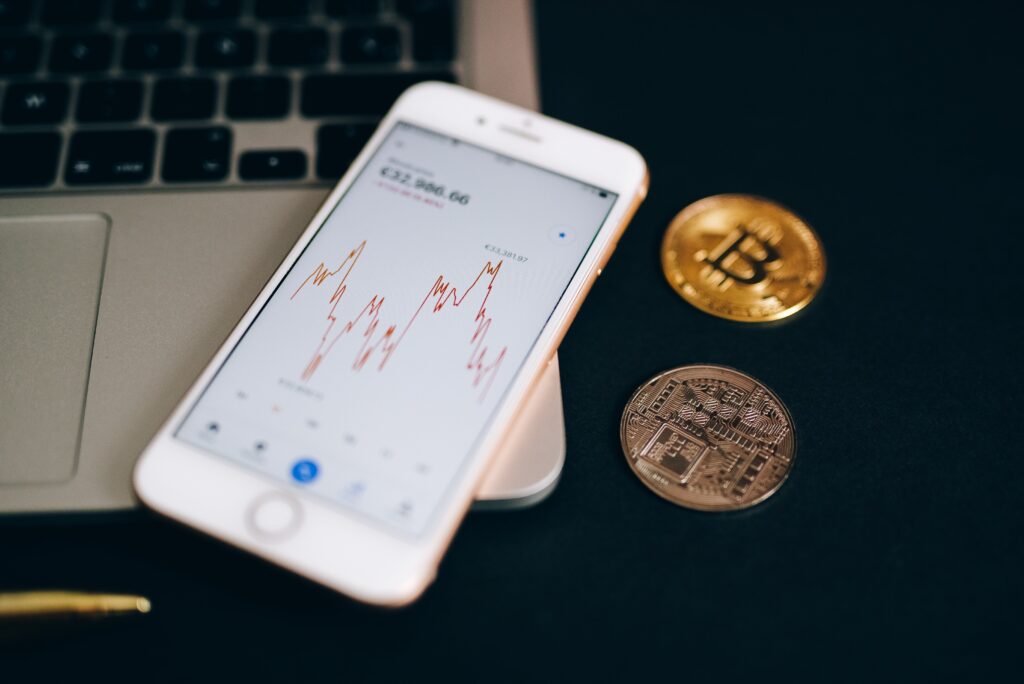
Liquidity mining and yield farming have emerged as alternative strategies for individuals seeking to earn profits in the crypto market. These concepts have gained significant attention recently due to their potential to generate substantial returns.
Liquidity Mining: Liquidity mining refers to the act of providing liquidity to decentralized finance (DeFi) protocols by staking or depositing certain digital assets. By doing so, participants help ensure that these platforms have sufficient liquidity, which is essential for their smooth functioning. In return for offering liquidity, users receive rewards in the form of additional tokens or fees generated by the protocol. These rewards act as an incentive to encourage participation and compensate users for locking up their funds.
Yield Farming: Yield farming can be seen as an extension of liquidity mining. It entails strategically moving funds between different DeFi protocols to maximize returns. Participants utilize various financial opportunities provided by DeFi platforms to maximize yield on their investments. Instead of simply receiving rewards for liquidity provision, yield farmers take advantage of different incentives, such as governance tokens, referral bonuses, or subsidy payouts offered by multiple protocols. By actively managing their positions and timing their moves correctly, yield farmers can potentially obtain higher returns than traditional passive investments.
Both strategies are primarily enabled by smart contracts built on blockchain networks like Ethereum. They tap into existing DeFi applications and derive value from these platforms’ native tokens or other rewards systems. However, it is crucial to note that these strategies come with inherent risks as well.
The main risks associated with liquidity mining and yield farming arise from possible smart contract vulnerabilities, which could result in loss or theft of funds locked into protocols. Furthermore, the high volatility within the cryptocurrency market adds an additional layer of risk, impacting the profitability and sustainability of these strategies.
While these alternative approaches have proven lucrative for some individuals, it’s essential to conduct thorough research and due diligence before participating in liquidity mining or yield farming. Familiarize yourself with the specific protocols and examine factors such as the overall market sentiment, the potential risks, and the governance model of these platforms.
Overall, liquidity mining and yield farming provide opportunities for individuals to actively engage in the crypto market and potentially achieve substantial profits. However, it’s crucial to remain informed and vigilant due to the ever-evolving nature of this space.
Fundamental Analysis for Crypto Trading
Understanding the Impact of Blockchain Technology on Cryptocurrency Valuations

Understanding the Impact of Blockchain Technology on Cryptocurrency Valuations
Blockchain technology has emerged as one of the most revolutionary innovations in recent times, specifically in the context of cryptocurrencies. The decentralized nature and transparency offered by blockchain have substantial implications for how cryptocurrencies are valued. Here, we delve into various aspects to better understand the impact this technology has on cryptocurrency valuations.
First and foremost, the inherent nature of blockchain creates trust and immutability within the cryptocurrency ecosystem. Blockchain provides a tamper-proof record of all transactions conducted, ensuring transparency and eliminating the risk of fraud. Consequently, this increased trust can positively influence cryptocurrency valuations due to reduced counterparty risks and enhanced market sentiment.
Additionally, blockchain allows for programmable money through smart contracts. These self-executing contracts enable the automation of various processes. Smart contracts enhance efficiency and reduce costs by removing intermediaries, which could potentially increase the value of cryptocurrencies associated with such technologies. The increased adoption of smart contracts can drive demand for relevant cryptocurrencies due to their essential role in executing these automated agreements.
The scarcity factor plays a crucial role in determining cryptocurrency valuations. Blockchain technology facilitates the creation of cryptocurrencies with limited supplies thanks to predetermined issuance rules. This limited supply increases their attractiveness to investors seeking assets with deflationary properties. As demand grows, driven by factors such as increased institutional interest or broader adoption, scarcity can influence valuations to rise.
Furthermore, blockchain ecosystems provide opportunities for diverse applications beyond pure monetary transactions. Cryptocurrencies can be integrated into decentralized applications (dApps), offering unique functionalities and solutions across various industries. Projects that demonstrate real-world utility and have an active user base may witness higher valuations, reflecting market confidence in the potential impact and scalability of their solutions.
The wider adoption of blockchain technology across industries also contributes to cryptocurrency valuations. As more sectors recognize the advantages offered by distributed ledger technology, investments are made into developing robust infrastructure supporting blockchain-based solutions. Increased network effect and integration of cryptocurrencies within existing financial systems can bolster investor sentiment, potentially impacting valuations positively.
Regulatory developments significantly affect cryptocurrency valuations, and blockchain plays a central role in regulatory compliance. The immutable nature of blockchain allows governments and regulators to ensure transparency, mitigate fraud, and combat illicit activities associated with cryptocurrencies. Appropriate regulations enhance investor protection, which could lead to increased market confidence and subsequent positive effects on valuations.
Moreover, understanding the technological aspects of blockchain can help analyze the long-term growth potential of different projects. Evaluating factors such as scalability, security, interoperability, and consensus mechanisms becomes crucial in gauging the viability of cryptocurrencies. Blockchain protocols that offer advanced features or promise innovative solutions may attract more users and investors, consequently impacting valuations.
In summary, blockchain technology encompasses various elements that have significant ramifications for cryptocurrency valuations. These can include enhanced trust, smart contract adoption, scarcity as a deflationary asset, real-world utility through dApps, wider institutional adoption, regulatory advancements, and technological merits. Observing these key dynamics is essential for comprehending and analyzing shifts in cryptocurrency valuations in response to the evolving impact of blockchain technology.
The Role of Circulating Supply in Determining Crypto Worth
The role of circulating supply is crucial when determining the worth of cryptocurrencies. To comprehend this aspect, it’s imperative to understand what circulating supply represents.
Circulating supply signifies the total number of coins or tokens in existence within the crypto market that are available for trading among investors, traders, and individuals. It essentially excludes coins that are blocked, reserved for organizational use, not yet mined, or held by team members.
This metric holds great significance as it directly affects a cryptocurrency’s market value and overall worth. Generally, a lower circulating supply tends to make a cryptocurrency more valuable and potentially desirable for investors. Limited availability can create scarcity which may elevate demand, boosting its price.
On the contrary, a high level of circulating supply could result in the depreciation of a cryptocurrency’s value. When there are excessive coins in circulation, liquidity will potentially be higher, increasing sell pressure which could negatively impact prices.
To calculate the market capitalization—another important metric—in determining worth, circulating supply plays a central role. Multiplying the circulating supply by the current price ensures that each coin’s market impact is accurately reflected. This approach enables us to differentiate between various cryptocurrencies and assess their relative market standings.
Additionally, an understanding of circulating supply assists in comprehending tokenomics—the economy behind cryptocurrencies. Tokens with increasing circulating supplies might face inflationary pressures on their value. Conversely, assets with fixed supplies may maintain stability or appreciate over time.
It should be noted that while low circulating supply can elevate the potential of gains, it also exposes cryptocurrencies to increased price volatility due to limited available units. Furthermore, projects with locked or illiquid coins could experience distorted market valuations affecting investor sentiment.
In conclusion, circulating supply largely influences the determination of cryptocurrency worth. It affects pricing dynamics and investor perception regarding scarcity or abundance. By accounting for circulating supply alongside other factors like market capitalization and tokenomics, one can obtain a broader understanding of a cryptocurrency’s value on the cryptomarket.
Navigating Through Whitepapers: What to Look for in Crypto Projects

When it comes to navigating through whitepapers of various crypto projects, there are several important factors to consider. A whitepaper is essentially a detailed document that provides insights into a cryptocurrency project’s goals, technology, implementation, and overall viability. By understanding what to look for in these whitepapers, one can make more informed decisions in the ever-evolving crypto market.
Firstly, it’s crucial to explore the problem that the project aims to solve. Determine whether the project’s proposed solution genuinely addresses a significant challenge or concern in the crypto industry. Analyze if the problem is well-defined and if the suggested platform or protocol could effectively resolve it.
Next, pay attention to the technology being utilized by the crypto project. Examine the underlying blockchain technology, consensus algorithms (such as Proof-of-Work or Proof-of-Stake), and any other unique technological aspects mentioned in the whitepaper. Assess whether these technologies are solid and capable of providing the stated benefits or improvements.
Apart from technology, gaining insights into the project team is essential. Researching team members allows you to gauge their experience, expertise, and credentials. Check if they possess relevant backgrounds in blockchain development, cryptography, finance, or any other areas critical to establishing a successful crypto project. Ensure that their track record reflects competence and professionalism.
Understanding the project’s token economy is another element to consider. Assess how the token will be used within the ecosystem and whether it has an essential role beyond representing value or as a means of transaction. Look for details about token distribution, supply mechanics, vesting schedules, liquidity measures, and any potential inflationary or deflationary mechanisms.
Examining the project’s roadmap and milestones is crucial for understanding its developmental progress. Determine if there is a clear timeline presented with reasonable goals and objectives specified at different stages. Identify whether past milestones have been achieved on time, as this can indicate the team’s ability to execute their plans effectively.
Furthermore, analyzing the project’s competition is fundamental for assessing its potential market value. Identify any direct or indirect competitors mentioned in the whitepaper and understand how the project differentiates itself in terms of innovation, features, or potential market adoption. Evaluate whether the project has clear advantages over existing solutions or if it brings something entirely new to the table.
Finally, scrutinize the governance model presented in the whitepaper. Determine if there are mechanisms in place to ensure decentralization, transparency, and community-driven decision-making. Assess any plans for long-term sustainability and whether there are provisions for community participation and token holder involvement.
In conclusion, when navigating through crypto project whitepapers, it is essential to evaluate various aspects such as problem-solving capability, technology, team qualifications, token economics, roadmap milestones, competition analysis, and governance models. By thoroughly examining these factors, one can gain valuable insights into a crypto project’s potential and make informed decisions in an ever-evolving market.
The significance of Market Cap in Crypto Investing

The significance of market capitalization (market cap) in crypto investing is immense. It refers to the total value of a cryptocurrency or digital asset. Market cap is calculated by multiplying the circulating supply of coins or tokens by their current price, providing an estimate of the overall worth of a project within the cryptocurrency market.
Market cap holds substantial importance as it provides investors with valuable insights and helps them make informed decisions. By considering market cap, investors gain a clearer perception of a digital asset’s size and standing in comparison to others in the crypto space.
Large-cap cryptocurrencies, such as Bitcoin and Ethereum, possess higher market caps compared to smaller projects in terms of valuation. This is generally attributed to their wider adoption, established infrastructures, and extensive user base. On the other hand, small-cap cryptocurrencies possess relatively lower market caps and can present riskier investment opportunities due to their volatility and vulnerability to adverse market conditions.
Market cap also aids in determining the relative stability and liquidity of an asset. High-market-cap coins with significant trading volumes tend to exhibit greater resilience during market fluctuations, making them more secure investment options for conservative investors.
Furthermore, market cap plays a pivotal role in portfolio diversification, helping allocate resources across different sectors and balances risks. It allows for a balanced approach that combines both established, widely recognized cryptocurrencies with promising projects showing room for growth.
However, relying solely on market cap for investment decisions may not be sufficient. An investor should consider various other factors, including project fundamentals, development team credibility, technological innovations, regulatory compliance, partnerships, and community support for comprehensive analysis.
Additionally, it is crucial to assess market patterns accurately and conduct further research beyond numbers reflected by market cap alone. Understanding the cryptocurrency industry’s dynamism entails analyzing evolving trends and patterns while being mindful of local and global events impacting the entire crypto market.
To conclude, considering market cap when venturing into crypto investing holds significant value for professionals and enthusiasts alike. It allows for well-informed decisions, helps diversify portfolios, and contributes to effective risk management strategies in the volatile world of cryptocurrencies.
Analyzing the Team Behind Cryptocurrencies: A Key to Successful Investments
Analyzing the Team Behind Cryptocurrencies: A Key to Successful Investments
When it comes to making informed investment decisions in the crypto market, one should not overlook the importance of analyzing the team behind different cryptocurrencies. The team behind a cryptocurrency plays a vital role in its success, as they are responsible for its development, operations, and overall trajectory. Here are some key aspects to consider when assessing the team:
- Expertise and Credibility: Evaluate the members’ expertise in relevant fields such as blockchain technology, software development, finance, and marketing. Look for individuals with proven track records or experience working with reputed companies within the industry.
- Transparency: Transparency is crucial in the crypto space. Check if the team provides sufficient information on their backgrounds, prior projects, and professional experiences. A lack of transparency raises red flags and may indicate potential issues.
- Diversity: A diverse and well-rounded team often brings unique perspectives and skills to a project. Teams comprising individuals with varying backgrounds and specialties tend to overcome challenges more effectively than those lacking diversity.
- Collaboration: Assess how well the team works together by examining their ability to communicate and cooperate effectively. Healthy collaboration fosters innovation and helps execute development plans efficiently.
- Advisory board/partnerships: Investigate if the team has prominent advisors or partners within the crypto or tech industry. Trusted advisors can provide valuable guidance and connections that contribute to a project’s success.
- Prior accomplishments: Look into any notable achievements or previously successful projects affiliated with team members before diving into a new cryptocurrency venture. Previous accomplishments can indicate competence and generate trust among potential investors.
- Open Source Contributions: Evaluate if any team members have contributed to open-source projects within the blockchain space. Such contributions demonstrate their commitment to advancing the technology and can reflect positively on their capabilities.
- Roadmap and Vision: Study the project’s roadmap and carefully analyze whether the team has set realistic goals, with a clear vision for the project’s short and long-term future. The team’s ability to express coherent objectives can convey credibility and reliability.
- Communication channels: The team should be responsive and accessible to stakeholders, providing regular updates and addressing concerns promptly. Active community engagement improves transparency and strengthens confidence in the project.
- Reputation: Assess the reputation of the team as individuals and collectively. Research their online presence, contributions, interactions with the community, media coverage, and any controversies or red flags associated with their previous projects.
In conclusion, a thorough analysis of the team behind a cryptocurrency project is crucial before making investment decisions in the volatile crypto market. Taking into account factors such as expertise, transparency, collaboration, and reputation helps assess the team’s capabilities and credibility, significantly increasing the chances of successful investments.
Real-world Use Cases: How They Influence Cryptocurrency Values
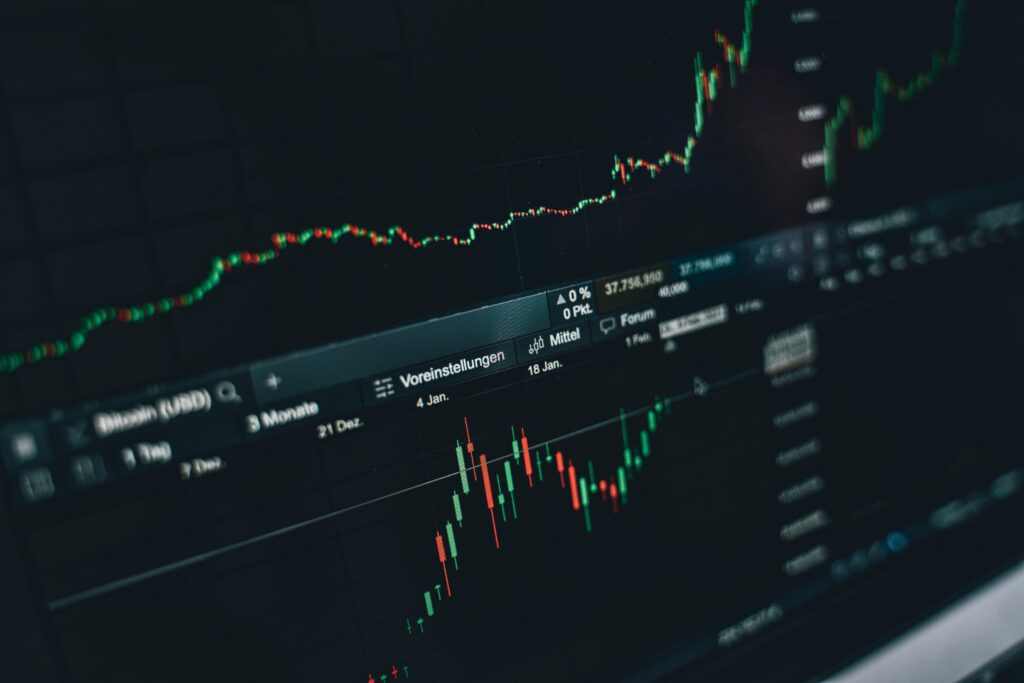
Real-world use cases play a crucial role in influencing cryptocurrency values. They refer to the practical applications and adoption of cryptocurrencies in real-life scenarios, beyond speculative trading. The ability of a cryptocurrency to solve real-world problems and provide tangible benefits strengthens its value proposition. Here are a few key points to understand how real-world use cases influence cryptocurrency values:
- Utility: The utility value of a cryptocurrency depends on its usefulness in solving existing problems or providing innovative solutions. Cryptocurrencies that can facilitate seamless cross-border transactions, improve supply chain management, enhance data privacy, or enable decentralized applications tend to attract more attention and higher valuations.
- Adoption: The wider the adoption of a cryptocurrency for real-world applications, the higher its value tends to be. Increased usage by individuals, businesses, or institutions reflects growing trust and acceptance in the market. For example, if a major retailer begins accepting Bitcoin as a payment method, it would likely enhance both Bitcoin’s adoption and value.
- Partnerships and Collaborations: Partnerships between blockchain/crypto projects and established companies boost confidence in the viability of the technology and its potential use cases. Collaborations can result in the integration of cryptocurrencies into existing platforms or the development of new innovative products and services. Positive news about new partnerships often leads to increases in crypto values.
- Regulatory Environment: The legal and regulatory framework surrounding cryptocurrencies greatly influences their market value. Friendly regulations that provide clarity on their usage can encourage increased adoption, while restrictive regulations might limit their potential, sometimes causing significant declines in value.
- Problem Solving: Cryptocurrencies that effectively address real-life issues with practical implementations tend to command higher values as they gain traction within their target industries. If a cryptocurrency provides a unique solution to an existing problem (such as reducing remittance costs for overseas workers), it has the potential to gain substantial value by capturing market demand.
- Public Perception: Public sentiment and perception of cryptocurrencies play a crucial role in their valuation. Positive media coverage, endorsements by influential figures, and prevailing narratives around their practical uses significantly impact market perceptions and directly influence cryptocurrency values.
- Technological Advancements: Continuous advancements in technology contribute to the viability and value of cryptocurrencies. Innovations like scalability solutions, interoperability protocols, cross-chain bridges, or privacy enhancements can make cryptocurrencies more competitive and attractive compared to alternatives. Technical progress often translates into higher values as investors recognize the potential for broader adoption.
- Market Demand: Ultimately, the demand for real-world use cases shapes cryptocurrency values. If there is significant demand for a specific blockchain’s functionalities or a cryptocurrency’s services within a particular industry, its value has the potential to increase parallelly.
In essence, real-world use cases form the foundation of a cryptocurrency’s value in the ever-evolving crypto market. Successful use cases enhance utility, foster adoption, attract investments, solidify partnerships, and reinforce positive sentiment towards cryptocurrencies and their underlying technologies.
Regulatory Environment and Its Effect on Cryptocurrency Markets
The regulatory environment has a significant impact on cryptocurrency markets, shaping the way these digital assets are traded and safeguarding investor interests. As cryptocurrencies have gained popularity, governments globally have taken steps to introduce regulations to address various concerns related to security, fraud, money laundering, and investor protection.
Regulations vary from country to country and can directly influence market activities, affecting the overall sentiment and behavior of participants. Some jurisdictions have embraced cryptocurrency with welcoming regulations while others have been more cautious or even implemented strict measures.
One important aspect of regulation is how it addresses initial coin offerings (ICOs). ICOs involve crowdfunding for cryptocurrency projects by selling digital tokens. Countries have adopted diverse regulatory approaches towards ICOs, ranging from complete bans to offering clear guidelines for investors and issuers to follow. Restrictive regulations may reduce investment opportunities and limit innovation, at least within those jurisdictions.
A key regulatory concern revolves around anti-money laundering (AML) and know-your-customer (KYC) rules. These aim to prevent illicit activities such as money laundering and terrorism financing. Exchanges are often required to verify the identity of their users, imposing a level of disclosure that some investors may view as invasive. Although these measures bring transparency, they can arguably hinder decentralized principles that cryptocurrencies were built upon.
Governments have also taken steps to regulate trading platforms or exchanges that facilitate buying, selling, and storing cryptocurrencies. Many require exchanges to obtain licenses or comply with financial laws applicable to traditional financial institutions. Such frameworks ultimately intend to ensure fair trading practices, user protection, and strengthening cybersecurity in an industry prone to hacking attempts.
Taxation is another aspect that regulators address within the crypto space. Due to the decentralized nature of cryptocurrencies and cross-border transactions facilitated by blockchain technology, taxation becomes complex. Governments work towards finding ways to efficiently tax crypto-related activities, ensuring proper reporting while regulating exchanges that handle significant transaction volumes.
Global regulatory efforts have been observed as well. Organizations like the Financial Action Task Force (FATF) and the International Organization of Securities Commissions (IOSCO) aim to establish international standards for dealing with cryptocurrencies and develop guidelines to combat common issues faced by the markets.
Overall, the evolving regulatory environment significantly influences cryptocurrency markets. Clear regulations can provide greater investor confidence, attract institutional participation, and foster mainstream adoption. Conversely, excessive regulatory burdens can stifle innovation, restrict access to markets, and drive away crypto-related businesses. As governments worldwide continue to shape their stance on cryptocurrencies, closely monitoring regulatory developments remains crucial for market participants and enthusiasts alike.
Network Security: Evaluating Risk in Crypto Investments

Network security is an essential consideration when evaluating the risk in crypto investments. With the rapid increase in cyber threats, it has become imperative to assess the robustness and reliability of a cryptocurrency network before deciding to invest in it.
The security of a crypto network depends on various factors such as encryption techniques, consensus mechanisms, decentralization, and vulnerabilities. Assessing these elements helps understand the network’s overall stability and its ability to protect user funds and transactions.
Encryption plays a critical role in safeguarding crypto assets. A strong encryption algorithm helps prevent unauthorized access to sensitive information stored on the blockchain or in wallet applications. Evaluating the encryption standards utilized by a particular cryptocurrency project can provide insights into its resistance against potential attacks.
Consensus mechanisms are another crucial aspect that determines network security. Different cryptocurrencies use various consensus algorithms like Proof of Work (PoW), Proof of Stake (PoS), or Delegated Proof of Stake (DPoS). Analyzing the efficiency and fairness of these mechanisms gives an idea about the overall security of a network against double-spending attacks, 51% attacks, or other malicious activities.
The level of decentralization is also an important consideration when assessing the risk in crypto investments. Decentralized networks are designed to resist censorship or control from any single entity, reducing vulnerability to manipulation or hacking attempts. Investigating the extent of decentralization within a specific cryptocurrency project helps determine its resilience and censorship resistance.
Vulnerabilities within a crypto network must be carefully evaluated to identify potential risks. Conducting rigorous security audits, both by internal teams and third-party experts, aids in uncovering vulnerabilities or weaknesses within the system. Various attacks like smart contract exploits can result in significant losses, making it crucial for investors to gauge the network’s exposure to such threats.
Furthermore, evaluations should extend beyond the cryptocurrency protocol itself, including ancillary services and platforms related to that specific project. Exchanges trading that cryptocurrency, for example, must also demonstrate robust security practices to protect user assets. A hacked exchange or a vulnerable third-party platform can lead to devastating consequences for investors.
In conclusion, evaluating the risk in crypto investments necessitates a thorough analysis of network security. Factors like encryption techniques, consensus mechanisms, decentralization, and vulnerabilities within the network all contribute towards understanding the overall safety and reliability of a cryptocurrency investment. Vigilance in assessing these aspects not only helps investors make informed decisions but also safeguards against potential threats in the unpredictable world of crypto markets.
Partnerships and Collaborations: Their Impact on Crypto Projects

Partnerships and collaborations hold significant importance in the world of crypto projects. These strategic alliances often play a crucial role in shaping the success and future growth of a crypto project, enhancing their credibility, and expanding their reach beyond their core offerings.
For starters, partnerships give crypto projects the opportunity to pool resources and expertise. By teaming up with other reputable entities or established players in the industry, they can leverage shared knowledge, technologies, or even capital for mutual benefit. This collaborative effort fosters innovation as both parties bring their unique strengths into play, leading to more robust and capable products/services within the crypto market.
Moreover, partnerships enable crypto projects to tap into larger networks and new customer bases. By integrating their systems or solutions with an established player’s network, they can quickly gain exposure to a broader audience. This wider reach not only enhances visibility but also facilitates user adoption, thereby driving increased usage of their platforms or cryptocurrencies.
Additionally, partnerships often enhance the overall trustworthiness of a crypto project. Collaborating with reputable businesses or key players within the industry adds credibility and validates the project’s legitimacy, especially if those partners have proven track records in security or compliance. This validation can boost investor confidence in the project’s potential and increase its attractiveness to potential users.
Partnerships also open doors for cross-pollination and diversification within the crypto market. Collaborating with entities from different sectors or industries brings new perspectives, insights, and potential use cases. These multidisciplinary collaborations have the potential to push the boundaries of blockchain technology itself and drive further adoption across various sectors outside traditional finance.
Furthermore, strategic alliances assist in regulatory compliance efforts by sharing best practices and knowledge related to legal frameworks and regulations across different jurisdictions. Partnerships with regulatory experts may aid in navigating complex compliance landscapes effectively. This ensures that crypto projects can operate within legal boundaries while optimizing their product offerings.
In conclusion, partnerships and collaborations have a significant impact on the success and growth of crypto projects. By leveraging shared expertise, expanding their reach, gaining credibility, opening new opportunities, and ensuring regulatory compliance, these strategic alliances provide a solid foundation for the long-term development and adoption of innovative solutions within the crypto market.
Transaction Volumes and Their Correlation with Crypto Prices
Transaction volumes refer to the total number of trades or transactions happening within a specific time frame on a cryptocurrency exchange or platform. In the context of the crypto market, transaction volumes play a significant role in determining the liquidity and activity levels of different digital assets.
Transaction volumes are closely linked with crypto prices, as they directly impact supply and demand dynamics. When transaction volumes are high, it generally indicates increased interest and participation in the market. This can be driven by various factors such as new market entrants, trading bots, or surge in investor sentiment.
A rise in transaction volumes often leads to higher levels of buying and selling pressure, subsequently influencing cryptocurrency prices. If the increased volume is primarily due to buyers outnumbering sellers, it tends to drive prices up. Conversely, if sellers are dominating a high volume period, it may result in downward pressure on crypto prices.
However, it’s crucial to exercise caution as extreme fluctuations in crypto prices are not solely dependent on transaction volumes. Other external factors like global economic trends, regulatory changes, or major news events can also significantly impact the value of digital assets.
Moreover, the correlation between transaction volumes and crypto prices is not always straightforward. Sometimes transactions can be inflated by wash trading (the process of creating artificial volume through coordinated buy and sell orders) or bot activity designed to manipulate prices.
Analyzing long-term transaction volume trends alongside price movements can provide insights into market sentiments and help identify potential trend shifts. For example, a prolonged increase in both transaction volumes and prices might suggest underlying bullishness among investors. Conversely, declining transaction volumes alongside falling prices could indicate a bearish sentiment prevailing in the market.
Traders and investors closely monitor transaction volumes to gain additional perspective when making trading decisions. High transaction volumes coupled with substantial price movements may indicate an uptrend or downtrend gaining momentum, alerting traders to potential market shifts.
In conclusion, while transaction volumes do have a correlation with crypto prices, it is essential to consider other factors as well. Transaction volumes provide valuable information and can be used effectively in conjunction with other market indicators to gain insights into cryptocurrency market dynamics.
Community Support and Social Media Sentiment Analysis in Crypto Trading
Community Support in Crypto Trading:
In the fast-paced world of crypto trading, community support plays a crucial role. It refers to the network of individuals who come together to provide education, guidance, and encouragement to fellow traders. This community often comprises experienced investors, crypto enthusiasts, and even professionals in the field.
In the context of crypto trading, community support manifests through various channels like online forums, trading groups on social media platforms like Telegram or Discord, and dedicated communities on websites. Traders join these communities to connect with like-minded individuals, share insights, seek advice on trading strategies, and stay updated with the latest market trends.
Community support can prove immensely valuable for beginners or even experienced traders who are trying to understand new technologies or navigate through intricate investment decisions. This community acts as a knowledge-sharing platform where newcomers can interact with experts, gain valuable perspectives, learn from others’ experiences, and make more informed trading choices.
Such communities are often characterized by discussions around specific cryptocurrencies, ICOs (Initial Coin Offerings), trading platforms, technical analysis tools, and news updates. Participants engage in active conversations about the ups and downs of different cryptocurrencies, exchange recommendations, risk management techniques, and much more.
Moreover, these communities often act as an important source of emotional support for traders who may face challenges or uncertainty in the market. Exchanging anecdotes of both successes and failures creates a sense of camaraderie among participants. By having a supportive community at hand, traders can find encouragement during downturns and reinforce confidence during prosperous times.
Overall, community support acts as a backbone to the crypto ecosystem by empowering its participants with information and emotional solidarity necessary for successful trading endeavors.
Social Media Sentiment Analysis in Crypto Trading:
Social media sentiment analysis has gained significant relevance in the realm of crypto trading. It involves assessing the sentiment or attitude expressed by individuals or groups towards specific cryptocurrencies or related developments through social media platforms like Twitter, Reddit, or dedicated forums.
This analysis typically utilizes natural language processing and machine learning techniques to decipher sentiment from a vast amount of social media content related to crypto-trading. By gathering and analyzing data from social platforms, traders and analysts seek insights into public sentiments, market trends, investor sentiments, and potential impact on cryptocurrency prices.
Different sentiment categories may include positive, negative, or neutral. Cryptocurrency enthusiasts can leverage this analysis to gauge overall market sentiments, public opinion about a particular cryptocurrency’s future, or the anticipated impact of a specific news event or regulation.
Traders and investors monitor social media sentiment to identify potential market movements early, catch trends, or generate trading strategies. However, it is important to remember that social media sentiment analysis is just one tool among many – relying solely on it may oversimplify market dynamics and predictions.
Nonetheless, supplementing technical analysis and fundamental research with insights gained from social media sentiment analysis can provide traders with a more comprehensive understanding of the market landscape.
In conclusion, community support and social media sentiment analysis have become integral components of successful crypto trading. Communities offer education, guidance, emotional support, while social media sentiment analysis provides additional insights into public sentiments relevant to the market. Integrating these elements can enhance traders’ decision-making processes and contribute to their overall success in navigating the dynamic crypto market.
Utilizing On-chain Analytics for Deeper Investment Insights into Cryptocurrencies

The realm of cryptocurrencies is ever-evolving, and the utilization of on-chain analytics has emerged as a powerful tool for gaining deeper insights into this perplexing world of digital assets. On-chain analytics refers to the analysis of transactional data recorded on the blockchain to extract valuable information and make informed investment decisions. By examining the intricate details imprinted within each transaction, investors can uncover hidden trends and patterns that shed light on market dynamics and sentiment.
A fundamental aspect of on-chain analytics lies in examining transaction volume and transaction value. These metrics provide a glimpse into the level of activity within a particular cryptocurrency network. A surge in transaction volume may indicate growing adoption or increased market speculation, while a significant uptick in transaction value might signify high-value transfers usually associated with institutional entities or whale investors. By monitoring these metrics, investors can gauge the overall health and vitality of a cryptocurrency project.
Another vital aspect of on-chain analytics is tracking wallet balances and token distribution. This encompasses monitoring the number of addresses holding a specific cryptocurrency and the amount held by each address. It allows for insight into whether tokens are being concentrated into a few wallets or if they are progressively becoming more decentralized. Imbalances in token distribution can hint at potential market manipulation or concentration of power among certain entities, thus enabling investors to apply further scrutiny and adjust their investment strategies accordingly.
Further, the analysis of token velocity through on-chain data helps investors understand how actively tokens are being utilized within a particular network. High token velocity may suggest stronger utility, diverse use cases, or simply increased speculative trading. Understanding token velocity allows potential investors to assess how effectively a cryptocurrency is fulfilling its intended purpose and providing real-world value.
On-chain analytics can also shed light on price support and resistance levels by analyzing large holdings movements known as “whale transactions.” Increases in sell-off behavior by large holders might indicate upcoming price pressure, while decreased whale activity could imply strong investor confidence. By identifying whale transactions through on-chain data, investors can anticipate potential price movements and structure their investments accordingly.
Additionally, on-chain analytics facilitate the identification of network congestion and transaction delays. These insights are particularly crucial for assessing the scalability and efficiency of a cryptocurrency project. A congested network with an inefficient confirmation process may hinder usability, weaken investor sentiment, and thwart widespread adoption.
Engaging in on-chain analytics requires powerful data-driven tools, such as blockchain explorers and specialized platforms that collect, analyze, and interpret on-chain data. Proper understanding of these tools assists investors in deciphering complex trends and patterns ingrained within transactional data to formulate well-informed investment decisions.
In conclusion, on-chain analytics empowers investors with a dynamic approach to understanding the crypto market by analyzing transaction volume, value, wallet balances, token distribution, velocity, price support and resistance levels, network congestion, and delays. By extracting deeper insights from on-chain data using the right tools, investors can navigate the complex crypto landscape with increased precision and confidence.
Tokenomics 101: Understanding Token Utility and Distribution Models
Tokenomics is a concept that encapsulates the underlying economics of a cryptocurrency or blockchain project. It deals with understanding the token’s utility, distribution models, and overall value proposition. By comprehending tokenomics, investors and enthusiasts can make more informed decisions in the crypto market. Here’s an overview of Tokenomics 101:
Token Utility:
At its core, token utility refers to how tokens are used within a blockchain ecosystem. Tokens can serve various purposes based on their design and intended functionality. They can act as digital currencies for transactions, govern the platform by granting voting rights, represent ownership of assets, enable access to services or features, incentivize participation or specific behaviors, create rewards systems, or facilitate interaction and engagement among users.
Distribution Models:
Token distribution models govern how tokens are allocated during initial sale events (known as Initial Coin Offerings – ICOs) or subsequent fundraising rounds. These models determine how tokens are acquired by investors, team members, advisors, community members, or other stakeholders. Common distribution models include …
- Airdrops: Tokens are distributed for free to existing token holders or specific addresses within the network.
- Initial Coin Offerings (ICOs): Tokens are sold directly to investors at a fixed price, allowing them to participate in the project at an early stage.
- Token Pre-Sale: Similar to an ICO but conducted in advance exclusively for selected supporters or external investors at a discounted price.
- Private Placements: Tokens are offered to private investors or venture capitalists before any public sale occurs.
- Token Mints and Burns: Extra tokens may be created (minted) or destroyed (burned) based on certain conditions defined in the project’s smart contract.
Value Proposition:
The value proposition of a token lies in the benefits it offers to its users and holders. This proposition determines the token’s economic viability and attractiveness within the market. Token value can be tied to factors such as scarcity (limited supply), network effect (user adoption and utility growth), revenue or profit-sharing mechanisms, staking or yield-generating opportunities, token buybacks or burns, governance features, deflationary mechanics, and overall market demand. Understanding a token’s value proposition is crucial for evaluating its potential long-term viability and determining its place within an investment portfolio.
In conclusion, tokenomics is an essential aspect of the crypto market landscape. It focuses on understanding how tokens function within a blockchain ecosystem, how they are distributed, and their inherent value proposition. By grasping these fundamental concepts, investors can make more informed decisions and navigate the evolving world of cryptocurrencies with greater confidence.
Historical Data Analysis: Learning From Past Crypto Market Cycles

Historical Data Analysis: Learning From Past Crypto Market Cycles
Understanding the patterns and trends of the crypto market is crucial for any investor or trader looking to make informed decisions. One valuable tool in this regard is historical data analysis, which involves studying past crypto market cycles to glean insights and learn from previous trends. By examining price fluctuations, trading volumes, and other crucial metrics, analysts can uncover potentially crucial information that may help shape future strategies.
First and foremost, historical data analysis looks back at how cryptocurrencies have moved within various time periods. It seeks to identify repeating patterns, whether that be short-term fluctuations or long-term trends. By plotting out price charts and overlaying key indicators like moving averages or volume profiles, analysts can look for correlations that may enhance their understanding of market behavior.
One key principle emphasized in this type of analysis is the concept of market cycles. The crypto market has exhibited cyclical behavior throughout its history, moving from phases of accumulation and bull markets to corrections and bearish periods. Recognizing these cycles goes a long way in helping traders anticipate potential entry and exit points, as well as manage risk effectively.
It’s also essential to examine the factors contributing to past cycle ups and downs. News events, regulatory decisions, technological advancements, or even shifts in investor sentiment can drive significant price movements. Understanding the catalysts behind historical crypto market cycles helps traders assess current developments and predict potential future scenarios.
In addition to identifying repeating patterns and understanding key drivers of price movements, historical data analysis can also shed light on market sentiment. Sentiment analysis focuses on how people feel about a certain coin or the overall market at any given time. By analyzing social media sentiments, forums discussions, news sentiment data, or even crowd psychology indicators like Fear & Greed Indexes, it’s possible to gain insights into market sentiment’s influence on price movements.
However, it is essential to recognize that historical data alone cannot predict future outcomes with certainty. The crypto market operates in a dynamic and ever-changing environment, influenced by various external factors. Past performance does not guarantee future results. So, while historical data analysis is a valuable tool, it should be used in conjunction with other fundamental and technical analyses to form a well-rounded strategy.
To sum up, historical data analysis is integral for understanding crypto market behavior. By analyzing past market cycles, patterns, and sentiment, traders can better equip themselves to make informed decisions. Recognizing the repeating nature of market events and identifying key drivers can assist in predicting potential future scenarios. Nevertheless, it is crucial to approach this analysis with caution and combine it with other techniques for a comprehensive understanding of the cryptomarket landscape.
Competitive Analysis: Understanding a Cryptocurrency’s Position Among Its Peers
Competitive analysis is a crucial aspect of understanding a cryptocurrency’s position within its peer group and is an essential part of researching the crypto market. It involves assessing and comparing various aspects of a particular cryptocurrency with its competitors, peers, or similar projects. By conducting this analysis, enthusiasts and investors can gain valuable insights into where a specific cryptocurrency stands in terms of its features, technology, market presence, and potential future performance.
When delving into competitive analysis, it’s important to consider different factors that contribute to a cryptocurrency’s position among its peers. One significant aspect to examine is the core technology or blockchain behind the cryptocurrency. Understanding the underlying technology can shed light on the project’s innovativeness, scalability, security, and overall capability for solving real-world problems. A superior blockchain architecture often translates to better chances of success.
In addition to technology, evaluating the team behind the cryptocurrency is equally important. The competence, experience, and expertise of the team members significantly impact a project’s success potential. Furthermore, assessing the track record of the team can provide insights into their previous successes or failures in related projects or industries.
It’s also vital to analyze a cryptocurrency’s market presence and adoption rates. Examining whether similar projects have gained substantial user bases or partnerships helps gauge potential future growth for the cryptocurrency under review. Studying a coin’s market capitalization, trading volume, liquidity, and overall popularity within the crypto community provides evidence of its acceptability.
Performing competitive analysis also involves closely monitoring industry trends and keeping updated with comparable cryptocurrencies’ news and developments. By staying informed about innovation trends in related fields and analyzing analogous projects’ adoption levels, investors can assess if a particular cryptocurrency is ahead of, lagging behind, or on par with its peers.
Furthermore, evaluating marketing strategies helps understand how well a cryptocurrency project communicates its value proposition to potential users and investors. This analysis examines a project’s website quality, social media presence, community engagement, and transparency of communication channels.
Considering the regulatory environment is also crucial when assessing a cryptocurrency’s competition. Understanding how each project operates under evolving and varying regulations and compliance frameworks gives insights into the scope and feasibility of growth and global adoption. Issues such as legal compliance, licensing agreements, national restrictions or bans, partnerships with governmental organizations, or integration within existing financial systems play significant roles in determining long-term success.
Keeping an eye on the development progress, future roadmap, and upcoming milestones of competing coins is essential as well. Assessing if peer projects are hitting their milestones, continuously updating their product offerings, or implementing new features ahead of others aids in benchmarking the reviewed cryptocurrency’s progress.
Conducting a comprehensive competitive analysis allows enthusiasts and investors to make informed decisions regarding investment potential or project viability. By evaluating a cryptocurrency’s strengths and weaknesses in relation to its peers, one can better understand opportunities for growth or areas of concern.
Risk Management and Position Sizing
Overcoming Emotional Trading: The Importance of Risk Management in the Crypto Market

Overcoming Emotional Trading: The Importance of Risk Management in the Crypto Market
Emotions can strongly influence our decision-making process when it comes to trading in the crypto market. Both fear and greed, for instance, have led many investors astray, causing them to make impulsive and irrational choices with their investments. Consequently, managing these emotions and implementing a solid risk management strategy becomes crucial for successful trading in the crypto market.
One key aspect of risk management is setting clear goals and objectives. By defining what you seek to achieve with your crypto investments, you gain a sense of direction and can develop a proper trading plan. This plan should encompass strategies such as diversification, position sizing, and setting stop-loss orders to control potential losses.
Another important element of risk management is conducting thorough research and analysis before making any trades. It’s essential to understand the fundamental factors that may impact the value of various cryptocurrencies. Additionally, technical analysis should be leveraged to identify entry and exit points for different coins or tokens. Carrying out proper due diligence helps reduce emotional reactions driven solely by market fluctuations.
Maintaining rationality in the face of volatility is challenging but paramount. Emotion-driven reactions can lead to knee-jerk decisions that deviate from your initial plan. Implementing strategies like dollar-cost averaging can help mitigate this by reducing the reliance on immediate market trends and spreading risks over time.
Moreover, utilizing stop-loss orders helps ensure that potential losses are limited. These orders automatically trigger a sale if a cryptocurrency’s price falls below a predetermined level specified by the trader. They act as guardrails against drastic price drops while offering peace of mind amid market turbulence.
Risk management also entails carefully monitoring your investments, regularly reviewing and adjusting your positions as necessary. By keeping track of market performance and staying up-to-date with news and developments in the crypto space, you can make informed adjustments to your portfolio.
Techniques such as having an emergency fund separate from your investment capital can alleviate stress and emotion-driven decision-making. This fund serves as a safety net during unexpected market downturns, allowing you to make calculated decisions without immediately succumbing to stress-induced selling pressure.
Ultimately, overcoming emotional trading requires discipline and a proactive approach. Although emotions may never be entirely separated from trades, implementing proper risk management strategies acts as a safeguard against their detrimental effects. By adhering to your trading plan, conducting diligent research, employing stop-loss orders, and staying informed, you pave the way for more objective decision-making in the volatile world of crypto trading.
Introduction to Position Sizing: How to Protect Your Capital in Volatile Crypto Markets
Introduction to Position Sizing: How to Protect Your Capital in Volatile Crypto Markets
In the world of cryptocurrencies, where prices can skyrocket or crash within minutes, protecting your capital is crucial. This is where the concept of position sizing comes into play. Position sizing refers to how much of your available capital you allocate to a particular trade or investment.
The primary objective of position sizing is to manage risk effectively and safeguard your funds from volatile market movements. By determining the appropriate size for each trade, you can limit potential losses while also maximizing profit potential. Let’s explore some key factors and strategies related to position sizing in crypto markets.
Firstly, before diving into any trade, it’s important to establish an overall risk management plan. This includes determining the acceptable level of risk for your portfolio and defining a maximum percentage of your capital that can be risked on a single trade. Generally, risk management experts suggest not risking more than 1-2% of your total capital on any given trade, especially considering the highly unpredictable nature of cryptocurrencies.
Next, you need to assess the specific characteristics of each trade or investment. This involves analyzing factors such as the cryptocurrency’s historical volatility, recent price trends, and overall market conditions. The higher the volatility, the smaller your position size should be in order to mitigate potential losses. In contrast, when dealing with less volatile assets, you may consider increasing your position size.
Once you have determined an appropriate position size for a trade, it’s essential to implement stop-loss orders. A stop-loss order is an instruction to sell a cryptocurrency if its price reaches a certain predetermined level. Setting stop-loss orders helps protect your capital by automatically closing positions that are moving against you and helping you avoid substantial losses.
Furthermore, diversification plays a vital role in mitigating risks associated with cryptocurrency investments. Instead of putting all your eggs in one basket, consider diversifying across different cryptocurrencies or even other forms of investments. This way, even if a particular asset experiences a steep decline, your overall portfolio can still withstand the impact due to the presence of other profitable investments.
It is important to regularly review and monitor your positions. As market conditions change, it might be necessary to adjust your position sizing strategy accordingly. Stay informed about market trends, news, and regulatory developments that could impact crypto prices. Continuous learning and adapting are crucial for managing risk effectively over time.
Lastly, it’s worth mentioning that the field of crypto market trading involves inherent risks and uncertainties. A reliable strategy for position sizing aids in minimizing these risks, but it does not guarantee profits or protection against all losses. It’s crucial to remember that no trade is 100% risk-free, and capital preservation should always remain a priority.
In conclusion, understanding and implementing effective position sizing techniques is essential to protect your capital in volatile crypto markets. Through proper risk management, careful assessment of market conditions, diversification, and the use of stop-loss orders, you can guard against adverse price movements while aiming to generate profitable returns from your cryptocurrency investments. Stay vigilant, informed, and adaptable to navigate this exciting yet unpredictable landscape.
Risk Management Strategies for Long-Term Crypto Investors

Cryptocurrency investments have gained considerable prominence in recent years, offering long-term growth potential. However, the highly volatile nature of the crypto market demands the adoption of effective risk management strategies by long-term investors.
Diversification represents a cornerstone for mitigating risk within your crypto portfolio. Instead of concentrating your investments in only a few cryptocurrencies, spread them across different assets. This will reduce the impact if one particular coin performs poorly – kind of like “don’t put all your eggs in one basket”!
Setting clear investment goals is vital to manage risk effectively. Define your long-term objectives and create a strategic plan aligned with those goals. Avoid the temptations of impulse buying or selling driven by short-term market fluctuations. Stick to your plan unless any significant changes or updates occur.
Being well-informed plays a critical role in managing risks. Keep pace with cryptocurrency news, trends, and developments. Stay updated on government regulations and any legislative changes that might impact the market dynamics. Staying informed ensures you make calculated decisions.
Monitoring and analyzing market data helps identify patterns and predict potential risks. Employ suitable technical and fundamental analysis techniques to understand price movements, historical trends, trading volumes, and important news updates related to your investments. This approach allows for better decision-making based on logical reasoning rather than emotions.
Having clear entry and exit strategies cultivates disciplined behavior amidst market uncertainties. Knowing when to enter or exit positions safeguards against substantial losses due to sudden drops or negative market trends. Stop-loss orders can be useful tools to automatically sell a specified asset if prices decline beyond a certain point, reducing potential losses.
Regularly reviewing and rebalancing your portfolio aids in efficiently managing risks. Invest time reassessing the performance of your assets periodically to ensure they align with your long-term goals and strategies. Based on this analysis, make appropriate adjustments by adding or removing assets from your portfolio accordingly.
Staying patient is fundamental for long-term crypto investors concerned about risk management. Cryptocurrency investments should be viewed as a strategic endeavor rather than a get-rich-quick scheme. Be patient and allow your investments the time needed for growth potential to unfold while sticking to your risk management strategies.
Finally, it’s important to remember that there are no foolproof risk management strategies when it comes to cryptocurrencies, as volatility is an inherent characteristic of this market. However, adopting these principles can assist long-term crypto investors in mitigating risk and navigating the challenging market environment more effectively.
Utilizing Stop Loss and Take Profit Orders in Cryptocurrency Trading
Utilizing Stop Loss and Take Profit Orders in Cryptocurrency Trading:
Stop Loss and Take Profit orders are powerful tools that traders use to manage risks and secure profits in the highly volatile cryptocurrency market. These orders act as preset instructions in trading platforms, automatically executing trades when certain price thresholds are reached.
A Stop Loss order is designed to limit potential losses by instructing the platform to sell a specific cryptocurrency if its price drops below a predetermined level. It acts as a safety net for traders, helping them avoid financial catastrophe in case the market moves against their position. By placing a Stop Loss order, traders set a clear exit point and ensure their losses do not surpass a certain threshold.
Take Profit orders, on the other hand, are used to automatically close positions once a specified profit target is reached. In essence, it allows traders to lock in profits without the need for constant monitoring of market trends. It is an effective tool for capitalizing on short-term momentum or capturing desired returns in fast-moving markets.
When using these order types, traders must consider several factors. Firstly, they need to determine appropriate stop loss and take profit levels based on their risk appetite and analysis of market conditions. Effective risk management involves setting stop loss levels that are realistic yet pose minimal impact even when trades do not go as expected.
Traders must also be careful about setting stop loss levels too close to the current market price. Placing a stop loss order too tight can lead to premature exits on minor price swings, limiting potential profits. It requires striking a balance between minimizing losses and allowing enough room for natural market movements.
Likewise, setting a realistic take profit level is crucial. Greed can influence traders to set unrealistically high targets, causing them to miss out on potential profits when the market slightly retraces. Proper research and understanding of current market trends are critical components for correctly identifying suitable take profit levels.
To effectively utilize stop loss and take profit orders, constant monitoring of the market is essential. The dynamic nature of the cryptocurrency market demands regular reassessment of positions and adjusting these orders accordingly. Traders need to stay updated with real-time price movements, news, and technical indicators that could impact their chosen digital assets.
In summary, stop loss and take profit orders are invaluable tools for managing risk and securing profits in cryptocurrency trading. By intelligently setting these orders, traders can protect their investments from massive losses while capitalizing on profitable opportunities. However, they must approach these tools with caution, carefully considering price levels and diligently monitoring market trends to make informed decisions.
The Role of Diversification in Managing Risk in Your Crypto Portfolio
In the volatile world of cryptocurrencies, managing risk is essential in order to protect your investments and potentially generate profits. One effective strategy to mitigate risk is through diversification, which plays a crucial role in managing your crypto portfolio.
Diversification essentially means spreading your investments across different assets or sectors. By allocating your funds into a variety of cryptocurrencies rather than relying on a single one, you reduce the overall risk exposure. This strategy aims to minimize potential losses in case one specific cryptocurrency performs poorly while maximizing the chances of benefiting from other successful ones.
Firstly, diversifying within the crypto market itself is essential. Cryptocurrencies vary greatly in terms of price volatility, market capitalization, and adoption rates. By investing in different types of cryptocurrencies – such as established ones like Bitcoin and Ether, as well as promising altcoins – you minimize the risk that a detrimental event directly impacts all of your investments simultaneously. In short, if one particular cryptocurrency crashes, your entire portfolio will be less affected due to the diversification.
However, it’s not only limited to diversifying within the crypto market. Expanding your asset allocation beyond just cryptocurrencies can further enhance risk management. As always advised with traditional financial portfolios, incorporating other investment vehicles like stocks, bonds or even commodities can help bring stability to your overall portfolio. Such diversification ensures that even if the crypto market experiences a downturn or instability, returns from other non-crypto related assets can provide a buffer against significant losses.
Furthermore, geographical diversification plays an important role in managing risk in your crypto portfolio. Cryptocurrency regulations differ among countries and governments often adopt contrasting stances towards digital currencies. These disparities can have negative impacts on certain cryptocurrencies operating within specific jurisdictions. By investing in cryptocurrencies from various regions around the world, you benefit from a wider scope of regulatory environments and decrease the likelihood of centralized government actions severely affecting your entire portfolio.
It is important to note that while diversification helps manage risk, it does not guarantee protection against losses altogether. The cryptocurrency market remains highly volatile and unpredictable, with multiple factors influencing prices. Therefore, one must closely monitor their portfolio and the relevant market trends to adjust allocations accordingly. Regularly reassessing investments and distributing them across the cryptosphere will further ensure risk management is optimized while simultaneously maximizing potential rewards.
To conclude, diversification is a powerful tool for managing risk in your crypto portfolio as it minimizes the impact of unfavorable events by spreading investments across different assets, sectors, and jurisdictions. By adopting this strategy, you enhance your risk management capabilities and increase your chances of success in the ever-evolving crypto market. Always remember to conduct thorough research and seek advice from reliable sources when making investment decisions.
Fundamental vs. Technical Analysis: A Comprehensive Approach to Risk Management
Fundamental analysis and technical analysis are two widely used approaches in the world of financial markets, including the crypto market. When it comes to risk management, it is often beneficial to adopt a comprehensive approach that combines both these methods. Let’s explore each of these analyses independently and understand how their fusion can enhance risk assessment in the crypto market.
Fundamental Analysis:
Fundamental analysis focuses on understanding the intrinsic value of an asset by examining various underlying factors and economic indicators. This method helps investors assess the health, growth prospects, and potential future value of a cryptocurrency. Some factors considered in fundamental analysis include:
- Team and Technology: A thorough evaluation of the development team and the technological features behind a cryptocurrency can shed light on its potential.
- Market Adoption: Understanding how widely accepted and used a cryptocurrency is can indicate future demand and value accumulation.
- Regulatory Environment: Assessing the current regulatory landscape can help identify potential risks concerning government actions or bans on cryptocurrencies.
- Industry Trends: Examining market trends within the crypto sector can provide valuable insights into which coins or tokens are likely to succeed in the long term.
Technical Analysis:
Technical analysis involves studying historical price patterns and market data to predict future price movements. It relies heavily on charts, graphs, and statistical indicators to analyze trading volumes, price trends, support/resistance levels, and market sentiment among traders. Here are some aspects used in technical analysis:
- Candlestick Patterns: Studying patterns formed by candlesticks can reveal shifts in supply and demand dynamics.
- Moving Averages: Analyzing trends using moving averages helps identify potential reversals or continuation patterns.
- Relative Strength Index (RSI): With the RSI indicator, investors can gauge whether a cryptocurrency is overbought or oversold, indicating potential price corrections.
- Volume Analysis: Analyzing trading volumes alongside price movements provides insight into market participation and trend strength.
Comprehensive Risk Management Approach:
Combining fundamental and technical analysis offers a thorough approach to risk management in the crypto market. By integrating insights gained from both methods, investors can aim to minimize risks and optimize profits. This comprehensive approach allows for a deeper understanding of the cryptocurrency’s value, factor in market sentiment, and anticipate possible price movements based on historical patterns.
In conclusion, considering both fundamental and technical analysis is vital for successful risk management in the highly volatile crypto market. While fundamental analysis assesses the intrinsic value and future potential of a cryptocurrency, technical analysis provides insights into its short-term price action. Utilizing a comprehensive approach that combines these two methodologies increases the chances of making informed investment decisions while managing risks effectively.
The Psychology Behind Risk Management: How to Stay Rational Under Market Pressure
Risk management is an often overlooked aspect of investing in the cryptocurrency market that plays a significant role in determining one’s success. It involves a set of techniques and strategies aimed at minimizing potential losses and maximizing gains. However, it is not just about utilizing financial tools; it also heavily relies on one’s psychological state and ability to stay rational under market pressure.
Human psychology has a profound impact on how individuals perceive and react to risk. Fear and greed, commonly known as the two driving forces in financial markets, play a pivotal role in risk management. Fear drives investors to sell assets prematurely due to uncertainty or market downturns, while greed often prompts them to take excessive risks or hold onto positions for too long in search of greater profits.
To combat such emotional biases when managing risk, it is essential to adopt certain strategies:
- Establish clear goals: Defining realistic goals and a clear investment strategy beforehand can prevent impulsive decision-making during market fluctuations. Evaluate what you expect to achieve and set sensible milestones to measure your progress.
- Diversify your portfolio: The crypto market is highly volatile, making diversification crucial. Allocate funds across different digital currencies to mitigate the impact of any single asset’s poor performance.
- Set stop-loss orders: Implementing stop-loss orders allows you to define the maximum tolerable loss on each position. This technique helps limit potential damage by triggering automatic sell orders when an asset’s value decreases beyond a predetermined threshold.
- Avoid herd mentality: The fear of missing out often leads many investors to follow the trend rather than conduct independent analysis. Distinguish between noise and real market signals, valuing logical decisions rather than simply following others.
- Stick to your strategy: Emotional impulses and sudden market changes can cloud judgment, tempting holders to deviate from their initial strategy hastily. Establish a well-thought-out plan based on careful research and analysis and diligently stick to it.
- Maintain realistic expectations: Managing risk involves accepting that not all trades will be winners. Expecting consistent profits may lead to frustration, pushing investors to make rash decisions. Understand that losses are an inherent part of investing and can provide valuable lessons for future success.
- Keep emotions in check: Emotion-driven trading is a recipe for disaster. Maintaining emotional discipline during market pressure is the key to rational decision-making. Recognize your biases, understand your risk tolerance, and avoid making snap judgments driven by fear or greed.
- Stay informed: Keeping up-to-date with the latest crypto news and market trends can significantly help manage risk. Staying informed enables investors to make more informed decisions backed by knowledge and data.
Mastering the psychology behind risk management is an ongoing process that requires self-awareness, experience, and the ability to remain calm under pressure. Implementing these strategies and constantly refining one’s investment approach can enhance the chances of long-term success in the volatile world of cryptocurrency.
Tailoring Your Position Size to Match Your Risk Tolerance in the Crypto Market

Tailoring Your Position Size to Match Your Risk Tolerance in the Crypto Market
When it comes to investing in the ever-volatile world of cryptocurrencies, one of the key strategies that can help you navigate the market is tailoring your position size based on your risk tolerance. Understanding your risk tolerance is crucial as it allows you to determine the amount of exposure you are comfortable with and can afford to take on.
Analyzing your risk tolerance begins with assessing your financial goals, investment objectives, time horizon, and overall comfort level when it comes to potential losses. Crypto markets are notorious for their unpredictable swings, so it is vital to understand what type of investor you are before diving into the arena.
Once you have identified your risk tolerance, you can then proceed to tailor your position size accordingly. A position size refers to the number of coins or tokens you purchase within a given cryptocurrency. It directly correlates with both your budget and risk appetite, aiming to strike a balance between potential gains and tolerable losses.
For conservative investors who prefer a more cautious approach, smaller position sizes may be suitable. In this scenario, you would allocate smaller portions of your investment capital into individual cryptocurrencies. This helps minimize potential losses while allowing room for gradual decision-making processes and frequent reassessments.
More aggressive or risk-tolerant investors might opt for larger position sizes that offer greater exposure to the market. By investing a higher percentage of available capital into specific cryptocurrencies, these investors seek significant growth opportunities despite the accompanying higher risks. While larger positions aim for larger payoffs, they also escalate potential losses and amplify market volatility.
Adopting a flexible approach in managing your position sizes is also advised. Regular evaluations of market conditions, industry trends, and personal circumstances can provide valuable insights that should inform adjustments to your positions. When market conditions change or new information arises, consider re-evaluating and recalibrating your allocations to stay aligned with your risk tolerance level.
It’s crucial to note that risk tolerance varies from person to person, so what might be suitable for one individual may not necessarily work for another. Therefore, understanding your financial situation, susceptibility to risk, and long-term goals can guide your approach to cryptocurrency investments.
In conclusion, tailoring your position size in the crypto market is essential for matching your risk tolerance. Conservative investors may prefer smaller position sizes, offering gradual decision-making and risk mitigation. More aggressive investors may lean towards larger positions aiming for higher returns amid increased volatility. Evaluating market conditions regularly and adjusting positions as needed allows you to stay aligned with your risk tolerance level. With these strategies in mind, you can navigate the crypto market by optimizing your investment approach and potentially achieving favorable results.
Leveraging Risk-to-Reward Ratios for Profitable Cryptocurrency Investments

Leveraging Risk-to-Reward Ratios for Profitable Cryptocurrency Investments
Understanding how to effectively leverage risk-to-reward ratios is crucial for making profitable investments in the cryptocurrency market. This ratio is commonly used by experienced traders to evaluate the potential risks and rewards associated with a particular investment opportunity. By comprehending and implementing this strategy, investors can optimize their chances of success while minimizing potential losses. Here’s a closer look at leveraging risk-to-reward ratios for profitable cryptocurrency investments.
Before diving deeper, it’s essential to grasp what risk-to-reward ratio entails. In simple terms, this ratio calculates the anticipated reward on an investment in relation to the amount of risk involved. When evaluating a potential investment, weighing the possible returns against potential losses ensures a sound decision-making process.
One way to utilize this ratio is through portfolio diversification. In the vast cryptocurrency market, diversifying investments across different coins mitigates risk significantly. By allocating funds to a diverse set of cryptocurrencies, investors can strike a balance between highly volatile, risky assets and more stable ones, offsetting potential losses with potentially substantial gains.
Furthermore, understanding your personal risk tolerance is vital when leveraging the risk-to-reward ratio. Crypto investments can be highly volatile, requiring investors to understand and evaluate their own comfort level in accepting risks. While aiming for high returns may be enticing, assess potential risks objectively and determine beforehand the maximum amount you are willing to lose on an investment. Doing so maintains rationality and prevents emotional decision-making during turbulent market conditions.
When entering into a trade or investment opportunity, establishing an exit strategy early on is crucial, hand in hand with risk assessment. Determining both your profit-taking target and stop-loss level beforehand helps minimize losses if the market moves unfavorably. Traders often use specific tools like support and resistance levels or technical analysis indicators to determine optimal entry and exit points based on their risk-to-reward calculations.
Remember that risk-to-reward ratios should not be seen as the sole determining factor when making investment decisions. Evaluation of market trends, analysis of the project behind a cryptocurrency, and assessment of overall market sentiment are equally important. Combining risk-to-reward ratios with other fundamental and technical indicators can provide a well-rounded approach to profitable cryptocurrency investments.
Lastly, it’s crucial to constantly review and reassess your risk-to-reward strategy. The cryptocurrency market is highly dynamic, and input from news and analysis can seriously impact investment decisions. Regularly reevaluating potential investments in light of new information ensures an ongoing alignment between the chosen assets and the current market conditions.
By leveraging risk-to-reward ratios effectively, investors can devise a disciplined approach backed by concrete calculations rather than impulsive actions driven by fear or greed. This strategy allows for more informed decision-making in the cryptocurrency market, increasing the odds of profitable investments while reducing unnecessary risk.
Remember that thorough research and consultation with financial professionals are recommended before entering into any investments. The cryptocurrency market carries inherent volatility, demanding careful analysis and sound judgement for long-term success.
Understanding the Impact of Market Liquidity on Position Sizing and Risk Management

Understanding the Impact of Market Liquidity on Position Sizing and Risk Management:
Market liquidity plays a pivotal role in shaping the way traders and investors approach position sizing and risk management in the crypto market. It refers to the ease with which an asset can be bought or sold without significantly affecting its price. In other words, market liquidity indicates how quickly and efficiently an asset can be converted into cash without causing significant price fluctuations.
The liquidity of a specific coin or token should be a crucial consideration when determining your position size and managing risk. Here’s why:
- Impact on Market Orders: When trading in a highly illiquid market, large market orders can significantly impact the price due to limited available offers. Not only could this lead to partial fills, but it may also cause slippage, where the execution price ends up being less desirable than intended. Both of these scenarios might make it challenging to enter or exit positions effectively, potentially resulting in losses or missed opportunities.
- Position Sizing Accuracy: In more liquid markets, it is easier to accurately calculate position sizes based on risk parameters such as stop-loss levels or desired percent exposure. On the other hand, dealing with illiquid assets makes it harder to gauge true market prices accurately. This uncertainty implies greater difficulty in determining the appropriate position size commensurate with your risk tolerance.
- Price Volatility and Risk: Low liquidity is commonly associated with increased price volatility. With fewer participants actively trading certain assets, even relatively small buy or sell orders can result in substantial price swings. Thus, assessing liquidity becomes all the more essential for effective risk management since increased volatility implies higher potential for unexpected losses or profits.
- Exit Strategies and Market Depth: Evaluating market depth is crucial when planning your exit strategies. Illiquid markets often lack significant order book depth, meaning that relatively small sell or buy orders may considerably shift prices. Such shallow order books make it important to devise exit plans that gradually unwind positions rather than causing a significant market impact, primarily when dealing with larger orders.
- Impact on Limit Orders: Market liquidity also influences limit order execution. In more liquid markets, limit orders have higher chances of promptly being matched at desired prices due to the presence of multiple buyers and sellers. However, in illiquid markets, limit orders frequently remain unmatched or achieve partial fills, potentially requiring adjustments to entry or exit strategies.
To navigate the impact of market liquidity on position sizing and risk management:
Firstly, regularly assess the liquidity indicators unique to each cryptocurrency, such as volume, order book depth, spread, etc. This data will help you estimate how easily you can execute trades without adversely affecting prices.
Secondly, adapt your trading strategy according to the liquidity levels of your preferred assets. Liquid markets enable relatively straightforward position sizing and entry/exit strategies, while illiquid markets call for cautious planning.
Lastly, frequently reassess your risk management practices and adjust your position sizes based on both overall market conditions and specific asset liquidity. This ensures consistency in mitigating potential risks associated with volatile or thinly traded assets.
Overall, understanding the impact of market liquidity on position sizing and risk management is fundamental for any crypto trader or investor seeking to optimize their trading decisions, protect capital, and maximize returns.
Disaster Recovery Plans: Preparing for Crypto Market Downturns with Effective Risk Management

Disaster Recovery Plans: Preparing for Crypto Market Downturns with Effective Risk Management
Facing the ever-volatile world of cryptocurrencies, it is crucial to understand the necessity and significance of disaster recovery plans. In preparing for crypto market downturns, effective risk management practices can undoubtedly make a substantial difference. Such plans provide a structured framework for businesses and individuals to mitigate potential risks and take necessary actions when market conditions take a negative turn.
An effective disaster recovery plan involves several crucial aspects that need careful consideration. The first step lies in thoroughly assessing the potential risks associated with the cryptocurrency market, which may include but are not limited to, sudden price crashes, security breaches, regulatory changes, and large-scale network attacks. Understanding these specific threats enables market participants to proactively identify areas where vulnerabilities lie and determine the necessary countermeasures.
Once risks are identified, preparing an efficient response strategy becomes imperative. This entails establishing clear guidelines, protocols, and predefined actions that will be taken in response to different crisis scenarios. It is essential to have a dedicated team responsible for executing the disaster recovery plan promptly and efficiently in such instances.
Ensuring the safety and security of digital assets is paramount when devising a recovery plan. This may involve storing cryptocurrencies offline in cold wallets or exploring reputable custodial services recognized for their robust security measures. Incorporating strong authentication techniques such as multi-factor authentication adds an extra layer of protection to prevent unauthorized access.
The next step requires continual testing and refinement of the disaster recovery plan. Regular rehearsals help identify potential gaps or shortcomings, enabling market participants to make necessary improvements before the occurrence of an actual downturn. The plan should be reviewed periodically and updated in line with emerging technologies, market dynamics, changing regulations, or internal structural changes within the organization.
Educating key stakeholders on the importance of the disaster recovery plan is equally vital. Communication plays a role in ensuring smooth implementation during times of crisis. Ensuring that all relevant team members and stakeholders understand their roles and responsibilities, as well as the specific steps to be taken, can facilitate a coordinated response, minimizing possible damages.
A disaster recovery plan is not a one-size-fits-all solution and must be tailored to specific circumstances. What works for a small-scale trader may differ from what suits a large institutional player. Individual risk appetites and investment objectives should guide the customization of these plans. It is crucial to factor in financial resources, risk tolerance levels, operational requirements, and strategic priorities when devising an effective recovery strategy.
In summary, disaster recovery plans are indispensable tools for protecting investments in the crypto market when it experiences downturns. By proactively identifying risks, establishing response strategies, ensuring asset security, continual testing and refinement, educating stakeholders, and personalized customization, individuals and businesses can navigate challenging market conditions with resilience and minimize potential losses in this highly volatile sector.
Staying Ahead of the Curve: Incorporating Rule-Based Strategies for Crypto Trading Success

When it comes to staying ahead in the fast-paced and ever-changing world of crypto trading, incorporating rule-based strategies can be the key to achieving consistent success. These strategies are designed to help traders analyze market trends, identify profitable opportunities, and make informed decisions without being influenced by emotions or impulsive actions.
- Develop Trading Rules:
Start by establishing a set of trading rules that align with your risk tolerance, investment goals, and trading style. These rules may include specific entry and exit points for trades, position sizing limits, risk management techniques, and criteria for identifying potential buying or selling signals. Remember, it’s crucial to create rules based on sound research and analysis rather than relying solely on speculative information or hearsay. - Technical Analysis:
Technical analysis involves studying price charts, patterns, and indicators to understand market dynamics and anticipate future price movements. Utilize tools like moving averages, MACD (Moving Average Convergence Divergence), RSI (Relative Strength Index), Fibonacci retracements, or Bollinger Bands to identify potential entry or exit points for trades. By conducting thorough technical analysis, you can make more informed decisions rather than relying solely on gut feelings or misinterpreted market narratives. - Fundamental Analysis:
Fundamental analysis requires understanding the underlying value and potential prospects of a cryptocurrency project before making a trading decision. Investigate aspects such as project team qualifications, partnerships, community engagement, technology updates, use-case viability, and adoption trends. Stay updated with industry news and consider sources such as whitepapers, official announcements, conferences, and expert opinions when forming your investment thesis. - Trading Psychology:
The mental game is paramount in successful crypto trading. Emotions such as fear and greed can often cloud judgment and lead to impulsive decisions. Establish disciplined practices that help manage emotions during times of market volatility or uncertainty. Avoid chasing quick profits or panic-selling during downturns – instead, stick to your predetermined rules even if market sentiments are pushing you towards FOMO (Fear of Missing Out) or panic selling. - Managing Risk:
A rule-based trading strategy should also emphasize effective risk management to protect capital and mitigate potential losses. Use techniques such as setting stop-loss orders, diversifying your portfolio, and avoiding excessive leverage. Consider allocating only a portion of your overall investment capital to crypto trading and consistently evaluate and reassess risk-reward ratios. - Backtesting and Keeping Records:
Backtesting allows you to:test your strategies on historical data before applying them to present trades.you can identify potential flaws or areas for improvement in your trading plans. Additionally, maintain detailed records of your trades including entry/exit points, position sizes, and rationales behind each trade. This practice helps you track your performance over time, learn from mistakes, and fine-tune your strategy as needed.
In conclusion, incorporating rule-based strategies into your crypto trading approach enables you to navigate the volatile market effectively, separate emotions from decisions, and optimize profitability. Remember, these strategies require dedication, continuous learning, flexibility while staying disciplined within set parameters to keep pace in the ever-evolving crypto space.
Exploring the Role of Automated Trading Systems in Managing Risk and Sizing Positions in Crypto
Exploring the Role of Automated Trading Systems in Managing Risk and Sizing Positions in Crypto
Cryptocurrency trading has witnessed significant growth over the past few years, becoming a thriving industry attracting both individual investors and institutional traders. With the sheer volatility of cryptocurrency markets, managing risk and effectively sizing positions becomes even more crucial. In this blog post, we delve into the role of automated trading systems in addressing these challenges.
Automated trading systems, also known as algorithmic or robotic systems, have gained immense popularity within the crypto market. These systems utilize pre-programmed instructions to execute trades automatically, often based on technical analysis and predefined criteria. The objective is to benefit from lucrative opportunities while minimizing human error and emotional decision-making.
One of the main advantages of automated trading systems in managing risk lies in their ability to react swiftly to rapidly changing market conditions. Cryptocurrency prices can experience wild swings within seconds or minutes, causing significant losses for ill-prepared traders. By implementing sophisticated algorithms designed to assess market indicators instantaneously, automated systems can automatically enter or exit trades based on predetermined thresholds or price movements.
To further mitigate risks associated with manual trading, automated systems often utilize various risk management techniques. These include stop loss orders, which help limit potential losses by automatically closing positions if they reach a specified price level. Take profit orders are also employed to secure profits by automatically closing positions when a target price is reached.
Furthermore, automated trading systems boast scalability and consistency in position sizing. Emotional factors often influence traders’ decisions when it comes to determining appropriate position sizes. Greed or fear can lead traders to unnecessarily large or small positions, putting their capital at risk. Automated systems remove emotional biases and adhere strictly to predetermined analyses and quantitative models for position sizing.
Risk management and position sizing are not limited solely to individual trades but extend to overall portfolio management as well. Portfolio diversification is an essential strategy for reducing risk exposure and achieving long-term profitability. Automated trading systems implement risk management by ensuring a diversified selection of cryptocurrencies in a portfolio and dynamically adjusting allocations based on market conditions.
It is important to acknowledge that automated trading systems are not foolproof and come with their own set of risks. Poorly calibrated algorithms or technical glitches can lead to substantial losses. The reliance on historical data for modeling and assumptions may fail to capture sudden market changes or black swan events. Therefore, continual monitoring, refinement, and adaptation are necessary to enhance the performance of these systems.
In conclusion, the crypto market’s volatility calls for sophisticated risk management tools, and automated trading systems offer great potential in this regard. By leveraging algorithmic decision-making, swift reactions to market changes, and consistent position sizing techniques, these systems aim to mitigate risk exposure and improve trading outcomes. However, prudent oversight and continuous refinement are essential to realizing their maximum benefits while navigating the evolving nature of the cryptocurrency market.
Key Indicators and Tools for Efficient Risk Assessment in Cryptocurrency Investments

Key Indicators and Tools for Efficient Risk Assessment in Cryptocurrency Investments
When venturing into cryptocurrency investments, it’s crucial to have a solid risk assessment strategy in place. Understanding the key indicators and utilizing the appropriate tools allows investors to make informed decisions and mitigate potential risks effectively. Here are some essential aspects to consider:
- Market Cap: Market capitalization helps determine the size and potential profitability of a cryptocurrency project. It represents the total dollar value of a specific coin, reflecting its popularity and acceptance among investors and the overall market.
- Volume: Trading volume indicates the level of market activity for a particular cryptocurrency. Higher volumes suggest increased liquidity and interest, making it easier to buy or sell assets. Conversely, low volume can result in price volatility and difficulties when executing trades.
- Price Movement: Analyzing price charts and monitoring trends over time is vital for risk assessment. Tools such as candlestick graphs, moving averages, or Bollinger Bands help assess historical price movements, identify patterns, potential support and resistance levels, and understand market sentiment.
- Volatility: Cryptocurrencies are known for their extreme price volatility. Assessing volatility is crucial in determining acceptable risk levels for specific investments. Volatile assets often provide higher rewards but carry greater uncertainties, demanding careful consideration.
- Fundamental Analysis: Understanding the fundamental aspects of a cryptocurrency project is essential to evaluate its long-term viability. Factors such as technology, team expertise, use case, partnerships, community engagement, and competitive landscape give insight into potential risks or rewards.
- Technical Analysis: Technical analysis involves studying historical price and volume patterns to predict future price movements. Utilizing indicators like moving averages (MA), relative strength index (RSI), MACD (Moving Average Convergence Divergence), or Fibonacci retracement helps identify potential trend reversals or explore entry/exit points.
- Regulatory Environment: Keeping an eye on cryptocurrency regulations globally is instrumental in assessing the potential risks associated with legal concerns, bans, or restrictions, which can adversely impact investments.
- News and Sentiment: Monitoring real-time news and social media channels is valuable for understanding market sentiment. Being diligent about news related to specific cryptocurrencies, projects, partners, or influential figures can assist in assessing potential risks or opportunities.
- Security Considerations: Evaluating the security protocols and history of a cryptocurrency project is vital since vulnerabilities can lead to substantial losses. Understanding the technology used, smart contract audits, past security incidents, and overall community trust contributes to risk assessment.
- Diversification: Spreading investments across different cryptocurrencies helps reduce risk by avoiding over-reliance on a single asset. Holding a diversified portfolio that includes different projects, market caps, and sectors offers better risk management and boosts chances for potential gains.
By utilizing these key indicators and tools for efficient risk assessment, crypto investors can make well-informed decisions to navigate the volatile cryptocurrency market. Combining fundamental and technical analysis, monitoring market sentiment, and embracing diversification strategies are essential steps toward minimizing potential risks while maximizing investment returns.
The crypto market is a volatile, yet highly profitable industry that has been gaining significant attention in recent years. Born out of blockchain technology, cryptocurrencies have revolutionized the way financial transactions are conducted globally.
Bitcoin, the pioneer and most well-known cryptocurrency, was introduced in 2009 by an anonymous person or group of persons using the pseudonym Satoshi Nakamoto. Bitcoin operates on a decentralized network, allowing individuals to transfer funds directly without intermediaries like banks.
After Bitcoin’s success, numerous other cryptocurrencies (referred to as altcoins) emerged. Ethereum, introduced in 2015, sparked a new wave of innovation by enabling users to build decentralized applications on its platform. This led to the development of tokens through Initial Coin Offerings (ICOs) – a crowdfunding method for crypto startups.
The success of cryptocurrencies revitalized interest in blockchain technology – the distributed ledger system that powers them. Blockchain is heralded for its immutability and transparency, finding applications not only within finance but also in industries like supply chain management, healthcare, and real estate.
One key aspect of the crypto market is its inherent volatility. Prices can fluctuate wildly over short periods, which presents both opportunities and risks for traders. Cryptocurrencies may experience rapid price surges or dramatic crashes influenced by factors such as market demand, regulatory decisions, economic news, or security breaches.
This volatility also attracts investors who value decentralization and hope to gain substantial wealth from their investments. Crypto enthusiasts closely follow market trends and eagerly await updates from prominent figures such as Elon Musk and institutional investors like Tesla or MicroStrategy, whose actions can dramatically affect prices.
As governments worldwide grapple with how to regulate cryptocurrencies, changes in regulations often impact market dynamics. Clarity in legal frameworks helps boost mainstream adoption of cryptocurrencies by fostering investor confidence and widespread access to digital assets. News regarding government announcements or regulatory probes concerning cryptocurrencies is closely monitored by market participants and frequently influences trading decisions.
Community engagement is essential in the crypto market as it often operates within decentralized ecosystems. Crypto enthusiasts, developers, and traders gather on various online platforms and social media channels to discuss market trends, new projects, and innovative developments.
Crypto enthusiasts celebrate significant achievements, such as a cryptocurrency listing on major exchanges or the launch of a successful product or blockchain upgrade. Conversely, controversies surrounding hacks, scams, or questionable projects also make headlines. It is crucial to stay vigilant and informed to avoid potential pitfalls when navigating the intricacies of the crypto market.
Overall, the crypto market is a dynamic and exciting space that evolves rapidly. To navigate it successfully and make informed decisions, keeping up with the latest news from reliable sources/sources trusted for their accuracy and analysis is vital.
Trend Following Strategies
Introduction to Trend Following Strategies in Crypto Markets
Introduction to Trend Following Strategies in Crypto Markets
Trend following is a popular strategy used by traders and investors across various financial markets, including the crypto market. This strategy focuses on identifying and capitalizing on market trends, regardless of the cryptocurrency’s direction. In simpler terms, it aims to ride the wave of upward or downward price movements.
Trends can be observed in the form of consistent price increases or decreases over a certain period. Trend followers believe that these trends tend to persist, making it possible to generate profits by following and trading based on them.
The premise behind trend following strategies is that markets exhibit patterns and tendencies, allowing traders to implement a systematic approach to take advantage of these trends. While no one can predict future market movements with absolute certainty, trend followers believe that trends are more likely to continue than reverse in the short term.
One of the key tools utilized by trend followers is technical analysis. It involves studying historical price data and charts to identify patterns and determine potential future price movements. Popular technical analysis indicators like moving averages, MACD (Moving Average Convergence Divergence), and RSI (Relative Strength Index) are often used by trend followers to make informed trading decisions.
In terms of execution, trend following strategies provide specific criteria for entering trades. Traders often take long positions (buying) when they identify an uptrend and short positions (selling or taking a position against a particular cryptocurrency) during a downtrend. The goal is to capture as much of the trend as possible before exiting the trade.
Risk management is crucial when employing trend following strategies in crypto markets or any other financial market. Stops and trailing stops are commonly used to protect against adverse market moves. These tools automatically close a position once prices reach predefined levels or trail behind the price at fixed intervals, securing profits accumulated during the trend.
Understanding that not every trade will be successful, trend followers aim for favorable risk-to-reward ratios. By ensuring their potential profits significantly outweigh potential losses, they can still generate returns overall even if a significant number of trades end with losses.
Trends in crypto markets can be affected by various factors, including news events, market sentiment, and even general market conditions. Therefore, it’s essential for trend followers to keep a close eye on both fundamental analysis (economic, policy, and industry-related trends) and technical analysis indicators while executing their strategies in the crypto market.
To summarize, trend following strategies in crypto markets revolve around identifying and capitalizing on price trends that persist over a certain period. By utilizing technical analysis tools and implementing risk management measures, traders attempt to profit from these trends using systematic trading approaches. However, it’s important to note that past performance is not indicative of future results, promising no guaranteed success with this or any strategy.
How To Identify Market Trends In Crypto Trading

Identifying market trends in crypto trading can be a challenging yet crucial task for those looking to make informed investment decisions. By closely observing the market and analyzing relevant data, traders can gain valuable insights into market trends that can potentially help maximize their profitability. Here is everything you need to know about how to identify market trends in crypto trading:
- Price Analysis:
Traders often perform technical analysis by studying price charts and patterns of cryptocurrencies. By identifying specific price levels, support and resistance zones, trendlines, and key indicators such as Moving Averages or Relative Strength Index (RSI), one can detect distinct patterns that may indicate a trend. - Volume Analysis:
Analyzing trading volume helps to assess the strength of a given trend. Higher trading volumes during upward trends indicate strong bullish sentiment, while increased volumes during downward trends suggest a bearish market sentiment. - Fundamental Analysis:
Understanding the underlying factors affecting a cryptocurrency’s value is essential. Consider looking into project updates, new partnerships, regulatory developments, adoption news, or market sentiment towards particular cryptocurrencies to identify potential trends. - News Monitoring:
Keeping an eye on current news and events related to the crypto industry can be highly beneficial. Developments like significant partnerships, exchange listings, project milestones, or government regulations can influence the market trends. - Social Media Sentiment:
Utilizing sentiments shared on social media platforms can offer insights into public opinion towards cryptocurrencies. However, consider being cautious as speculative information might not always represent a reliable source of accurate analysis. - Technical Indicators:
Technical indicators identify certain parameters based on mathematical calculations and statistics derived from historical pricing data. By carefully interpreting these indicators like MACD (Moving Average Convergence Divergence), Bollinger Bands, or Stochastic Oscillator, traders can gain indicators of emerging trends. - Time Frame Consideration:
Different trends have varying time frames; thus, evaluating various chart time frames (e.g., hourly, daily, weekly) helps identify short-term or long-term trends accurately. - Moving Averages:
Moving averages calculate average price values over a specified period to provide insights into the price direction. Commonly used moving averages include the 50-day and 200-day moving average lines. Crossovers, where two moving averages converge, could imply trend reversals. - Resistance and Support Levels:
Resistance levels are price levels where cryptocurrencies encounter selling pressure limiting further upward movement. Conversely, support levels denote price thresholds where purchasing demand outweighs selling pressure, creating a floor for prices to potentially bounce back. - Trend Confirmation:
Always exercise caution in confirming trends using multiple indicators and techniques! Relying solely on one factor may lead to inaccurate analysis or false signals.
Remember, no prediction method can guarantee profitable outcomes when identifying market trends in crypto trading. The crypto market is highly volatile and subject to sudden shifts based on both fundamental and psychological factors. Keeping yourself updated with reliable sources, using analytical methods alongside risk management practices, and adapting your strategy when necessary can enhance your ability to navigate emerging market trends effectively.
The Psychology Behind Trend Following in Cryptocurrencies
The psychology behind trend following in cryptocurrencies is an intriguing aspect of the crypto market that captivates various traders and investors. Trend following is a strategy commonly employed to make trading decisions based on the indicators of price movements over time.
One psychological factor that influences trend following is the fear of missing out (FOMO). The crypto market is known for its volatility, which leads many traders to jump into trends based on the fear that they may miss out on potential profits. FOMO often leads to impulsive buying decisions, increasing demand and driving up the prices of certain cryptocurrencies.
Another psychological element influencing trend following is the need for confirmation bias. Traders tend to seek out information that confirms their existing beliefs or expectations about a particular trend. They may ignore or discount contradictory information, leading them to stay committed to a trend even when signs of a reversal emerge.
Emotional trading also plays a significant role in trend following psychology. Strong emotions like fear and greed can cloud judgment and lead traders to make irrational decisions. When markets experience rapid price movements, fear can cause traders to sell impulsively instead of holding onto a potentially profitable position. Conversely, greed may overpower rationality, compelling individuals to buy into rising trends without considering critical factors such as market fundamentals and risks.
Psychological biases such as anchoring bias impact trend following as well. Anchoring bias occurs when individuals rely heavily on one specific information point (often the initial purchase price) when making subsequent decisions. Traders may fixate on their entry point into a trend, ignoring changing market conditions and potentially prolonging losses if the trend reverses unfavorably.
Overconfidence can also sway traders towards trend following strategies. The belief that they can accurately predict market trends may lead individuals to take exaggerated risks, overestimate profitability, or disregard risks associated with entering ongoing trends without proper analysis.
Furthermore, social proof plays a significant role in influencing traders practicing trend following. When influential figures or public figures, such as well-known investors, politicians, or celebrities, express their support for a particular cryptocurrency or trend, it leads to increased social proof. Traders may imitate these perceived successful individuals, leading to intensified trends, reinforced by the actions of others.
Finally, value attribution and sense-making assist traders in understanding why a trend is occurring and what might drive its persistence. They search for reasonable explanations surrounding market shifts to rationalize followings trends. This helps traders construct and navigate narratives surrounding market movements, making them feel more confident about pursuing trend following strategies.
Understanding the psychological factors at play behind trend following in cryptocurrencies can provide insights into investor behavior and potentially help traders make informed decisions. By recognizing the impact of emotions, biases, social influence, and individual perception on the crypto market, traders can navigate trends with greater awareness of the psychological landscape shaping these trends.
Essential Tools and Indicators for Crypto Trend Followers
When delving into the crypto market news and trends, it is crucial to utilize a set of essential tools and indicators that can help guide trend followers in making informed investment decisions. While there are numerous tools available, here are some key ones to consider:
- Candlestick Charts: Candlestick charts provide visual representations of price movements over a given time period. It helps identify patterns, market sentiment, and possible future price trends. Analyzing candlestick formations is integral for understanding market dynamics.
- Moving Averages (MA): Moving averages are used to determine average price values over specific periods, providing insights into overall market trends. Common types include simple moving averages (SMA) and exponential moving averages (EMA).
- Relative Strength Index (RSI): The RSI measures the speed and change of price movements by comparing the magnitude of recent gains to recent losses. This oscillator indicator ranges from 0 to 100, with values above 70 indicating overbought conditions and values below 30 suggesting oversold conditions.
- Volume Charts: Volume charts represent trading activity by illustrating the subsequent buying and selling pressure behind price movements. They assist in identifying strong trends and potential reversals based on trading volume patterns.
- Bollinger Bands: Bollinger Bands consist of three lines—upper, lower, and middle—that surround a simple moving average line. They indicate possible price volatility by showing standard deviations from the moving average. Tighter bands suggest lower volatility, while wider bands indicate higher volatility.
- MACD (Moving Average Convergence Divergence): MACD reflects the relationship between two moving averages and further helps traders identify potential trend reversals or confirmations. It comprises two lines—the MACD line and the signal line—along with a histogram that represents the difference between them.
- Fibonacci Retracement: Based on Fibonacci ratios in mathematics, this tool identifies potential levels of support or resistance in a market. It helps determine possible price reversal points or areas to consider for entry or exit positions.
- Order Book (Depth Chart): The order book displays current buy and sell orders at various price levels, indicating market liquidity and potential support or resistance zones for a particular cryptocurrency.
Remember, the effective utilization of these tools and indicators takes time and practice. They are not definitive predictors but can significantly enhance one’s understanding of crypto market trends, assisting in making thoughtful trading decisions.
The Impact of Major News Events on Crypto Market Trends

The Impact of Major News Events on Crypto Market Trends
Major news events have a significant influence on trends within the crypto market. These events often result in notable price fluctuations and changes in investor sentiment. Here we explore how major news events impact the crypto market:
- Regulatory news: Government regulations can greatly impact crypto prices. News related to legal policies, restrictions, or proposed bans on cryptocurrencies can cause dips and volatility. Likewise, announcements of regulatory frameworks or acceptance of cryptocurrencies by governments can create bullish sentiments and drive price upswings.
- Partnerships and integrations: The market is sensitive to news of collaborations between blockchain projects and traditional companies or well-known brands. Positive partnerships, such as when a tech giant incorporates blockchain technology into its operations, often lead to increased confidence in the underlying cryptocurrency, leading to price surges.
- Security incidents: News reporting hacking attacks or data breaches affecting crypto exchanges or specific digital currencies trigger negative responses in the market. Security incidents put investor trust at risk, leading to rapid selloffs and downward price pressure.
- Economic developments: Broader economic events, like interest rate decisions, trade tensions, or geopolitical crises, can indirectly affect cryptocurrency prices. For instance, during economic crises or periods of hyperinflation, some investors turn to cryptocurrencies as a store of value—leading to increased demand and price elevations.
- Technological advancements: Positive technological news within the crypto space can generate bullish reactions. Development updates, successful implementation of new protocols or smart contracts, scalability solutions, or improvements in speed and security can incite positive market sentiment and potential price pumps.
- Market manipulation: Fears or evidence of market manipulation can shake the confidence of holders and traders alike. Rumors about price manipulation through pump-and-dump schemes, fraudulent activities, or insider trading can lead to panic selling precipitating sharp price drops.
- Mainstream adoption: Announcements of mainstream businesses accepting cryptocurrencies as payment can boost market sentiment and drive prices higher. Integrations, partnerships, and expansions of well-established companies into the crypto domain show the potential for increased utility and adoption, positively impacting market trends.
- Media coverage: Events covered by mainstream media can heavily influence movements within the crypto market. News stories highlighting excessive volatility, regulatory uncertainties, or fraudulent activities tend to cast a negative shadow, leading to downtrends. Conversely, positive media coverage highlighting significant use cases, innovations, or success stories can contribute to bull markets.
In the volatile domain of cryptocurrencies, paying attention to major news events is crucial for understanding market trends. Constant monitoring can help investors and traders make informed decisions as they gauge the potential impact of news on prices and market sentiment.
Best Practices for Setting Stop Losses in Trend Following
When it comes to trend following in the volatile world of cryptocurrency, one crucial tool that traders often employ is setting stop losses. By implementing this risk management strategy, traders can protect their investments from sudden market fluctuations and potentially mitigate losses.
- Trend identification: Before setting a stop loss, it’s essential to identify the current trend. Whether the overall trend is bullish or bearish will influence your decision-making process. Analyzing technical indicators and patterns on charts helps gauge the direction of the prevailing trend.
- Support and resistance levels: Consider support and resistance levels when setting your stop loss position. These levels signify areas on a chart where there tends to be either buying pressure (support) or selling pressure (resistance). Placing your stop loss just below a strong support or resistance level may offer an added layer of protection.
- Volatility analysis: The inherent volatility of the crypto market necessitates careful consideration. Assessing recent price swings and historical volatility can help determine an appropriate buffer for your stop loss position. Higher volatility might warrant a wider gap between your entry price and stop-loss order to accommodate price fluctuations.
- Risk versus reward: Establishing risk-reward ratios is essential within any trading strategy. When setting stop losses, consider the potential reward you anticipate from a particular trade compared to the risk you are taking. A higher-risk trade might require tighter stop loss placement to preserve capital, while lower-risk trades may offer more flexibility.
- Trailing stop losses: Trailing stop losses are a popular method among trend-following traders. As the trade moves in your favor, you adjust your stop-loss order accordingly to protect your profit or minimize potential losses. This technique allows you to capture profits in times of favorable market conditions while also protecting against adverse shifts in trends.
- Maintaining discipline: Discipline is a paramount virtue in setting stop losses effectively. Emotional decision-making can lead to poor judgment or hesitations that compromise one’s risk management approach. Stick to your initial plan and follow predetermined stop-loss levels, even if it goes against your sentiments during sudden price fluctuations.
- Regular reevaluation: Periodically reassess and adjust your stop losses as the market conditions evolve. Markets can exhibit changing trends or unique circumstances that affect the trajectory of your investment. Being mindful of these changes enables you to adapt your strategies optimally to current market sentiment.
- Backtesting and evaluation: Consistent improvement is crucial in any trading practice. Conducive to this growth is the process of backtesting and evaluating the effectiveness of different stop-loss placement scenarios based on previously collected data. Analyze previous trades to fine-tune your stop loss approach and identify what works best for your trading style.
Remember, setting stop losses for trend following in the crypto market is interwoven with risk management. It leverages technical analysis, volatility assessment, and an objective perspective toward potential rewards and risks. These practices protect traders’ capital while empowering them to engage profitably in dynamic cryptocurrency markets.
Comparing Short-Term vs Long-Term Trend Following in Cryptos
When it comes to Crypto Market News, understanding the differences between short-term trend following and long-term trend following is crucial. Both strategies carry their own advantages and drawbacks, catering to different trading styles and objectives.
Short-term trend following focuses on identifying temporary market trends that last from a few hours to a few days. Traders using this approach rely on technical indicators, chart patterns, and algorithmic analysis to capture shorter price movements. They aim to profit from rapid market fluctuations or capitalize on short bursts of volatility.
The primary advantage of short-term trend following is the potential for quick profits. Traders can enter multiple trades over a shorter timeframe, creating opportunities to generate small but frequent gains. Adopting this strategy requires attentiveness, as one must closely monitor the markets and respond swiftly to emerging trends.
However, navigating short-term trends poses challenges due to market noise and sudden price swings that may trigger false signals. As the market can quickly change direction, effective risk management becomes crucial. Moreover, relying solely on technical analysis may overlook fundamental factors driving long-term price movements.
Long-term trend following in the crypto market focuses on identifying broader price trends that extend over months or even years. Traders employing this strategy aim to ride major bull runs or bear markets by holding their positions for a prolonged period. They often combine technical analysis with comprehensive research on project fundamentals, industry developments, and wider market conditions.
One significant advantage of long-term trend following is the potential for capturing substantial price appreciation during extended upward trends. By aligning investment decisions with fundamental growth indicators, traders may spot promising projects with long-lasting profitability prospects. In contrast to short-term trading, this approach generally requires less frequent trading activity and leaner transaction costs.
Nevertheless, prolonged market downturns or emerging risks can lead to considerable drawdowns in long-term positions. Patience, discipline, and adherence to risk management practices are important qualities for successful long-term traders. Furthermore, staying informed about changing project dynamics and fundamental factors is crucial to avoid holding positions in declining assets.
Understanding the divergences between short-term and long-term trend following approaches is essential before deciding a suitable strategy. While short-term trading is characterized by frequent trades and more immediate profits, it requires constant vigilance. Conversely, long-term trend following focuses on capturing significant price movements across extended periods, but traders must practice patience and diligence during market downturns.
Ultimately, determining which approach works best depends on an individual’s risk tolerance, available time commitment, trading expertise, and investment goals. Some traders choose to use a combination of both strategies to diversify their portfolios and leverage varying market conditions.
Real-life Success Stories of Trend Following in the Crypto Space
Trend following has emerged as a popular strategy in the crypto space, with several success stories showcasing its potential. These real-life examples have demonstrated how individuals and organizations alike have reaped significant profits by following market trends and making informed decisions. Here are some noteworthy success stories that exemplify the power of trend following in the crypto market:
- The Winklevoss Twins: Cameron and Tyler Winklevoss, early Bitcoin adopters, embraced trend following to great success. Back in 2013, they started purchasing Bitcoin when its price was just $120 per coin. Despite enduring several ups and downs in the market, they held firm to their trend following approach and never lost sight of the long-term potential they saw in cryptocurrencies. Eventually, this decision paid off tremendously as Bitcoin surged to new heights, reaching an all-time high of around $65,000 per coin by 2021.
- The Ark Investment Management: Under the guidance of Cathie Wood, a leading figure in the world of investment management, Ark Investment has garnered attention for its successful application of trend following strategies in the crypto market. By identifying promising trends and investing in related assets or companies, Ark has experienced remarkable growth. Their accurate predictions regarding the rise of cryptocurrencies like Bitcoin and altcoins have led to substantial financial gains, solidifying their status as a notable player in the industry.
- Barry Silbert’s Digital Currency Group: Barry Silbert’s Digital Currency Group (DCG) is renowned for its expertise in spotting promising trends within the crypto market. DCG serves as an umbrella for various subsidiary companies related to digital currencies, including Grayscale Investments. Through adopting a trend-following approach over many years, DCG witnessed considerable success with their portfolio strategy focused on Bitcoin and other digital assets.
- Anthony Di Iorio: Recognized as one of Ethereum’s co-founders, Anthony Di Iorio managed to capitalize on well-timed trend following decisions. His involvement in the crypto space began when he discovered Bitcoin early on and later recognized the potential of Ethereum. Di Iorio pledged financial backing to these projects at opportune moments, taking full advantage of emerging crypto trends. As a result, he amassed a substantial fortune and played a significant role in the growth and development of the cryptocurrency industry.
- Paul Tudor Jones: While primarily known as a renowned hedge fund manager, Paul Tudor Jones became involved in the crypto space more recently. In 2020, Jones publicly expressed his belief that Bitcoin was an attractive investment due to its store-of-value qualities and potential for capital appreciation. By adopting a trend following strategy, Jones diversified his investment portfolio into Bitcoin futures contracts, ultimately benefitting from the subsequent surge in Bitcoin’s price. His success further validated the trend following approach within the crypto market.
These real-life success stories underscore the significance of trend following in the realm of cryptocurrency trading and investment. From early adopters to seasoned investors, these individuals have embraced trends within the market with insightful strategies, leading to substantial financial gains. It serves as a reminder that being observant, adaptable, and forward-thinking can create opportunities for remarkable success in the dynamic world of crypto markets.
Common Mistakes To Avoid in Crypto Trend Following
When it comes to trend following in the crypto market, several common mistakes can hinder your success. These pitfalls are often encountered by both beginners and experienced traders alike. Understanding and avoiding these mistakes is crucial for achieving profitable outcomes in this volatile industry. Here are some of the most noteworthy errors to steer clear of when trend following in the crypto world:
- Chasing every trend:
It’s easy to get caught up in the excitement of various trends and FOMO (fear of missing out) can cloud rational decision-making. However, blindly chasing every trend that emerges without conducting proper research and analysis can lead to false signals and losses. - Ignoring fundamental analysis:
While trend following primarily focuses on price movements, neglecting fundamental analysis can be a grave mistake. Understanding the underlying value and market sentiment is crucial for evaluating the sustainability and potential of a cryptocurrency’s upward or downward trend. - Not using risk management techniques:
Proper risk management is vital for any successful trader, yet many individuals overlook it when trend following in the crypto market. Not setting stop-loss orders, failing to limit trade sizes, or not incorporating appropriate diversification strategies can lead to substantial financial losses. - Emotions driving decisions:
Emotions have no place when it comes to executing trades based on trends. Fear and greed can often lead to impulsive decisions and prevent traders from sticking to their predetermined strategies. Keeping emotions in check and having a disciplined trading plan are key to avoiding emotional trading mistakes. - Falling victim to confirmation bias:
Confirmation bias occurs when traders solely focus on information supporting their preconceived notions or biases, while conveniently ignoring conflicting data. To make sound decisions while trend following, it is essential to diligently consider all perspectives and impartially assess market trends. - Neglecting money management principles:
Properly managing your capital is imperative in any trading venture, including crypto trend following. Many traders fail to allocate capital effectively, overtrading, risking excessive amounts on a single position, or not employing appropriate position sizing techniques. Ignoring these principles can quickly deplete your funds. - Relying solely on historical trends:
Historical trends can provide insightful information, but exclusively relying on them for decision-making fails to account for the ever-changing market dynamics and specific circumstances. Understanding the current market conditions and incorporating real-time data is essential for making informed choices. - Lack of continuous learning:
The crypto market is highly dynamic and requires traders to stay updated with new developments, regulatory changes, and technological advancements. Failing to continually expand your knowledge and keep pace with the industry’s evolution can lead to missing out on important insights or trends.
Trend following in the crypto market can be both exciting and profitable. However, sidestepping these common mistakes is crucial for achieving long-term success. By being cautious, disciplined, and consistently refining your trading skills and strategies, you increase your chances of effectively riding crypto trends and maximizing your profits.
How To Combine Fundamental Analysis with Trend Following Strategies
Combining fundamental analysis with trend following strategies can provide a comprehensive approach to trading in the crypto market. By taking into account both fundamental aspects and technical trends, traders can make more informed decisions and improve their chances of success. Here are some key points to consider:
Fundamental Analysis:
- Fundamental analysis involves evaluating the intrinsic value and underlying factors of an asset. In the crypto market, it typically includes assessing the project’s team, technology, partnerships, adoption, market competition, and regulatory environment.
- By understanding the fundamentals, traders can gain insight into whether a cryptocurrency has long-term value, potential for growth and profitability, or possible risks and limitations.
- News events, project updates, research reports, and public sentiment can significantly impact the price and overall market sentiment for cryptocurrencies.
- Fundamental analysis helps identify deviations from intrinsic value that may present buying or selling opportunities.
Trend Following strategies:
- Trend following strategies focus on identifying and capitalizing on market trends. Traders aim to profit from both upward and downward price movements by entering or exiting positions based on trend signals.
- These strategies rely on technical indicators such as moving averages, trend lines, and price patterns to identify and confirm trends.
- When using trend following strategies, it is crucial to define entry points, exit points, position sizes, and risk management rules in advance.
- Trends can have varying timeframes – short-term (hours or days), medium-term (weeks or months), or long-term (months or years). Traders need to identify the relevant timeframe for their strategy.
- Trend followers generally stay in a position until there is a clear reversal or a predefined exit criterion is met.
Combining fundamental analysis with trend following:
- By incorporating fundamental analysis into trend following strategies, traders can gain valuable insights regarding which cryptocurrencies are worth considering based on their underlying potential.
- Fundamental factors can help determine which cryptocurrencies are likely to experience significant price movements due to positive news events or changes in market sentiment.
- Traders can use technical indicators to time their entries and exits within a trend, enhancing profitability by aligning with the overall market momentum.
- While practicing trend following, being aware of upcoming fundamental developments can serve as a risk management tool. Traders can adjust their positions or exit trades before significant news is released.
- Implementing a combination of fundamental analysis and trend following strategies can cater to both short-term profit-taking opportunities and long-term investment potential.
Remember, market conditions and individual cryptocurrencies can vary significantly, so traders must continually adapt their strategies and stay updated with the latest news and trends. Ultimately, combining fundamental analysis with trend following provides a more holistic approach to navigating the dynamic crypto market efficiently.
Diversification Across Cryptocurrencies: A Strategy for Trend Followers
Diversification Across Cryptocurrencies: A Strategy for Trend Followers
When it comes to investing in the volatile and ever-changing crypto market, diversification is a key strategy for trend followers. Unlike traditional markets where diversification may involve holding a mix of stocks, bonds, or real estate, diversifying across cryptocurrencies allows investors to spread their risk while potentially benefiting from multiple sources of growth.
So what exactly is diversification when it comes to cryptocurrencies? In simple terms, it involves investing in a variety of different cryptocurrencies rather than focusing on just one. By doing so, investors can capitalize on various market trends and reduce the impact of potential losses from any single coin.
One of the main advantages of diversification in the crypto market is its potential to maximize returns. It allows investors to participate in profitable trends that may occur across different cryptocurrencies simultaneously. For example, while Bitcoin may be experiencing a decline in value, Ethereum could be on an upswing. By having exposure to both, an investor can potentially offset the losses in Bitcoin with gains from Ethereum.
Furthermore, diversification helps protect against increased volatility. Cryptocurrencies are known for their rapid price swings and unpredictability. By spreading investments across different coins, investors can potentially lessen the impact of sudden price drops or market crashes that may affect individual digital assets.
However, it is crucial to remember that diversification does not guarantee profits or protect against all potential losses. It is important for investors to conduct thorough research before choosing which cryptocurrencies to include in their portfolio. Some factors to consider include analyzing the project behind each cryptocurrency, evaluating its team and development progress, and investigating its potential real-world applications.
In addition to selecting an array of cryptocurrencies, implementing proper portfolio management techniques is essential for effective diversification. Regularly rebalancing holdings, adjusting allocation percentages based on performance and market conditions,
can help maintain a well-diversified portfolio over time.
It’s important to keep in mind that crypto market conditions can change rapidly, trends can sometimes reverse, and the numerous factors impacting individual cryptocurrencies vary greatly. Regularly reviewing and adjusting your diverse crypto portfolio based on market performance and new information is necessary for staying ahead.
In conclusion, diversification across cryptocurrencies presents an opportunity for trend followers in the ever-evolving world of digital assets. By investing in multiple cryptocurrencies, investors aim to enhance returns and reduce risk by taking advantage of various market trends. However, detailed research and ongoing portfolio management are crucial to navigate this dynamic landscape successfully.
Algorithmic Trading and Bot-Assisted Trend Following in Crypto Markets
Algorithmic Trading:
Algorithmic trading, also referred to as algo-trading or automatic trading, is a strategy wherein pre-programmed computer algorithms are used to execute trades on financial markets, including the crypto market. These complex algorithms analyze vast amounts of quantitative data and execute trades based on predefined rules or patterns. The goal of algorithmic trading is to maximize efficiency, reduce human error, increase the speed of executing trades, and ultimately generate profits by taking advantage of market opportunities.
One of the key advantages of algorithmic trading is its ability to execute trades much faster than humans ever could. This speed is essential as crypto markets can be highly volatile, and even slight delays could result in missed opportunities or losses. Algorithms can react instantly to specific market conditions and execute large volumes of trades without any manual intervention.
Bot-Assisted Trend Following in Crypto Markets:
Bot-assisted trend following is a popular strategy utilized by traders in the crypto markets. Here, bots or algorithms are employed to track and follow trends in the market to identify potential opportunities for generating profits.
In bot-assisted trend following, these automated systems analyze historical price data, technical indicators, and any other relevant factors that may indicate changes in market trends. They often employ various mathematical models and statistical analysis techniques to predict future price movements.
Traders who utilize this approach aim to capitalize on the momentum generated by trends identified by the bots. If an upward trend is identified, they will buy cryptocurrencies with the expectation of selling them at a higher price later. Conversely, if a downward trend is detected, they may either sell short or avoid entering into new positions until more favorable conditions arise.
By utilizing automated systems like bots for trend following, traders can potentially remove emotional bias from their decision-making process and rely on objective indicators instead. These bots can continuously monitor the volatile nature of cryptocurrency markets, which are prone to quick reversals and unexpected trends.
It’s worth noting that while bot-assisted trend following can offer advantages, it is not foolproof, and there are always risks involved. Cryptocurrency markets can be highly unpredictable, susceptible to sudden shifts, and influenced by various external factors. Traders employing this strategy must regularly assess and refine their algorithms to adapt to changing market conditions.
Overall, algorithmic trading and bot-assisted trend following have become increasingly prevalent in the crypto market. These strategies provide traders with the potential to execute trades more efficiently, react swiftly to market changes, and maximize opportunities for generating profits – all with the assistance of automated systems that analyze vast amounts of data in real-time.
Evaluating the Performance of Your Trend Following Strategy
Evaluating the Performance of Your Trend Following Strategy
Evaluating the performance of your trend following strategy is essential to determine its effectiveness and examine whether it aligns with your investment goals. Here are some key aspects to consider when evaluating the performance of your trend-following strategy:
- Define clear objectives: Before assessing strategy performance, it’s important to establish clear objectives. Determine your investment goals, risk tolerance, and time horizon. This will help you understand how the strategy aligns with your overall trading plan.
- Gather comprehensive data: To evaluate the performance accurately, gather comprehensive trading data including trade entries, exits, duration, positions, and profitability. Analyzing this data will allow you to assess various aspects such as win rate, average gain/loss, drawdowns, risk-reward ratios, and other relevant metrics.
- Review trend identification: Assess how accurately your strategy identifies trends in the market. Consider whether it captures both upward and downward trends effectively or if it tends to generate false signals or lag behind major market moves.
- Measure risk management strategies: Evaluate how well your trend following strategy manages risks. This includes examining position sizing, stop-loss or exit strategies for adverse situations, trailing stops, and overall risk exposure in different market conditions.
- Study risk-adjusted returns: Merely considering profitability might not present a complete picture of a strategy’s performance. Calculate risk-adjusted metrics such as Sharpe ratio or Sortino ratio that consider the level of risk taken to produce those returns. These measures help determine a strategy’s efficiency in generating returns relative to the level of volatility or downside risk.
- Assess consistency: Evaluate if your trend-following strategy produces consistent results over different time frames and market conditions. Determine if it remains profitable during trending markets as well as range-bound or volatile periods.
- Compare against benchmarks: Benchmark your strategy’s performance against relevant indices or established benchmarks in the cryptocurrency market. This comparison helps you gauge if the strategy outperforms or underperforms standardized measures.
- Consider equity curves: Plot an equity curve to visualize the fluctuations and performance of your trend-following strategy over time. Analyzing this curve will provide insights into how the approach is performing, and if there are any notable periods of drawdown or prolonged underperformance.
- Constantly review and adapt: Regularly assess and adjust your trend following strategy based on the evaluation outcomes. Revise factors such as position sizing, indicators, risk management techniques, or timeframe settings to enhance its overall performance.
- Seek professional guidance: If you lack experience or expertise in evaluating strategy performance, consider consulting with professionals in the field of cryptocurrency trading or seek guidance from experienced traders who specialize in trend following strategies.
Evaluating your trend following strategy’s performance is an ongoing process that requires diligent analysis, adaptation, and learning from both successes and failures. By systematically evaluating your strategy, you can refine it over time to improve its profitability and align it better with your investment objectives in the ever-changing crypto market landscape.
Legal and Regulatory Considerations for Crypto Trend Traders

When engaging in crypto trend trading, it is crucial to acknowledge a range of legal and regulatory considerations that may impact your activities. Cryptocurrencies operate within a rapidly evolving legal landscape, subject to different regulations worldwide. Here are some insights and key points regarding legal and regulatory aspects for crypto trend traders.
One important aspect to bear in mind is licensing and registration requirements. Jurisdictions around the world have varied stances on the licensure of cryptocurrency exchanges or trading platforms. Some countries mandate obtaining specific licenses or registrations to engage in crypto trading activities. Before participating in trend trading, ensure you are aware of any prerequisites enforced by your local regulatory authorities.
Cryptocurrency taxation is another significant consideration. Profits derived from buying or selling cryptocurrencies may be subject to taxation depending on your jurisdiction. The tax regulation on cryptocurrencies generally varies significantly among different countries and even within separate regions of particular nations. Be aware of your tax obligations to avoid any potential violations.
Compliance with anti-money laundering (AML) and know-your-customer (KYC) regulations should also be prioritized when conducting trend trading. Many countries demand cryptocurrency exchanges or other institutions in the crypto space to implement rigorous AML and KYC procedures to prevent illicit activities, such as money laundering or terrorist financing. Familiarize yourself with the requirements established by relevant authorities in your region.
The legal status of cryptocurrencies themselves differs across jurisdictions. While some governments consider cryptocurrencies legal tender, others classify them as digital assets, commodities, or financial instruments. It’s important to understand how your local legal system defines cryptocurrencies and their associated implications. New laws and regulations continue emerging; therefore, traders should stay updated with relevant legal developments.
Furthermore, initial coin offerings (ICOs) also come under regulatory scrutiny in various jurisdictions. ICOs involve raising funds through the sale of tokens, which can attract securities or fundraising regulations. Understanding applicable ICO regulations in your country can safeguard you from legal complications when trading tokens issued through such offerings.
Cryptocurrency market manipulation is yet another area of concern. Many jurisdictions have enforcement mechanisms to combat manipulative practices, including pump and dump schemes or insider trading. Engaging in unfair trading practices can lead to significant legal consequences. Be conscious of any market manipulation regulations that may apply to your crypto trend trading activities.
Cross-border transactions are becoming increasingly regulated in the cryptocurrency arena. Some jurisdictions require compliance with foreign exchange control laws for international cryptocurrency transfers, imposing specific reporting obligations and restrictions. Always be aware of potential limitations or legislations when conducting cross-border transactions involving cryptocurrencies.
Legal considerations specific to decentralized finance (DeFi) should also be taken into account. DeFi projects may involve smart contracts, lending protocols, decentralized exchanges, and more. As these technologies evolve, regulative approaches are sure to follow suit, posing various legal implications that traders must grasp to navigate the DeFi landscape compliantly.
In summary, when engaging in crypto trend trading, understanding the legal and regulatory framework becomes paramount. Licensing requirements, tax obligations, AML/KYC compliance, classifications of cryptocurrencies, ICO regulations, market manipulation laws, cross-border transaction restrictions, and evolving DeFi regulations are among the key factors to consider. Adhering to the legalities will help ensure your trading activities remain within the bounds of legality and mitigate the risks associated with unregulated or non-compliant practices.
Future Outlook: What’s Next for Trend Following Strategies in Cryptocurrencies?

Trend Following Strategies have been indubitably popular in the cryptocurrency market, enabling traders to identify and act upon emerging trends in prices. As the crypto market continues to evolve, it becomes crucial to analyze and speculate on the future outlook of these strategies. So, what lies ahead for trend following strategies in cryptocurrencies?
First and foremost, it is important to acknowledge that trend following as a strategy has delivered consistent results over time. This strong track record suggests that it will remain relevant in the future as well. Cryptocurrencies are known for their volatility, characterized by sharp price fluctuations. Thus, trend following strategies can help traders capture significant profits during both upward and downward trends in this highly dynamic market.
Moreover, with the increasing institutional participation and maturation of the crypto market, trend following strategies are likely to gain more recognition. Institutional investors bring a different perspective to the table with their quantitative models and automated trading systems, making use of these strategies on a larger scale. This influx of professional investors will contribute to further liquidity and efficiency in the market, bolstering the effectiveness of trend following.
Furthermore, advancements in technology and access to vast amounts of historical data can potentially enhance trend following strategies. Artificial intelligence (AI) and machine learning capabilities have made significant progress in recent years. These technologies can be implemented to process massive amounts of crypto market data swiftly, identifying key patterns and trends that might have been overlooked previously. Such applications can lead to improved insights and better decision-making for trend followers.
In terms of challenges for trend following strategies in cryptocurrencies, regulatory factors should not be ignored. The evolving regulatory landscape, particularly pertaining to cryptocurrencies, may impact these strategies as new rules are introduced. Therefore, it becomes necessary for traders employing trend following approaches to adapt and adhere to changing regulations accordingly.
Alongside regulatory concerns, critics argue that widespread adoption of cryptocurrencies may stabilize the market, potentially hampering the effectiveness of trend following strategies centered around price volatility. However, the crypto market still remains a relatively nascent market with ample room for growth and fluctuation. Thus, it is crucial to monitor how the landscape progresses to evaluate the long-term viability of trend following strategies.
In summary, while no one can predict the future with absolute certainty, trend following strategies are likely to endure as valuable tools in navigating the complex cryptocurrency market. Continual advancements in technology, increased institutional involvement, and refined data-driven techniques will contribute to their continued relevance. However, attentiveness to regulatory changes and the potential impact of market stabilization should also be considered. Understanding these factors gives traders and investors a valuable perspective on what lies ahead for trend following strategies in cryptocurrencies.
Candlestick Patterns and their Significance
Understanding the Basics of Candlestick Patterns in the Crypto Market
Candlestick patterns serve as powerful tools for understanding the dynamics of the crypto market. By comprehending these patterns, traders gain insights into bullish or bearish sentiments and can make more informed decisions. Here is an overview of the basics of candlestick patterns in the crypto market.
At a fundamental level, a candlestick represents the price movement of an asset within a specific timeframe, be it hours, days, or months. Each candlestick consists of four main parts: the open, close, high, and low.
Firstly, the body of the candlestick portrays the opening and closing prices during the designated time period. If the closing price is higher than the opening price, the body is typically colored green or white to indicate a bullish pattern. Conversely, if the closing price is lower than the opening price, the body is usually red or black to signify a bearish pattern.
The upper shadow (also known as wick or upper wick) extends above the body and illustrates the highest price reached during that timeframe. On the other hand, the lower shadow (or lower wick) represents the lowest price achieved. Analyzing these shadows helps discern market sentiment.
Different candlestick patterns convey distinct insights into market trends. The simplest pattern, known as a doji candlestick, occurs when the open and close prices are very similar. This shape indicates market indecision and equivocal supply-demand dynamics.
Additional notable patterns include engulfing candles where one candle “engulfs” or overtakes the previous one, signaling potential reversals; hammers displaying long shadows with small bodies, indicating selling pressure losing momentum; shooting stars embodying an inverted hammer-like structure pointing towards possible downturns in bullish trends; and spinning tops characterized by small bodies and long shadows that imply uncertainty.
To appropriately interpret these patterns, traders often refer to other technical analysis tools like volume indicators or moving averages for confirmation. Volume analysis helps assess market strength or weakness, while moving averages enable traders to track price trends and potential directional shifts.
In conclusion, understanding candlestick patterns is crucial in the analysis of the crypto market. These formations provide insights into bullish or bearish sentiments, occurrences of indecision, and potential trend reversals. By incorporating candlestick patterns into their trading strategies, traders have a better chance of making sound decisions based on market dynamics and increasing their chances for profitability.
The Significance of Bullish and Bearish Candlestick Patterns for Crypto Investors

The significance of bullish and bearish candlestick patterns cannot be overlooked when it comes to analyzing the crypto market for investors. These patterns provide valuable insights into market sentiment and potential price movements, helping investors make informed decisions about buying or selling cryptocurrencies.
Bullish candlestick patterns indicate periods of optimism and upward momentum in the market. During bullish trends, these patterns serve as confirmation of a potential continuation of an uptrend. Common bullish candlestick patterns include the hammer, engulfing pattern, morning star, and ascending triangle.
The hammer is characterized by a small body near the top of the candle’s range with a long lower wick. It suggests that sellers were overpowered by buyers, hinting at a potential reversal or continuation of an uptrend.
The engulfing pattern occurs when a smaller bearish candlestick is followed by a larger bullish candlestick that engulfs it completely. This signals a shift in control from sellers to buyers, indicating a potential trend reversal.
Morning star formation involves three consecutive candles, starting with a bearish candle, followed by a small-bodied candle (doji or spinning top), and finally a strong bullish candle. This pattern signifies bullish reversal momentum and gives investors insight into a market shift towards an upward trend.
In ascending triangles, there is a rising lower trendline and a flat upper line. This pattern typically suggests accumulation and indicates that the cryptocurrency may break out further upwards.
On the other side of the spectrum, bearish candlestick patterns signify pessimism and downward pressure in the market. They indicate a potential reversal or continuation of a downtrend. Various bearish patterns include shooting star, hanging man, bearish engulfing, and the descending triangle.
A shooting star has a small body located near the bottom of the range with a long upper wick. It suggests an exhaustion point where sellers outweigh buyers and might anticipate price reversals before continuing downward.
A hanging man bears resemblance to the shooting star, but it occurs during an uptrend and signifies potential trend reversals. The small body is positioned near the top of the range, portraying bearish pressure that may lead to a downward move.
Bearish engulfing takes place when a smaller bullish candlestick is immediately followed by a larger bearish candlestick that engulfs it completely. A bearish reversal signification arises as sellers overcome buyers during this pattern.
Descending triangles exhibit a declining upper trendline and a flat lower one. The pattern represents distribution tendencies, hinting towards potential further downward breakout.
By observing these candlestick patterns, investors can effectively gauge market sentiment and identify potential entry or exit points in cryptocurrencies. Combining these patterns with other technical analysis tools enhances the predictability of market trends, enabling crypto investors to make sound investment decisions.
Remember, thorough examination of overall market conditions and utilizing additional indicators is crucial for successful trading within the unpredictable world of cryptocurrencies.
Candlestick Patterns: Decoding Market Sentiments in Cryptocurrency Trading
Candlestick patterns are popular analytical tools in cryptocurrency trading that help traders better understand market sentiments and predict future price movements. These patterns are formed by the combination of multiple candlesticks, each representing a specific time period and conveying valuable information about the asset being traded.
There are various types of candlestick patterns, each with its own distinct characteristics and implications. The most common ones include:
- Bullish Engulfing: This pattern occurs when a small bearish candle is followed by a large bullish candle that engulfs the previous one. It often indicates a potential trend reversal from a bearish to a bullish sentiment.
- Bearish Engulfing: The exact opposite of the bullish engulfing pattern, it happens when a small bullish candle is overshadowed by a larger bearish candle. Traders interpret this as a possible shift from a bullish to a bearish market sentiment.
- Doji: A doji candlestick has equal or almost equal opening and closing prices and consolidates within a small range. This pattern typically represents market indecision, suggesting uncertainty and potential trend reversals.
- Hammer: Often seen at the bottom of downtrends, a hammer candle has a small body and a long lower wick (shadow). It is viewed as a bullish indication, signaling that bears could be losing control and prices may recover.
- Shooting Star: Similar to the hammer but occurring at the top of uptrends, the shooting star boasts a long upper shadow, indicating potential bearishness going forward.
- Morning Star: Consisting of three candles, with the middle one being smaller and positioned lower than the other two, the morning star displays potential bullish signals as it suggests an upcoming trend reversal from bearishness to bullishness.
- Evening Star: The opposite of the morning star, this pattern signifies market sentiment shifting from bullish to bearish. It consists of three candles like its counterpart but with the middle one smaller and positioned higher.
Traders use these candlestick patterns, among others, along with additional technical analysis tools and indicators to make informed decisions in cryptocurrency trading. By interpreting the sentiment indications provided by each pattern, traders can anticipate potential market movements and devise effective trading strategies accordingly.
How to Trade Crypto Using Doji Candlestick Patterns for Better Decision Making

Cryptocurrencies have gained immense popularity in recent years, attracting a diverse range of investors and traders. Understanding how to analyze price movements and make informed decisions is crucial in the volatile crypto market.
One widely used technical analysis tool is candlestick patterns, which provide valuable insights into price trends. Among these patterns, the Doji candlestick pattern holds particular relevance for crypto traders. The Doji pattern depicts a situation in which an asset’s opening and closing prices are nearly identical or often converge.
Trading crypto using Doji candlestick patterns can improve decision-making by helping traders identify potential reversals, trends, and market indecision. By correctly interpreting the meaning behind Doji candles, traders can make more strategic and profitable moves.
There are several types of Doji candlestick patterns that traders should understand:
- Long-legged Doji: This candle has long upper and lower shadows, suggesting high levels of indecision in the market. It denotes equilibrium between buyers and sellers, signaling a potential reversal or trend continuation.
- Dragonfly Doji: The Dragonfly Doji has a long lower shadow with little to no body visible. It suggests a bearish trend may be ending or reversing, indicating a possible buy signal.
- Gravestone Doji: Conversely, the Gravestone Doji features a long upper shadow with little to no body visible. It appears during an uptrend and indicates that the trend might reverse soon. Traders often interpret it as a potential sell signal.
- Four-Price Doji: This rare candlestick occurs when the open, close, high, and low prices are almost equal. It implies extreme market indecision or consolidation and might indicate that a break-out or reversal is imminent.
To effectively trade using Doji candlestick patterns, traders need to consider other factors alongside these patterns. Paying attention to volume levels, trendlines, support and resistance levels, as well as other technical indicators, can complement the analysis and decision-making process. Combining these tools allows traders to better assess the probability of a certain price movement.
Remember, candlestick patterns form only a part of technical analysis. They provide insights into potential future price action but should not be considered as stand-alone indicators. A careful balance between multiple analysis techniques is key to successful trading in the crypto market.
As with any market, strict money management rules and risk assessment are crucial. Documenting trades, staying updated with crypto news, and keeping emotions in check optimize sound decision-making and enhance overall trading performance.
By understanding and effectively utilizing the various Doji candlestick patterns, crypto traders can significantly improve their ability to make informed decisions and ultimately navigate the exciting yet volatile crypto market with more confidence.
The Role of Hammer Candlesticks in Identifying Potential Reversals in Crypto Markets

The Role of Hammer Candlesticks in Identifying Potential Reversals in Crypto Markets
When it comes to technical analysis in the crypto market, candlestick patterns play a crucial role in recognizing potential reversals and forecasting price movements. One prominent candlestick pattern that traders often rely on is the hammer, also known as a hammer candlestick.
A hammer candlestick is a single candlestick pattern with a small body and a long lower shadow. To identify a hammer, you need to spot a candlestick with a small real body located at the upper end of the trading range with a long lower shadow extending towards the bottom. This formation essentially looks like a hammer ready to strike.
The significance of hammer candlesticks lies in their ability to indicate potential trend changes or price reversals. A hammer implies that selling pressure pushed the price down during the session, but momentum shifted, leading to a recovery and closing near or above the opening price. This change in momentum can signal that buyers are stepping in and potentially outweighing sellers.
Due to its shape, the hammer suggests that bullish sentiment is prevailing in the market. Its small real body represents consolidation and indecision regarding price direction. The long lower shadow forming below the body indicates that bears attempted to push prices lower, but buyers were able to reject these attempts and bring the price back up.
In crypto markets specifically, where volatile swings are common, hammer candlesticks can be especially useful for identifying potential market reversals. Traders often interpret this pattern as an early sign of an upward movement following a downtrend or as an indication of support levels being reached.
However, it’s important not to solely rely on the presence of a hammer candlestick for confirming reversals. Ideally, traders should consider other factors such as volume, overall trend analysis, and confirmation from other technical indicators before making any trading decisions based on candlestick patterns alone.
To sum up, hammer candlesticks play an essential role in identifying possible trend reversals in crypto markets. They suggest that buyers have gained strength and could potentially overpower sellers, leading to a potential price increase. However, it is vital to consider other supporting factors to increase the probability of accurate predictions.
Engulfing Candlestick Patterns and Their Predictive Value for Crypto Traders

Engulfing candlestick patterns are widely used by technical analysts in the world of cryptocurrency trading. These visual patterns on candlestick charts can provide valuable insights and predictions regarding future price movements. To understand the predictive value of engulfing candlestick patterns, it is crucial to comprehend their formation and different types.
An engulfing pattern materializes when a smaller candle is completely engulfed by the larger one that follows directly. This specific formation symbolizes a significant shift in market sentiment. There are two variations of engulfing patterns: bullish and bearish engulfs.
Bullish Engulfing Pattern:
A bullish engulfing candle occurs when a relatively small bearish candle is entirely covered by a subsequent larger bullish one. This formation suggests that market sentiment has shifted from bearish to bullish in the given timeframe. Consequently, this pattern often indicates a potential upward price reversal or trend continuation.
The presence of a bullish engulfing pattern could be viewed as a buy signal for many crypto traders since it shows the potential for an upcoming price appreciation. However, it is important to consider other factors such as volume, market conditions, and confirmation from additional technical indicators before making trading decisions based solely on this pattern.
Bearish Engulfing Pattern:
On the other hand, a bearish engulfing pattern occurs when a small bullish candle is subsequently engulfed by a larger bearish one. This formation implies a shift from bullish sentiment to bearish within the specified timeframe. It usually indicates that selling pressure has increased and could potentially lead to a downward trend or reversal.
Crypto traders may interpret the presence of a bearish engulfing pattern as a sell signal, considering that it suggests an imminent price decline. However, it is crucial to analyze other aspects alongside this pattern, including volume, support/resistance levels, and other relevant technical indicators before executing trades based solely on this formation.
Predictive Value for Crypto Traders:
Engulfing candlestick patterns hold valuable predictive significance in the ever-fluctuating crypto market. They can assist traders in identifying potential trend reversals or continuations, marking entry/exit points, and managing risk more effectively.
Nevertheless, it is important to remember that engulfing patterns should not be relied upon as standalone indicators. To enhance the accuracy and reliability of predictions, it is advisable to complement engulfing patterns with other technical analysis tools such as trendlines, moving averages, oscillators, and support/resistance levels.
Trading decisions should always consider multiple factors and indicators for a comprehensive analysis. Engulfing patterns can serve as a valuable component of a trader’s strategy but should be used in conjunction with other analyses and risk management measures aimed at reducing potential losses and maximizing profitability.
Morning Star vs. Evening Star: What These Candlestick Patterns Spell for Cryptocurrencies
Morning Star and Evening Star are two candlestick patterns that can provide insights into the future direction of cryptocurrencies. These patterns are widely used by traders and technical analysts to make informed decisions. Let’s delve deeper into what these patterns spell for cryptocurrencies.
The Morning Star is a bullish reversal pattern consisting of three candles. The first candle is a long red (or bearish) candle that clearly indicates a downtrend. The second candle is shorter in length and demonstrates indecision in the market. This candle can be either bullish or bearish, but it typically has a smaller body. Finally, the third candle is a long green (or bullish) candle, signaling a bullish reversal. It signifies that buyers have gained control and are pushing the price higher.
When spotting a Morning Star pattern in the crypto market, it suggests that a trend reversal from bearish to bullish is imminent. However, using this pattern alone may not be sufficient. Traders often look for confirmation from other indicators or trends to strengthen their conviction before initiating any trade.
On the flip side, we have the Evening Star pattern, which is a bearish reversal pattern. It also consists of three candles, but this time, it indicates a potential shift from bullish to bearish. The first candle in an Evening Star formation is usually a long green (or bullish) candle that confirms an ongoing uptrend. The second candle represents uncertainty and can be either bullish or bearish with a small body. Finally, the third candle brings the confirmation of a reversal; it is a long red (or bearish) candle indicating that selling pressure has overcome buying pressure.
Spotting an Evening Star formation in the crypto market suggests that it might be a good time to exit long positions or even consider short selling if there are further technical or fundamental signals aligning with this pattern.
It should be noted that these patterns often occur during periods of price consolidation or when significant events impact the market sentiment. Traders use candlestick patterns like Morning Star and Evening Star as part of their broader analysis to gain an edge in predicting future price movements. Their effectiveness can vary across different cryptocurrencies and market conditions, hence it is imperative to consider additional tools, indicators, and information before making any trading decisions.
By identifying Morning Star or Evening Star patterns in the crypto market, traders can potentially benefit by recognizing potential trend reversals and planning their trades accordingly.
Utilizing the Harami Candlestick Pattern to Enhance Your Crypto Trading Strategy

Utilizing the Harami candlestick pattern can be a valuable tool to enhance your crypto trading strategy. This classic chart pattern helps traders identify potential trend reversals and ascertain favorable trade opportunities. Comprehending the Harami pattern and its significance can provide insights into market sentiment, giving traders an edge in making informed decisions.
The Harami pattern consists of two candles, with the first candle being larger and the second one smaller in size. These candles have different colored bodies, indicating an alteration in buyer and seller dominance. The first candle’s size, relative to previous candles, signifies its importance.
When analyzing the Harami pattern, it is crucial to understand its variations. A bullish harami occurs when the first candle showcases a downtrend (bearish) but is followed by a smaller candle (bullish) within its range. This indicates a potential trend reversal from bearish to bullish. On the contrary, a bearish harami transpires when the first candle reflects an ascending trend (bullish), only to be followed by a smaller candle (bearish) inside its range. This suggests a possible reversal from bullish to bearish.
Traders typically work with additional validation tools or indicators while utilizing the Harami pattern. Analyzing the prevailing market conditions, considering price action around support and resistance levels, and implementing other technical indicators can help confirm the validity of the Harami pattern before initiating a trade.
Moreover, traders often pair the Harami pattern with other complementary strategies for enhanced effectiveness. Such combinations may include assessing key support or resistance levels alongside trendlines, moving averages, or utilizing momentum indicators such as MACD (Moving Average Convergence Divergence) or RSI (Relative Strength Index).
Recognizing the appearance of a Harami candlestick pattern on cryptocurrency price charts provides traders with valuable information for potential trading opportunities. Traders may implement this insight to identify potential entry or exit points for their trades, allowing them to capitalize on sudden price shifts and maximize profits.
While the Harami pattern can offer insights into market sentiment, good risk management is essential. It is vital to set stop-loss orders and establish clear profit targets to ensure a disciplined approach to trading. Careful consideration of market conditions, risk tolerance, and trade strategies remains integral to create a comprehensive crypto trading plan.
In summary, mastering the usage of the Harami candlestick pattern within your crypto trading strategy is beneficial for identifying potential trend reversals and evaluating favorable trading opportunities. Combining the Harami pattern with other indicators can enhance its effectiveness. Successful implementation involves continuously monitoring market conditions, applying risk management techniques, and adhering to strategic planning in order to make well-informed trading decisions.
The Psychology Behind Major Candlestick Patterns in Cryptocurrency Trading
Candlestick patterns play a significant role in understanding the psychology behind cryptocurrency trading. Traders utilize these patterns to identify potential price reversals, confirm trends, and make more informed trading decisions. Let’s delve into the psychology behind some major candlestick patterns commonly observed in crypto markets.
- Doji:
A Doji candlestick occurs when the opening and closing prices are almost equal, resulting in a cross-like or plus sign pattern. This suggests that buyers and sellers are at equilibrium, indicating indecision within the market. It reflects a battle between bears (sellers) and bulls (buyers), often signaling an impending trend change. - Hammer:
The hammer candlestick signifies a potential trend reversal after a downtrend. It displays a small body located at the upper end of the long lower shadow, resembling a hammer. This pattern suggests that buyers stepped in to push prices higher after a period of aggressive selling. It indicates market sentiment shifting from bearish to bullish. - Shooting Star:
Opposite to the hammer, the shooting star occurs after an uptrend and signals a possible trend reversal. The candlestick possesses a wick extending above a small body, representing seller dominance driving prices down despite the initial surge by the bulls. The shooting star indicates that buyers are losing momentum and sellers are gaining control. - Engulfing Pattern:
The engulfing pattern is formed when a candle engulfs the previous candle entirely or its body engulfs the body of the previous candle. A bullish engulfing pattern forms during a downtrend and suggests that buyers have confidence in reversing the trend. Conversely, a bearish engulfing pattern during an uptrend signifies that sellers are gaining control, potentially leading to a shift in market sentiment. - Evening Star:
The evening star pattern consists of three candles: a strong bullish candle followed by a small-bodied or Doji candle – signaling indecision – and finally, a strong bearish candle. It appears at the peak of an uptrend, suggesting a potential reversal. The evening star pattern reflects a transition from bullishness to bearishness, indicating selling pressure mounting amidst a weakening uptrend. - Morning Star:
Conversely, the morning star pattern emerges at the bottom of a downtrend, indicating a potential trend reversal. It also involves three candles: a strong bearish candle followed by a small-bodied or Doji candle, and finally, a strong bullish candle. It suggests that buying pressure is outweighing selling pressure, leading to optimism among traders.
Understanding these major candlestick patterns allows traders to gauge market sentiment and predict potential trend reversals accurately. By recognizing the psychological aspects marked by these patterns, traders can make informed decisions based on evolving buyer-seller dynamics within cryptocurrency markets.
Advanced Candlestick Patterns: Beyond the Basics for Seasoned Crypto Traders

Candlestick patterns are a popular tool used by seasoned crypto traders to analyze market trends and make informed trading decisions. While beginner traders often learn about basic candlestick patterns, there is a whole world of advanced candlestick patterns that can offer additional insights and enhance trading strategies. In this article, we will explore some of these advanced candlestick patterns that go beyond the basics.
- Marubozu
Marubozu candles occur when the opening price is the same as either the highest or lowest price of the day, with no upper or lower shadows. They indicate strong market sentiment and suggest that buyers or sellers completely dominated the trading session. If a bullish marubozu appears, it often indicates strong buying pressure and potential bullish continuation, while a bearish marubozu signals heavy selling pressure and bearish continuation. - Doji
A doji candlestick pattern forms when the opening and closing prices are very close or virtually the same. The hallmark of a doji is that it has almost no body, and the shadow lengths may vary. Dojis signify indecisiveness in the market and suggest a potential reversal or market consolidation. Traders often look for confirmation in the subsequent candles after spotting a doji. - Hammer
Hammers have small bodies located at the top end of a long lower shadow, resembling an inverted hammer. This pattern often signifies a potential trend reversal from bearish to bullish. Hammer candles indicate that buyers are stepping into the market after intense selling pressure, hinting at a possible trend shift. - Shooting Star
Shooting star patterns appear when prices open significantly higher than the previous close but rally during the session, ultimately closing near or below the opening price. They form at resistance levels and indicate potential reversals from bullish to bearish trends. When spotting a shooting star pattern, traders might look for confirmation through subsequent bearish candles. - Engulfing Patterns
Engulfing patterns are two-candlestick patterns that occur when a prior candle’s body fully engulfs the body of the preceding candle. Bullish engulfing patterns form a larger bullish candle after a smaller bearish one, suggesting strength in buying pressure. On the other hand, bearish engulfing patterns emerge when a larger bearish candle follows a smaller bullish one, implying an increase in selling activity and potential trend reversals. Engulfing candles often offer important signals, but traders should look for confirmation before acting on them. - Tweezer Tops and Bottoms
Tweezer tops form when two or more candles have almost the same high price, creating resistance levels. This pattern is considered bearish and suggests a possible trend reversal. On the other hand, tweezer bottoms are formed by identical or nearly identical lows, indicating support levels and potential upward price movements.
Remember that advanced candlestick patterns should not be solely relied upon for trading decisions. Often, it is recommended to combine them with other technical indicators and analysis to receive comprehensive trade signals. These advanced patterns can effectively compliment a trader’s repertoire, contribute to their market analysis, and enhance overall trading strategies in the exciting world of cryptocurrencies.
The Significance of Shooting Star and Inverted Hammer Patterns in Crypto Charts

The shooting star and inverted hammer patterns are significant candlestick formations on cryptocurrency charts. These patterns can provide insights to traders about potential shifts in price trends and help them make informed trading decisions.
The shooting star pattern is characterized by a small body and a long upper wick, with little to no lower wick. This formation appears at the end of an uptrend and suggests a possible trend reversal. It indicates that buyers pushed the price higher during the session but lost control, allowing sellers to push the price back down. This overall rejection of higher prices can be seen as a bearish signal by traders.
On the other hand, the inverted hammer pattern has a small body with a long lower wick, and little to no upper wick. This formation typically occurs at the bottom of a downtrend, suggesting a potential trend reversal to the upside. It indicates that buyers were able to push the price higher during the session, overpowering sellers temporarily. Traders interpret this as a bullish sign as it demonstrates that buying pressure is building up.
Both patterns are powerful signals when combined with other technical indicators or chart patterns, as they suggest potential reversals in market sentiment. However, it is essential to consider other factors such as volume, support/resistance levels, and overall market conditions before making any trading decisions solely based on these patterns.
In conclusion, understanding the significance of shooting star and inverted hammer patterns on crypto charts can greatly benefit traders seeking insights into possible trend reversals. These formations have the potential to provide valuable information when used in conjunction with other tools and should be considered within the broader context of market analysis.
Combining Multiple Candlestick Patterns for Increased Accuracy in Crypto Forecasting
Combining Multiple Candlestick Patterns for Increased Accuracy in Crypto Forecasting
When it comes to increasing accuracy in predicting crypto market trends, analyzing candlestick patterns plays a crucial role. However, relying on a single pattern might not provide the most accurate insights. That’s where combining multiple candlestick patterns can offer a more comprehensive and effective approach in crypto forecasting.
By assessing multiple candlestick patterns together, traders and analysts have the opportunity to gain deeper insights into market dynamics and price movements. This methodology involves examining consecutive and overlapping candlestick formations to identify patterns that occur across the charts.
One commonly used technique is to look for confirmation between different patterns. For instance, if a bullish reversal pattern like a hammer or bullish engulfing occurs concurrently with a trendline break, it may strengthen the signal for an upward trend continuation. The alignment of multiple patterns increases the likelihood of an accurate prediction by corroborating each other’s indications.
Additionally, combining candlestick pattern analysis with other technical indicators can enhance forecasting accuracy even further. Traders may utilize indicators such as moving averages, relative strength index (RSI), or volume analysis in conjunction with candlesticks to validate or strengthen their predictions.
Multiple candlestick patterns can also provide valuable information about trend reversals and trend continuation situations. By observing potential combination scenarios like the confirmation of bearish reversal patterns along with specific trendline breakages, traders can anticipate a possible trend reversal effectively.
It’s crucial to bear in mind that interpreting multiple candlestick patterns requires experience and expertise. Patience and thorough analysis are necessary since false signals can still occur, even when combinations seem favorable. Successful use of this strategy is based on continuously refining observation skills through practice with live market data.
Moreover, it is essential to keep track of timeframes while employing this technique. Different timeframes might reveal diverging or conflicting patterns, so examining multiple timeframes ensures a broader perspective on price movements and confirms the accuracy of identified combined patterns.
In conclusion, combining multiple candlestick patterns can significantly enhance the accuracy of crypto forecasting. By utilizing a holistic approach that encompasses confirmation between different patterns and integration with technical indicators, traders and analysts have a better chance of making informed decisions. Engaging in continuous learning and practice will further sharpen skills in identifying and interpreting combined candlestick patterns, thereby increasing forecasting accuracy in the unpredictable crypto market.
Identifying Bullish and Bearish Trends through Three-Line Strike Patterns in Cryptos
Identifying bullish and bearish trends through three-line strike patterns in cryptos can provide valuable insights for crypto market enthusiasts. The three-line strike is a candlestick pattern that indicates a potential trend reversal in price action. Understanding how to recognize this pattern can help traders make informed decisions regarding their investments.
A bullish trend signifies an upward movement in the market, while a bearish trend indicates a downward trajectory. The three-line strike pattern is typically observed after an extended rally or decline in prices.
In the case of a bullish trend, one should look for consecutive bullish candlesticks, where each closing price is higher than the previous one. Once there are three continuous bullish candles, the fourth candle opens lower than the third candle’s opening price and closes below the first candle’s closing price. This bearish candle extinguishes the preceding upward momentum, hinting at a possible reversal towards a bearish trend.
Similarly, when analysing for bearish trends, traders need to look for a series of bearish candlesticks leading up to the pattern formation. After three such consecutive candles, the fourth candle should open higher than the third one but fail to close above the first candle’s closing price. This breach of resistance suggests that the bulls are losing power, opening doors to a potential bullish-to-bearish shift.
When identifying these patterns, it is crucial to evaluate other indicators such as volume, volatility, and support/resistance levels for confirmation and reliability. Traders prefer high trading volumes accompanying these patterns as it increases their significance in predicting future price movements.
By closely observing three-line strike patterns on crypto charts and confirming them with other analytical tools, market participants can improve their abilities to anticipate bullish or bearish trends accurately. This knowledge can be useful for making profitable investment decisions or planning timely entries and exits within the crypto market.
Note: Successful trading in the crypto market depends on various factors and requires deep analysis beyond individual patterns like three-line strikes. Always conduct thorough research and consider employing risk management techniques to enhance the probability of success in this volatile marketplace.
Harnessing the Predictive Power of Gap Candlestick Patterns in the Crypto Realm
The world of cryptocurrency trading is vibrant and dynamic, constantly presenting new opportunities for investors. One essential tool that traders utilize to analyze market trends and make informed decisions are candlestick patterns. Among these patterns, one approach that has gained prominence in the crypto realm is harnessing the predictive power of gap candlestick patterns.
A gap refers to a break or space on a chart where no trading activity occurs between two periods. Gap candlestick patterns provide valuable insights into market sentiment and potential shifts in price movement. A gap can take various forms, such as the common gap, breakaway gap, runaway gap, or exhaustion gap. Each formation carries distinct implications for traders.
Some traders consider bullish or bearish gaps as potential indicators of price continuations or reversals. For instance, a bullish gap occurs when the opening price of a candlestick significantly exceeds the closing price of the preceding candlestick. This pattern often signals positive market sentiment and potentially further price increases.
Similarly, bearish gaps occur when the opening price of a candlestick significantly falls below the closing price of the previous session. Traders regard this pattern as a possible indication of negative sentiment and potential downward price movement.
Analyzing the size and occurrence of gaps allows traders to assess market momentum and predict possible market movements. Referred to as measuring gaps, they act as measurement tools to determine the strength of an ongoing trend or provide insights into trend reversals. Larger gaps may signify bolstered confidence among investors and suggest a stronger momentum in the direction signaled by the gap.
Moreover, monitoring multiple consecutive gaps assists traders in identifying possible continuation patterns in strong trends. When witnessing sequences of consecutive gaps going in the same direction, traders posit that the trend will likely persist for some time.
However, it’s vital to recognize that gap candlestick patterns alone should not serve as sole indicators for making investment decisions. To increase reliability, traders often incorporate additional technical analysis tools such as trend lines, moving averages, or oscillators. By combining various analytical techniques, traders create a more comprehensive depiction of market conditions and enhance the accuracy of their predictions.
It’s important to note that gap candlestick patterns are not infallible, and their predictive power may at times result in false signals. Crypto markets inherently involve volatility and risk, making it crucial for traders to exercise caution and consider multiple factors beyond just candlestick patterns.
In conclusion, gap candlestick patterns provide valuable insights into potential market movements and sentiment in the crypto realm. By analyzing the size, occurrence, and sequence of gaps alongside other technical analysis tools, traders can gain a clearer understanding of trends, reversals, or continuations. However, traders must combine this pattern with comprehensive research and multiple indicators to form a robust trading strategy in the ever-evolving world of cryptocurrencies.
Technical Analysis Tools and Indicators
Understanding Moving Averages in Cryptocurrency Trading

Moving averages are fundamental tools used in cryptocurrency trading to help traders understand price trends and make informed decisions. They create a smooth line that tracks the average price of an asset over a specific time frame. Traders mostly rely on the simple moving average (SMA) and the exponential moving average (EMA) to analyze market conditions.
The SMA calculation is straightforward; it sums up the closing prices of an asset over a specific period (e.g., 10 days) and divides it by the number of periods. This value produces a single average price, marking a point on the chart. As new data arrives, the oldest data point is dropped, and the newest one is added, each iteration recalculating the SMA anew.
On the other hand, EMA assigns more significance to recent price data compared to older data points. To calculate EMA, one first determines a multiplier based on the chosen time period. The multiplier decays the further back in time we go, reflecting reduced relevance of older prices. By utilizing this multiplier, each period’s EMA value depends not only on the close price but also on its previous EMA value.
In trading, moving averages are primarily applied for trend identification and signaling potential reversal points. Depending on trading strategies, traders look for the crossing of two moving averages or examine whether price action is above or below a moving average trend line.
Traders often watch for two key signals: a bullish crossover occurs when a shorter-term moving average crosses above a longer-term one, suggesting potential upward momentum in prices. Conversely, if a shorter-term moving average crosses below a longer-term one, this bearish crossover indicates possible downward momentum.
Another use of moving averages is as support and resistance levels. When prices fall towards a rising moving average and bounce back without breaking it, this typically signifies support. On the other hand, if prices rally towards a declining moving average and fail to surpass it, it usually acts as a resistance level.
Some traders combine multiple moving averages of different lengths to gain deeper insight into market trends. Understanding moving averages requires learning about different time frames, analyzing price behavior, and adjusting strategies accordingly.
It’s important to note that moving averages are lagging indicators, which means they may not reflect sudden price changes or market volatility. They are best used in combination with other technical analysis tools and indicators to increase effectiveness and accuracy.
Ultimately, comprehending moving averages is crucial for traders as it enables them to identify potential trends, determine support and resistance levels, and make more informed decisions when buying or selling cryptocurrencies.
The Power of Relative Strength Index (RSI) for Crypto Traders
The Relative Strength Index (RSI) holds immense value for crypto traders when evaluating market trends and making informed decisions. This powerful tool measures the magnitude and speed of price movements to determine if a particular asset is being oversold or overbought.
The RSI ranges from 0 to 100 and focuses on price momentum, gauging the strength of bullish or bearish conditions. Traders primarily utilize this index to identify potential entry or exit points based on market conditions.
When the RSI surpasses the 70 mark, it indicates an overbought condition in the market. In simpler terms, the price has escalated too quickly, making it ripe for a possible downturn. Conversely, when the RSI plunges below 30, it signifies an oversold must-buy situation, suggesting that the asset has been sold off excessively and might rebound soon.
Traders welcome the RSI as it aids determining favorable timeframes for entering or exiting trades. For instance, if the RSI climbs into overbought territory beyond 70 while prices hit resistance levels, traders may consider selling their positions to capitalize on potential profit-taking opportunities. Additionally, regarding oversold scenarios with RSI below 30 and prices nearing critical support levels, traders might opt to buy assets as a reversal is likely to follow shortly.
Divergence patterns are another indicator facilitated by RSI that crypto traders keep a close eye on. Bullish divergence refers to a notable price decline coupled with a rising RSI trendline. In contrast, bearish divergence entails increasing prices alongside a downward sloping RSI trendline. These divergences can be seen as hints towards forthcoming trend reversals.
While the RSI should never be used in isolation but rather in combination with other technical indicators and analysis, it significantly strengthens traders’ decision-making processes. By wisely applying this tool along with comprehensive market knowledge, traders potentially gain an edge by capitalizing on profitable trade setups and comprehending when it’s prudent to exercise caution.
Cryptocurrency markets are notoriously notorious for their volatility. The RSI, acting as a reliable companion, empowers traders to evaluate price momentum efficiently while enhancing the ability to make informed trading choices—ultimately increasing the chances of generating profits in this thrilling and ever-evolving market.
Exploring the Bollinger Bands: Volatility and Trend Analysis in the Crypto Market

Exploring the Bollinger Bands: Volatility and Trend Analysis in the Crypto Market
If you closely follow cryptocurrency market trends, you’ve probably come across various technical analysis tools utilized by traders. One such popular tool is Bollinger Bands – a specialized indicator that provides insights into both volatility and trend analysis.
Created by John Bollinger in the early 1980s, Bollinger Bands are plotted around (and encompass) a simple moving average (SMA). Comprising three lines, these bands help traders identify potential support and resistance levels and gauge market volatility in relation to the mean price over a given time frame.
The middle band of the Bollinger Bands is typically formed using a 20-day SMA, acting as a reference point for both the upper and lower bands. The upper band is created by adding two standard deviations to the SMA, while the lower band consists of two standard deviations subtracted from it. Therefore, as price fluctuations occur, Bollinger Bands adjust accordingly to reflect changing market conditions.
Volatility Analysis:
Bollinger Bands are ideal for determining market volatility. When cryptocurrency prices experience high volatility, the bands widen, indicating increased market excitement and potential trading opportunities. Conversely, during periods of low volatility, the bands contract, suggesting reduced trading activity and an imminent significant price movement.
It’s essential to note that wider width doesn’t necessarily imply bullish or bearish signals; rather, it signifies increased uncertainty and potential for greater price movements. Skilled traders combine Bollinger Bands with other indicators to assess the overall market context accurately.
Trend Analysis:
Besides volatility analysis, Bollinger Bands aid in discerning possible trends in the crypto market. When prices consistently touch or surpass the upper band, it suggests an overbought condition, possibly indicating that the uptrend could be nearing its end. In contrast, when prices repeatedly reach or go below the lower band, it highlights an oversold condition, indicating the potential for a trend reversal.
Traders use Bollinger Bands in conjunction with other analysis tools and technical indicators to identify trend continuations or potential reversals. Parallel upper and lower bands often indicate a steady trend. However, if the bands begin to move closer together, it might be an early warning sign of an imminent price breakout.
Expanding utilization:
Given the increasing interest in cryptocurrencies, more traders are incorporating Bollinger Bands into their trading strategies. By understanding the dynamics of volatility and trends through this indicator, market participants can make informed decisions when determining quick trades or developing long-term investment plans.
In conclusion, Bollinger Bands serve as a valuable tool for traders in the crypto market, offering insights into both volatility and trend analysis. By comprehending the behavior of these bands amidst changing market conditions, traders gain a better understanding of market sentiment and can capitalize on potential profit-making situations. Remember, it’s crucial to combine Bollinger Bands with other indicators to craft a well-rounded trading strategy tailored to your risk tolerance and investment goals.
How to Use Fibonacci Retracement Levels in Cryptocurrency Trading
Fibonacci retracement levels are a popular technical trading tool used by cryptocurrency traders to forecast potential price reversals and identify entry or exit points. The concept behind Fibonacci retracement relies on the idea that financial markets, including cryptocurrencies, often exhibit repetitive patterns based on natural occurrences.
To begin using Fibonacci retracement levels in cryptocurrency trading, you first need to understand the basic principles of this tool. The Fibonacci sequence is a series of numbers where each number is the sum of the two preceding ones, starting with 0 and 1 (0, 1, 1, 2, 3, 5, 8, etc.). Ratios derived from these numbers — primarily 0.382, 0.50 (or 0.618), and 0.786 — form the foundation for Fibonacci retracement levels. These ratios are believed to reflect key support and resistance levels in financial markets.
Identifying potential Fibonacci retracement levels involves selecting a significant swing low (bottom) and swing high (top) points on a cryptocurrency’s price chart. Using the Fibonacci tool on your trading platform, you can then draw horizontal lines at different ratios (mentioned above) between these two points.
The 0% retracement level represents the swing high while the 100% level corresponds to the swing low. Other Fibonacci retracement levels include the aforementioned ratios – namely 38.2%, 50%, and 78.6%. These additional levels tend to act as significant support or resistance areas where price reversals might occur.
Fibonacci retracement levels can provide valuable insights when used effectively in cryptocurrency trading strategies. Traders often watch for these levels aligning with other technical indicators (such as trend lines or moving averages) or fundamental analysis to confirm potential reversals or areas of value.
It is important to remember that Fibonacci retracement levels are not foolproof indicators and solely relying on them may lead to incorrect assumptions. Their effectiveness depends on market conditions, the chosen time frame, and wider market sentiment. Therefore, using these levels within a comprehensive trading strategy ensures proper risk management and reduces the possibility of false signals.
Finally, it’s worth noting that various trading platforms offer Fibonacci retracement tools that automatically calculate the levels for you once you identify the swing high and low points. This simplifies the process considerably, allowing you to swiftly apply Fibonacci analysis to multiple cryptocurrencies as part of your trading routine.
In conclusion, Fibonacci retracement levels in cryptocurrency trading can provide valuable insights when used alongside other technical and fundamental indicators. Traders leverage these ratios to identify potential support or resistance levels in order to anticipate price reversals. However, it is crucial to supplement Fibonacci analysis with an overarching strategy and be aware of its limitations.
MACD: Diving Into the Moving Average Convergence Divergence Indicator

The Moving Average Convergence Divergence (MACD) is a popular technical analysis indicator used in the crypto market. It’s widely employed by traders and investors to identify potential buying or selling opportunities based on price trends and momentum.
Basically, the MACD provides insights into both short-term and long-term stock price trends, indicating whether a particular asset is overbought or oversold. The indicator combines two moving averages, usually the 12-day Exponential Moving Average (EMA) and the 26-day EMA, along with a 9-day EMA called the signal line.
By subtracting the 26-day EMA from the 12-day EMA, we get the MACD line. This line represents the difference between the two moving averages and acts as an oscillator for market trends. A positive MACD line shows that the shorter-term moving average is higher than the longer-term one, indicating a bullish signal, while a negative MACD line suggests bearishness.
Moreover, the MACD is often accompanied by a histogram, positioned beneath the MACD line. This histogram displays vertical bars that represent the difference between the MACD line and its signal line. When these bars are above zero level, it indicates upward momentum (bullishness), while below zero level suggests downward momentum (bearishness).
Besides identifying trends, this indicator also generates signals such as crossovers and divergences. A bullish crossover happens when the MACD line itself intersects above the signal line—a possible indication to buy an asset. Conversely, a bearish crossover occurs if the MACD line crosses below the signal line—often interpreted as a selling signal.
Additionally, traders analyze divergences within the MACD indicator. Bullish divergence occurs when the price of an asset forms lower lows while the MACD makes higher lows, signaling a potential trend reversal to watch for. Conversely, bearish divergence implies higher highs forming on price charts while the MACD records lower highs, suggesting a possible trend reversal to the downside.
It’s important to remember that using the MACD indicator alone may not guarantee successful trading decisions. It is often employed in combination with other technical analysis tools and strategies to make more informed predictions about market movements.
By understanding the basics of the MACD indicator, crypto enthusiasts can enhance their market analysis and optimize their decision-making process when trading or investing in cryptocurrencies.
Unpacking the Stochastic Oscillator for Cryptocurrency Momentum Analysis

The Stochastic Oscillator is a powerful technical analysis tool that can be used to assess the momentum of a cryptocurrency. By unpacking the complex calculations and principles behind it, we can better understand its role in the crypto market.
At its core, the Stochastic Oscillator compares the closing price of a cryptocurrency to its price range over a specified period. This period is typically 14 days but can be adjusted according to one’s preference.
The indicator generates two lines, known as %K and %D, which oscillate between 0 and 100. They are represented graphically on a chart and are often plotted alongside the price data.
The %K line represents the current closing price relative to the high and low prices over the selected period. It is calculated using the following formula: (%K = (Closing Price – Lowest Low) / (Highest High – Lowest Low) * 100). This equation measures where the cryptocurrency price sits within the range.
The %D line, on the other hand, is a moving average of the %K line over a specified number of periods. Commonly, a three-period moving average is used for %D calculation.
Analyzing these lines helps traders identify potential trend reversals or overbought/oversold conditions. When %K crosses above %D below a specific threshold (often 20), it signals a potential buying opportunity, as it suggests that the price is climbing back from oversold levels. Conversely, when %K crosses below %D above a specific threshold (usually 80), it indicates an overbought condition and could be an opportune moment to sell.
Additionally, traders often watch for bullish or bearish divergence between the Stochastic Oscillator and price movement. Divergence occurs when there is a notable difference between these two indicators. Bullish divergence takes place when the price makes lower lows while the %K line forms higher lows, suggesting potential price reversal to the upside. Conversely, bearish divergence occurs when the price forms higher highs while the %K line makes lower highs, possibly indicating an upcoming downward trend.
Like any technical indicator, it’s important to use the Stochastic Oscillator in conjunction with other tools and not rely on it solely for trading decisions. False signals can occur in ranging markets or during times of extreme volatility, so it’s crucial to employ proper risk management strategies when interpreting the oscillator output.
Studying the Stochastic Oscillator can provide valuable insights into market momentum and potential entry or exit points for cryptocurrency traders. Monitoring this indicator alongside other relevant factors helps market participants stay tuned to dynamic price movements and make informed investment decisions.
Using Ichimoku Clouds to Anticipate Market Movements in Crypto Trading
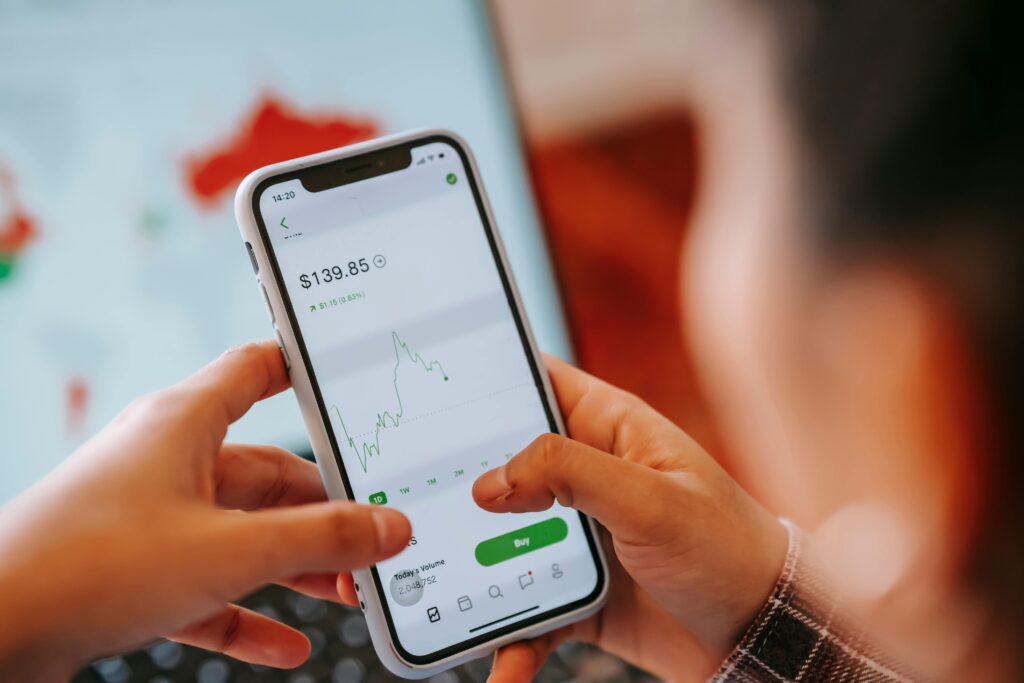
Using Ichimoku Clouds to Anticipate Market Movements in Crypto Trading
When it comes to crypto market news, one tool that traders often use to anticipate market movements is called Ichimoku Clouds. Ichimoku Clouds is a technical analysis indicator that provides valuable insights into the direction and momentum of an asset’s price action. Instead of relying solely on one or two indicators, Ichimoku Clouds offers a holistic view of the market.
At its core, Ichimoku Clouds consist of five individual lines/indicators that work together to paint a comprehensive picture of the market. These lines include the Tenkan-sen (Conversion Line), Kijun-sen (Base Line), Senkou Span A (Leading Span A), Senkou Span B (Leading Span B), and the Chikou Span (Lagging Span). Each line plays a unique role in determining possible support, resistance levels, and trend direction.
The Tenkan-sen and Kijun-sen can help identify trend reversals and offer insights into potential entry or exit points. When the Tenkan-sen crosses above the Kijun-sen, it generates a bullish signal, indicating a potential buying opportunity. Conversely, a bearish signal occurs when the Tenkan-sen crosses below the Kijun-sen, suggesting a possible selling opportunity.
The area between Senkou Span A and Senkou Span B creates what is known as the “cloud” or “Kumo.” This cloud can indicate dynamic support and resistance levels. If prices are above the cloud, it suggests that the overall trend is bullish, while prices below the cloud indicate a bearish market sentiment. The thickness of the cloud further helps determine its strength, with thicker clouds signifying stronger support or resistance.
Another crucial element of Ichimoku Clouds is the Chikou Span, which represents current closing prices plotted backwards. When the Chikou Span is above historical prices, it confirms a bullish market, and when it is below historical prices, it confirms bearish sentiment.
Together, these elements of Ichimoku Clouds provide a comprehensive view of the market situation, allowing traders to anticipate potential price movements. Traders commonly use this analysis tool to not only identify entry and exit points but also evaluate the overall trend strength and confirm signals generated by other indicators.
In crypto trading specifically, where market volatility remains high, integrating Ichimoku Clouds into your analysis can be especially helpful. By considering its various elements such as the Conversion Line, Base Line, Leading Spans A and B, and Lagging Span, traders can gain a broader perspective on potential price breakthroughs and reversals in the crypto market.
As always, it’s important to remember that while Ichimoku Clouds provide valuable insights into market movements, they should not be solely relied upon for trading decisions. Cybersecurity threats, global news events, regulatory changes, liquidity issues, and overall market sentiment must also be taken into consideration when formulating your trading strategies.
The Importance of Candlestick Patterns in Cryptocurrency Technical Analysis

Candlestick patterns hold immense significance in cryptocurrency technical analysis. Their interpretation can provide valuable insights into market trends and potential price movements. By visually representing historical price data, these patterns assist traders in making informed decisions.
Each candlestick shape conveys crucial information about the cryptocurrency’s market sentiment during a given time interval (usually minutes, hours, or days). These candlesticks consist of a body and wicks (also known as shadows) at both ends.
Firstly, the body’s color represents whether the closing price (bottom/top of the body) was higher or lower than the opening price (top/bottom of the body). A green or white-filled body indicates a bullish sentiment: the closing price exceeded the opening price. Conversely, a red or black-filled body suggests a bearish trend where the closing price was lower than the opening price.
Furthermore, the length of the body reflects the intensity of buying or selling pressure. A long body implies a significant price movement, whereas a short body indicates minimal changes between opening and closing prices.
The upper and lower wicks represent the highest and lowest prices reached within that time interval. Longer shadows signify higher levels of volatility during that period. If the wick is absent, it implies that either high or low prices remain unattained.
Various candlestick patterns serve diverse purposes in technical analysis. For example, Doji candles highlight market indecision; they have almost equal opening and closing prices resembling a cross or plus sign. This pattern suggests an upcoming reversal but requires additional confirmation from subsequent candlesticks.
Hammer and shooting star patterns indicate potential trend reversals when occurring at important support or resistance levels. The hammer displays a long lower shadow with a small body near the high price, indicating buyers stepping in after a considerable drop. Conversely, a shooting star exhibits an unusually long upper shadow with a small body near the low price, implying sellers dominating after an uptrend.
Engulfing patterns occur when a small body candlestick is followed by a larger body candlestick opposite in color. Bullish engulfing patterns form when a downward trend is likely to reverse, whereas bearish engulfing patterns indicate the opposite.
These are just a few examples of the numerous candlestick patterns that traders rely on for technical analysis. Recognizing and understanding these formations allows market participants to anticipate potential price movements, making informed decisions about buying, selling, or holding their cryptocurrency positions.
Overall, incorporating candlestick patterns into crypto market analysis is crucial. They empower traders with insights into market sentiment, trend reversals, and potential levels of support or resistance. By deciphering these patterns accurately, traders enhance their ability to navigate the volatile world of cryptocurrencies effectively.
Volume Indicators: Analyzing Trading Activity in the Crypto Market

Volume indicators are tools used for analyzing trading activity in the crypto market. They provide valuable information about the number of shares or contracts traded over a specific time period. Analyzing volume can offer insights into the strength and sustainability of price trends, as well as potential reversal points.
One commonly used volume indicator is known as Volume Bar/Chart. It displays the total number of shares or contracts traded during each given period. Traders often compare the volume of current bars with previous bars to detect any significant changes that may impact market dynamics.
Another popular indicator is On-Balance Volume (OBV). This tool calculates the momentum between buying and selling volumes over a given timeframe. If the OBV line moves upward, it suggests that buying pressure is increasing and prices may rise. Conversely, downward movement indicates rising selling pressure.
Volume Weighted Average Price (VWAP) is another indicator used to assess market activity. VWAP takes into account both price and volume and calculates an average value representative of how much the asset was bought or sold at various prices throughout the trading day. This helps traders identify key support or resistance levels based on high trading volumes.
Additionally, Market Facilitation Index (MFI) measures the effectiveness of price movement based on trading volume. It indicates the ease with which assets can be bought or sold at current prices. High MFI values imply decreasing liquidity due to heavy buying or selling, potentially signaling an upcoming price reversal.
Overall, volume indicators help traders evaluate the level of interest in a particular cryptocurrency or trading pair, providing insights into market sentiment and potential future movements. By understanding the relationship between price and volume, traders can make more informed decisions when buying or selling assets in the crypto market.
Exploring the Parabolic SAR for Trend Confirmation in Crypto Trading

Exploring the Parabolic SAR for Trend Confirmation in Crypto Trading
The Parabolic Stop and Reverse (SAR) is a technical analysis indicator that can be utilized by cryptocurrency traders to confirm trends. Developed by J. Welles Wilder, Jr., this tool’s objective is to highlight potential entry and exit points with regards to price movements.
The SAR is represented by a series of dots either above or below the price chart. When positioned below, it suggests an uptrend, while dots placed above usually indicate a downtrend. These dots act as anchor points that dynamically adjust depending on price movements and provide potential support and resistance levels for traders.
One of the primary purposes of using Parabolic SAR is to help validate a trend before entering a trade. In crypto trading, it’s essential to differentiate between temporary price fluctuations and genuine trend reversals. By implementing the Parabolic SAR, traders can better grasp the momentum and strength of an ongoing trend.
To accomplish this, traders must observe the price in relation to the SAR dots. When prices remain consistently above the dot markers, it indicates an upward trend, signaling potential buy opportunities or retention of long positions. Conversely, when prices linger persistently under the SAR dots, it suggests a downtrend, indicating possible sell opportunities or maintaining short positions.
Moreover, changes in position for the Parabolic SAR dots present crucial information about trend reversals. If a dot switches from below to above the price line, it’s seen as a signal for investors to exit long positions or consider opening short positions. Conversely, when a dot shifts from above to below the price line, it indicates an opportunity to close short positions or potentially enter long positions.
While Parabolic SAR can offer useful insights into trends, it’s important not to rely solely on this indicator for decision-making. The effectiveness of all technical analysis tools depends on various factors such as market conditions, volatility, and risk tolerance. Therefore, it’s recommended to combine the use of the Parabolic SAR with other indicators, such as moving averages or volume analysis, to gain a comprehensive understanding of the market.
In summary, the Parabolic SAR is a versatile tool that crypto traders can use to confirm trends and determine optimal entry and exit points. It’s a dynamic indicator that adjusts based on price movements, highlighting potential support and resistance levels. However, it should be complemented by additional technical analysis tools to make well-informed trading decisions.
Utilizing On-Balance Volume (OBV) to Gauge Market Sentiment in Crypto

Utilizing On-Balance Volume (OBV) to Gauge Market Sentiment in Crypto
When it comes to analyzing the cryptocurrency market, traders often seek indicators that can help them make informed decisions. One such tool is the On-Balance Volume (OBV), which helps gauge market sentiment by measuring the volume of trades.
OBV is a technical analysis indicator developed by Joseph Granville, and its main focus is to track the cumulative volume of a particular asset over time. It takes into account both the price movement and volume data to provide insights into market sentiment.
The central idea behind OBV is that volume tends to precede price movements, as it reflects the underlying buying and selling pressure. By monitoring changes in OBV, traders can identify trends and potential shifts in market sentiment.
To conduct an OBV analysis, traders need access to historical trading data, typically presented as candlestick charts. They can manually plot the OBV line by starting with a base level and incrementing it for each period when there’s positive volume (buying pressure) while decrementing it when there’s negative volume (selling pressure). The resulting OBV line then provides a visual representation of market sentiment.
The OBV line can be further enhanced using moving averages or other technical indicators. For instance, employing a simple moving average (SMA) in combination with the OBV line can help identify potential buy and sell signals. When the OBV line crosses above its SMA, it signifies bullish momentum, suggesting a favorable time to buy. Conversely, crossing below the SMA indicates bearish momentum, indicating a potential time to sell or short.
Traders also pay attention to divergence patterns between price and OBV. When there’s bullish divergence, meaning prices are trending upward while OBV is declining, it suggests weakness and may signal an impending reversal or correction. On the other hand, bearish divergence occurs when prices are declining while OBV is rising, indicating a potential market reversal to the upside.
While OBV serves as a useful tool to gauge market sentiment, it’s essential to note that it isn’t foolproof and should be used in conjunction with other indicators and analysis methods. Furthermore, it’s vital to factor in external influences on the cryptocurrency market that can affect sentiment, such as regulatory developments, news events, or broader market trends.
In conclusion, On-Balance Volume (OBV) provides traders with an additional tool to assess market sentiment in the crypto space. It aids in identifying trends, potential reversal points, and evaluating buying or selling pressure. By incorporating OBV analysis alongside other technical indicators and fundamental analysis, traders can make more informed decisions in the dynamic and volatile world of cryptocurrencies.
Introduction to Elliott Wave Theory in Cryptocurrency Markets

Introduction to Elliott Wave Theory in Cryptocurrency Markets
The Elliott Wave Theory is a widely used tool in technical analysis that aims to understand and predict market cycles. Originally developed by Ralph Nelson Elliott in the 1930s, this theory is based on the concept that financial markets follow repetitive patterns driven by investor psychology.
According to Elliott, market movements can be classified into two types of waves: impulsive waves and corrective waves. Impulsive waves represent the main trend and typically consist of five sub-waves labeled as 1, 2, 3, 4, and 5. These waves push the market in the direction of the prevailing trend.
On the other hand, corrective waves act as counter-trend movements in between impulsive waves. Corrective waves are generally represented by three sub-waves and are labeled as A, B, and C. They are responsible for retracing a portion of the previously prevailing trend.
Each wave within an impulsive or corrective wave has specific characteristics that traders can analyze to identify the market’s position within a wave cycle. Various criteria such as price momentum, volume trends, and trading patterns are observed during this analysis.
The Elliott Wave Theory assigns different degrees or scales to each wave. Grand Supercycle is the largest degree while Subminuette represents the smallest degree of waves. Traders analyze multiple timeframes (such as weekly, daily, or hourly charts) to recognize these varying wave degrees and make accurate predictions accordingly.
Additionally, Elliott Wave practitioners use Fibonacci extensions and retracement levels to anticipate target prices for various waves within a given cycle. These Fibonacci ratios show potential resistance or support levels that can help traders execute buy or sell orders with calculated risk.
In cryptocurrency markets, where volatility is high, some traders find value in utilizing the Elliott Wave Theory analysis to gain insights into potential price movements. By identifying wave patterns and understanding their characteristics within cryptocurrencies’ price charts, investors can make more informed decisions.
However, it’s important to note that the Elliott Wave Theory is not infallible, and market behavior can deviate from what is expected. Therefore, traders need to utilize additional tools and indicators while combining wave analysis with other technical and fundamental analysis methods for successful trading in cryptocurrency markets.
By studying Elliott Wave Theory, investors can gain a deeper understanding of market cycles, trends, and potential price targets, thus enabling them to make more educated decisions based on historical patterns and projected waves in the cryptocurrency market.
Enhancing Trade Decisions with the ATR Indicator in Volatile Crypto Markets

The ATR (Average True Range) indicator is a widely used tool that can be utilized to enhance trade decisions, particularly in volatile crypto markets. Volatility refers to price fluctuations that occur within a specific time frame, and the ATR indicator measures this volatility by examining the average difference between high and low prices over a given period.
In volatile markets, accurate trade decisions become particularly crucial. The ATR indicator helps traders understand the potential risks and rewards associated with specific cryptocurrency assets. It enables them to gauge the overall volatility present in the market and make informed decisions accordingly.
When using the ATR indicator, it’s essential to identify an appropriate time frame. This will depend on individual trading strategies and preferences, but common periods often range from 10 to 14 days. By analyzing a broader range of periods, traders can grasp both short-term and long-term volatility patterns.
With the ATR indicator incorporated into a trading strategy, it becomes easier to determine suitable entry and exit points. Typically, when the ATR value spikes, it signifies increased market volatility, indicating potentially favorable trading conditions. Conversely, a decrease in the ATR value suggests reduced volatility and might indicate a cautious approach.
By understanding fluctuations in market volatility through the ATR indicator, traders gain insights into potential profit targets and stop-loss placement. Higher volatility could indicate larger price swings and greater potential for profits; however, it also carries higher risk. Moreover, considering your risk appetite is crucial before incorporating any indicators in your decision-making process.
It’s important to remember that indicators should not be solely relied upon for making trade decisions; they should be utilized as tools that complement extensive market analysis. A combination of technical analysis methods, including trendlines, support/resistance levels, and other indicators simultaneously with the ATR indicator can enhance accuracy.
In conclusion, implementing the ATR indicator into trade decisions can act as an effective navigation tool in volatile cryptocurrency markets. By understanding market fluctuations and anticipating potential risks or rewards, traders can make more informed decisions regarding entry and exit points, as well as profit targets and stop-loss orders. Combining the ATR indicator with other technical analysis tools provides a holistic view of the market dynamics, ultimately enhancing trading strategies in the volatile crypto market.
Combining Technical Indicators for a Robust Crypto Trading Strategy

Combining technical indicators is an invaluable strategy for building a robust trading approach in the cryptocurrency market. Technical indicators are mathematical calculations applied to historical price and volume data to identify patterns, trends, and potential buy or sell signals.
One of the commonly used technical indicators is Moving Average (MA), which smooths out price fluctuations by calculating an average closing price over a specified period. By combining different MA durations, traders can observe the interaction between short-term and long-term trends, aiding in detecting potential entry or exit points.
Support and Resistance levels are another crucial concept. These levels represent previous price levels where the market has shown significant buying (support) or selling (resistance) pressure. By identifying areas with many historical occurrences of support or resistance, traders can gauge where trends may reverse or strengthen.
Relative Strength Index (RSI) is another popular indicator measuring the speed and change of price movements. By determining whether an asset is overbought or oversold, it helps traders assess potential trend reversals and find favorable entry or exit points. On RSI alone, values above 70 indicate overbought conditions while values below 30 indicate oversold conditions.
MACD (Moving Average Convergence Divergence) combines multiple exponential moving averages to study price momentum and potential trend changes. Traders analyze its signal line crossover with the MACD line as it represents buying or selling opportunities in the market.
Bollinger Bands plot standard deviations around a moving average to determine how volatile an asset’s price is. As prices tend to revert towards the mean when outside band ranges, traders can identify optimal entry or exit points based on such shifts in volatility.
Volume-weighted average price (VWAP) takes into account both the time of a trade and its traded volume. It provides valuable insights into institutional buying or selling patterns by calculating the average weighted price—taking volume into account—during a specific time window.
Fibonacci retracement levels are derived from the Fibonacci sequence, a mathematical concept found in various aspects of nature. These levels (38.2%, 50%, and 61.8%) are often used as potential support or resistance levels as they indicate pullback opportunities for traders.
It is crucial to mention that technical indicators should never be used in isolation. Successful traders combine these indicators and thoroughly analyze their interplay alongside other factors like market sentiment, news, and overall market conditions.
By combining and interpreting multiple technical indicators, traders can develop a robust strategy to identify potential buy or sell positions, manage risk, and ultimately increase the probability of profitable trades in the volatile world of cryptocurrencies.
The Role of Sentiment Analysis Tools in Predicting Crypto Price Movements

The role of sentiment analysis tools in predicting crypto price movements is gaining significant attention in the cryptocurrency market. Sentiment analysis involves analyzing and assessing investors’ emotions, opinions, and attitudes towards a particular cryptocurrency or the overall market.
These tools utilize advanced algorithms to analyze large amounts of data from various sources such as social media platforms, news articles, forums, and online communities. By applying natural language processing and machine learning techniques, sentiment analysis tools can extract valuable insights about investor sentiment.
Understanding sentiment is crucial because it can provide valuable information about market trends, emotional reactions, and investor behavior. Positive sentiment may indicate that investors are optimistic about a particular cryptocurrency’s future prospects, which could lead to an increase in demand and subsequently price appreciation. On the other hand, negative sentiment may suggest bearish signals, potentially leading to price declines as investors become more pessimistic.
Cryptocurrency sentiment analysis tools evaluate the overall sentiment by considering different factors such as the volume of positive and negative mentions, specific keywords and phrases related to buying or selling, changes in sentiment over time, and aggregated sentiment scores.
These tools help traders and investors make informed decisions based on real-time updates. By gauging the market sentiment surrounding a cryptocurrency, one can potentially predict price movements with greater accuracy. For instance, if a positive sentiment trend emerges regarding a specific cryptocurrency following the announcement of a major partnership or product release, it may signal an upward price movement.
However, relying solely on sentiment analysis tools for making investment decisions may not guarantee accurate predictions. While sentiment analysis provides valuable insights, market dynamics can be complex and influenced by numerous other factors beyond investor emotions alone. Price movements ultimately depend on various elements such as market liquidity, trading volumes, regulatory changes, technological advancements, and macroeconomic factors.
Moreover, sentiments expressed on social media platforms might not always align with actual investment decisions. Due to multi-directional bias and influence from speculative trends on social media platforms like Twitter or Reddit, it becomes crucial to judiciously assess the authenticity and reliability of sentiment information.
To enhance predictive accuracy, sentiment analysis tools can be complemented with fundamental and technical analysis. Combining sentiment analysis with traditional analytical approaches provides a more comprehensive view on market trends, strength of signals, and potential trading opportunities.
Ultimately, sentiment analysis tools serve as valuable instruments aiding investors and traders to gain insights into prevailing market sentiments and emotions. While it may not guarantee infallible predictions, when used alongside other analytical tools, they can contribute to making more informed and holistic investment decisions.
Technical Analysis Tools and Indicators
Understanding the Basics of Moving Averages in Crypto Trading

Moving averages are a fundamental analytical tool used in crypto trading. They provide valuable insights into market trends and help traders make more informed decisions. To understand moving averages, it’s crucial to grasp the idea of an average price over a specified period.
The most common type of moving average is the Simple Moving Average (SMA). It calculates the average price by summing up a specific number of closing prices and then dividing it by that same number. For example, if we want a 10-day SMA, we add up the closing prices of the last 10 days and divide that sum by 10.
Another type is the Exponential Moving Average (EMA). It assigns greater significance to recent price data by weighting them more heavily. This gives the EMA a faster response to market changes compared to the SMA.
Moving averages have multiple purposes in crypto trading. Firstly, they help identify trends and determine whether prices are moving up, down, or remaining flat. When the trend is upward, it implies bullish momentum, while a downtrend indicates a bearish sentiment.
Additionally, moving averages assist in filtering out fluctuations and noise caused by short-term market volatility. By smoothing out price data over time, traders can obtain a clearer picture of overall market direction.
Moving averages are frequently utilized to identify support and resistance levels. When prices approach a moving average from below and find support, it suggests potential buying opportunities as traders anticipate a rebound. Conversely, if prices test an established moving average from above and get rejected, it may indicate a resistance level that could signal sell opportunities.
Crossovers between different moving averages can generate trading signals. For instance, when a shorter-term moving average crosses above a longer-term one, it generates a bullish signal, while the opposite indicates bearish sentiment.
The choice of moving average period largely depends on personal preferences and trading strategies. Shorter periods yield more sensitive averages that react quickly to price changes; hence they may be suitable for day traders. Conversely, longer periods result in smoother averages that offer a broader view of market trends and might be preferred by swing or long-term investors.
Moving averages, however popular, have certain limitations. Like any technical indicator, they are not flawless and can generate false signals during volatile or unpredictable market conditions. Therefore, traders often combine moving averages with other indicators and tools to improve their decision-making process.
Understanding the basics of moving averages is a significant step forward in crypto trading analysis and decision making. Whether it’s identifying trends, filtering noise, spotting support and resistance levels, or generating crossover signals, these simple yet powerful tools enhance market understanding and can greatly contribute to profitable trading strategies.
The RSI Indicator: How to Use It Effectively in Your Crypto Trading Strategy

The RSI indicator, also known as the Relative Strength Index, is a popular tool used by traders to analyze price movements and identify potential trading opportunities in the crypto market. It is an oscillating momentum indicator that measures the speed and change of price movements, providing insights into whether a cryptocurrency is overbought or oversold.
To understand how to effectively use the RSI indicator in your crypto trading strategy, you should start with the basics. The RSI is typically depicted as a line graph that fluctuates between a value of 0 and 100. Values above 70 are generally considered overbought, suggesting a potential reversal or correction might occur soon. On the other hand, values below 30 are often seen as oversold, indicating a possible uptrend.
One aspect to consider while using the RSI indicator is divergences. Divergence occurs when the price of a cryptocurrency moves in the opposite direction to the RSI reading. For instance, if the price of a crypto asset continues to rise while the RSI is decreasing, it could suggest a trend reversal might be pending.
Another way to enhance your trading strategy with the RSI is understanding support and resistance levels. By analyzing price movements relative to these levels, you can create more informed buy or sell decisions. For example, if the RSI indicates that a cryptocurrency has hit an oversold level around major historical support, it might be an excellent opportunity to consider going long on that asset.
Moreover, understanding bullish and bearish signals signal an ability to capitalize on market fluctuations. Bullish divergence appears when the price decreases during oversold conditions, but the RSI creates higher lows. This indicates weakening selling pressure and might signal a potential buying opportunity depending on other market factors.
Conversely, bearish divergence happens when an asset’s price rises during overbought conditions, yet the RSI generates lower highs. As selling pressure weakens or increasing buying momentum slows, this can be taken as a potential sell or short-selling signal, albeit not one to rely on solely.
The duration and timeframe for applications of RSI vary widely. Shorter timeframes may provide more frequent signals but can also lead to increased false positives. Conversely, larger timeframes may give fewer opportunities but with higher accuracy. It’s vital to experiment with different time periods and backtest your strategy before committing capital.
It’s essential to remember no indicator works flawlessly all the time. The RSI is just one tool in your trading toolkit and should be complemented by additional analysis and indicators. Always consider other aspects such as market trends, candlestick patterns, volume, and fundamental analysis when crafting your trading strategy.
In summary, the RSI indicator is a valuable tool for crypto traders interested in analyzing price movements and identifying potential opportunities in the market. Understanding how to interpret RSI readings, spot divergences, analyze support and resistance levels, and recognize bullish or bearish signals can elevate your trading strategy and improve decision-making abilities. Remember to use the RSI in conjunction with other tools and indicators to drive better trading outcomes.
MACD – Deciphering the Signals for Crypto Market Movements

The Moving Average Convergence Divergence (MACD) is a popular technical analysis indicator used to decipher signals for crypto market movements. It is particularly helpful for traders and investors in understanding the trends and potential momentum shifts in the cryptocurrency market.
Essentially, MACD is composed of two moving averages plotted on a chart: the MACD line and the signal line. The MACD line is calculated by subtracting the 26-day Exponential Moving Average (EMA) from the 12-day EMA, while the signal line represents a 9-day EMA of the MACD line itself.
The interpretation of MACD revolves around its crossover points. When the MACD line crosses above the signal line, it generates a bullish signal suggesting potential upward movement in prices. Conversely, when the MACD line crosses below the signal line, a bearish signal is generated, indicating possible downward price movement.
One commonly used technique to identify trends with MACD is to observe divergences. If there is a bullish divergence, where the price creates lower lows but the MACD line forms higher lows, it can indicate an upcoming trend reversal or potential buying opportunity. Conversely, a bearish divergence occurs when the price reaches higher highs while the MACD line makes lower highs, indicating a possible trend reversal or selling opportunity.
Another aspect of MACD that traders consider is its histogram, which portrays the difference between the MACD line and the signal line. When positive bars are formed above the zero line, it implies increasing bullish momentum; conversely, when negative bars are formed below the zero line, it signifies increasing bearish momentum.
Additionally, traders often look for specific patterns in MACD to take trading decisions. One such pattern is called a bullish or bearish crossover. A bullish crossover occurs when the MACD line moves above its signal line, providing potential buy signals. In contrast, a bearish crossover happens when the MACD line drops below its signal line, creating sell signals.
It’s important to note that the accuracy of MACD signals depends on various factors and may not be foolproof. Therefore, many traders use MACD in combination with other technical indicators or tools to increase the probability of making accurate predictions.
In conclusion, MACD is a widely utilized indicator for analyzing crypto market movements. Its crossover points, divergences, histogram, and specific patterns provide valuable insights for traders seeking to identify potential opportunities in the cryptocurrency market while managing their risk effectively.
Bollinger Bands: Timing Your Buy and Sell in Cryptocurrency

Bollinger Bands: Timing Your Buy and Sell in Cryptocurrency
If you are involved in cryptocurrency trading, one tool that can significantly help you make better trading decisions is the Bollinger Bands. This technical indicator, developed by John Bollinger, serves as a useful guide for determining when to buy or sell cryptocurrencies based on price volatility.
So, what exactly are Bollinger Bands? Well, they consist of three lines plotted on a price chart – a simple moving average (SMA) line at the center, and two outer bands called the upper band and lower band. These bands dynamically adapt to market conditions by measuring asset price fluctuations over a defined period.
The middle line (SMA) represents the average price of the cryptocurrency over a specific time frame. It acts as an anchor, providing insights into the trend direction. The upper band reflects volatility and signifies that prices could be overbought. Conversely, the lower band indicates prices could be oversold due to increased volatility.
The idea behind Bollinger Bands is to identify potential buying or selling opportunities by analyzing patterns within the bands. For example, if the cryptocurrency’s price stays consistently near or touches the upper band, it might indicate an overbought condition, suggesting that selling could be imminent. Conversely, when the price hugs the lower band or approaches it closely, it may signal an oversold condition and possibly a good time to buy.
Beyond just indicating overbought and oversold conditions though, Bollinger Bands can also show periods of consolidation. When the bands’ distance narrows, it suggests decreasing market volatility or lateral movement within a certain price range. Traders should prepare for a potential breakout and possible significant changes in price trends.
Aside from identifying entry and exit points, traders can also use Bollinger Bands in conjunction with other indicators such as Relative Strength Index (RSI) or Moving Average Convergence Divergence (MACD) to increase the probability of accurate trading signals. Additionally, pattern recognition techniques can be applied to help identify chart formations such as triangles, reversals or breakouts, combined with Bollinger Bands.
It’s worth mentioning that no indicator guarantees 100% accuracy in predicting price movements; the market is always subject to unexpected turns. It is crucial to consider other factors such as fundamental analysis, news events, and broader market trends when making your trading decisions.
In conclusion, Bollinger Bands serve as a powerful tool in timing your buy and sell decisions within the cryptocurrency market. By monitoring price volatility and identifying overbought or oversold conditions, traders can gain valuable insights about potential entry or exit points. Remember to complement this indicator with other technical analysis tools while being aware of overall market conditions to maximize your trading success.
Fibonacci Retracement Levels: Finding Entry and Exit Points in Crypto Markets
Fibonacci retracement levels are an essential tool used in technical analysis to help traders determine potential entry and exit points in the crypto markets. Named after the famous mathematician Leonardo Fibonacci, this method involves the use of horizontal lines which correspond to key levels obtained through mathematical calculations.
To apply Fibonacci retracement levels, a trader initially identifies a significant price movement on a chart representing a cryptocurrency’s price action. This movement may be either an upward or downward trend, known as swings or waves. These swings can vary in length and are quantified using Fibonacci ratios, mainly 23.6%, 38.2%, 50%, 61.8%, and 78.6%.
Once the swing has been identified, the trader procedurally draws a line from the start of the swing to its end, marking these two points as 0% and 100% respectively. Subsequently, using the Fibonacci ratios mentioned above, parallel horizontal lines are drawn and marked on the chart at these respective percentages with respect to the length of the swing.
The resulting retracement levels then act as potential support or resistance areas where price reversals or continuing trends are likely to take place. When prices retrace or reverse back towards any of these levels, traders often pay close attention as these zones offer valuable insights.
In uptrends, fib retracement levels may be interpreted as buying opportunities. Traders often attempt to enter a position when cryptocurrencies’ prices drop to one of these levels since they indicate potential support areas. If price analysis shows bullish signals such as candlestick patterns or positive indicators, traders might consider it an optimal time to buy or increase their holdings.
Conversely, during downtrends, fib retracement levels might signal potential points for selling or shorting since they act as resistance zones where heightened selling pressure could emerge. If prices approach one of those levels accompanied by bearish reversal signals like bearish candlestick patterns or negative indicators, traders may view it as a suitable moment to sell or take profits.
Aside from entry and exit decisions, Fibonacci retracement levels can also help identify potential target levels within an ongoing trend. If prices break through the immediate retracement level, traders might look for subsequent fib extension levels such as 161.8% or 261.8% as possible profit-taking targets.
However, it’s important to note that Fibonacci retracement levels should never be solely relied upon for making trading decisions. They should always be used in conjunction with other technical analysis tools and indicators to validate signals. Analyzing both short-term and long-term trends, along with considering factors like market sentiment or news, is crucial for successful trading in the dynamic world of cryptocurrencies.
Ichimoku Clouds: A Comprehensive Guide for Crypto Traders

Ichimoku Clouds, also known as Ichimoku Kinko Hyo in Japanese, is a comprehensive technical analysis indicator that has gained popularity among crypto traders. Created by Goichi Hosoda in the late 1930s, this powerful tool provides valuable insights into the market trends, support and resistance levels, and potential reversals. In this comprehensive guide, we will delve into the various components of Ichimoku Clouds and how traders can effectively use it in the crypto market.
- Tenkan-sen (Conversion Line):
The first component of Ichimoku Clouds is the Tenkan-sen or Conversion Line. This line represents the average of the highest high and lowest low over a specific period, usually nine periods. It provides a tightly bound moving average that reacts quickly to short-term price movements. - Kijun-sen (Base Line):
The Kijun-sen or Base Line follows a similar approach to the Conversion Line but over an extended time frame, usually 26 periods. It offers a slightly lagging moving average than Tenkan-sen, providing traders with a mid-term perspective. - Senkou Span A (Leading Span A):
Using the average of Tenkan-sen and Kijun-sen plotted forward by 26 periods, Senkou Span A forms one edge of the cloud or “Kumo.” This leading span helps identify potential support and resistance areas in future price movements. - Senkou Span B (Leading Span B):
Similar to Senkou Span A, the Senkou Span B calculates an average over a distinct period (usually 52), but it is plotted forward by 26 periods. The area between Senkou Span A and B creates the other edge of the cloud. The width reflects market volatility. - Kumo (Cloud):
The cloud component of Ichimoku is formed by Senkou Span A and Senkou Span B. Traditionally, a green-colored cloud represents a bullish market sentiment, while a red cloud signifies a bearish sentiment. This feature serves as a dynamic support or resistance zone, enabling traders to gauge potential reversals. - Chikou Span (Lagging Span):
The Chikou Span, or Lagging Span as the name suggests, lags behind the current price by 26 periods. It helps confirm signals generated by other components of Ichimoku, acting as a momentum indicator when it breaks above or below recent candlestick patterns.
By considering the interactions between these different components and analyzing their relative positions in real-time charts, crypto traders can leverage Ichimoku Clouds to identify potential buy or sell signals. When the price moves above the cloud, it indicates bullish market conditions, while a move below suggests bearish momentum. Moreover, when the Conversion Line crosses above the Base Line within the cloud and both are moving upward, it generates a bullish signal; similarly, their bearish crossing within the cloud with downward movement generates a sell signal.
Traders should also focus on the cloud thickness since thicker clouds indicate stronger support or resistance levels. Additionally,rushing price movements through Kumo can provide valuable insights into potential trend continuation or reversals.
While mastering Ichimoku Clouds might take time and practice, incorporating its analysis effectively can greatly improve trading decisions in the volatile world of cryptocurrencies. Therefore, prudent utilization paired with other complementary analysis tools enhances traders’ understanding and potentially increases profitability in navigating cryptomarkets.
Stochastic Oscillator: Identifying Overbought and Oversold Conditions in Cryptocurrency Markets

The Stochastic Oscillator is a popular technical indicator used in cryptocurrency markets to identify overbought and oversold conditions. It was developed by George Lane in the 1950s and has since gained wide recognition among traders for its effectiveness.
In essence, the Stochastic Oscillator compares an asset’s closing price to its trading range over a specified timeframe. The indicator consists of two lines, %K and %D, which fluctuate between 0 and 100. %K represents the most recent closing price’s position within the trading range, while %D is a moving average of %K.
By analyzing these lines, traders can gauge whether an asset is overbought or oversold. When %K rises above a certain predefined threshold, usually 80, and then crosses below %D, it suggests that the asset is overbought and a potential sell signal might be approaching. Conversely, when %K falls below another threshold, often 20, and then crosses above %D, it indicates oversold conditions and potentially implies a buy signal.
The primary idea behind the Stochastic Oscillator is that after prolonged uptrends or downtrends, prices tend to revert to their mean value before continuing their trajectory. It helps traders identify potential turning points in the market, helping inform their buy or sell decisions. However, it is essential not to solely rely on this indicator but use it in conjunction with other technical analysis tools for more accurate predictions.
Traders often adjust the input parameters of the Stochastic Oscillator to suit their trading style and preferences. For instance, altering the number of periods considered while calculating the indicator may make it more or less sensitive to price movements.
Overall, the Stochastic Oscillator provides valuable insights into momentum and potential trend reversals in crypto markets. Efficient utilization of this indicator can assist traders in identifying overbought and oversold conditions, enhancing their decision-making process while navigating through volatile cryptocurrency markets.
The ATR Indicator: Assessing Crypto Market Volatility for Better Trade Decisions

The Average True Range (ATR) indicator is a widely used tool in the realm of technical analysis, specifically for assessing market volatility in the crypto market. As an essential component of a trader’s toolkit, ATR aids in making better trade decisions by providing insights into market conditions.
ATR measures the volatility of a cryptocurrency or any other market instrument based on its historical price data. The primary purpose of this indicator is to determine the average range at which prices move, indicating the level of volatility during a specific period. Traders can then utilize this information to analyze potential risks and rewards associated with specific asset trades.
The calculation behind the ATR indicator involves sampling high-to-low price range values over a chosen number of periods, usually 14 or 21 days. It accounts for any gaps between trading sessions and depicts the true price range by factoring in these irregularities. The resulting values are expressed in the form of absolute price units, revealing the current level of volatility.
A higher ATR value indicates greater volatility, suggesting that prices have experienced wider fluctuations over recent periods, thus highlighting increased risk. Conversely, a lower ATR value suggests calmer and relatively stable market conditions.
One way to interpret the ATR data is through comparative analysis. By contrasting the ATR values of different cryptocurrencies on various timeframes, traders can determine which ones exhibit higher or lower levels of volatility. This insight helps traders make informed decisions when choosing potential assets for trading activities.
The ATR indicator is also valuable for assessing potential stop-loss and take-profit levels for trades. By analyzing historical price data along with respective ATR values, traders can establish appropriate levels for safeguarding against adverse price movements while also considering profit targets.
Furthermore, the ATR indicator allows traders to adapt their strategies based on changing market conditions. During times of heightened volatility, suitable adjustments can be made by taking into account the augmented risks inherent in volatile environments. Traders may consider either widening their stop-loss distance or allocating smaller positions to mitigate potential losses.
In essence, the ATR indicator acts as a reliable and effective tool for assessing volatility in the crypto market. By providing key insights into price movements, it empowers traders to make optimal decisions when executing trades, managing risks, and establishing realistic profit expectations. No wonder it has found widespread utility among crypto market participants.
Candlestick Patterns Every Crypto Trader Should Know: A Visual Guide to Market Sentiment

Candlestick patterns are vital tools that every crypto trader should know about when analyzing market sentiment. These patterns, represented by graphical shapes on a price chart, provide insights into the emotions and psychology of market participants.
- Bullish Engulfing Pattern:
- – This pattern indicates a potential trend reversal from bearish to bullish.
- – It consists of a small bearish candle followed by a larger bullish candle that completely engulfs the previous candle’s body.
- – Indicates buyer dominance over sellers, suggesting the possibility of an uptrend.
2. Bearish Engulfing Pattern:
- – The opposite of the bullish pattern, the bearish engulfing pattern signals a potential trend reversal from bullish to bearish.
- – It comprises a small bullish candle followed by a larger bearish candle that engulfs the previous candle’s body.
- – Suggests that sellers are taking control and a downtrend might follow.
3. Hammer Pattern:
- – Generally occurs during a downtrend and marks a possible reversal towards an uptrend.
- – Consists of a small body with a long lower wick and little to no upper wick.
- – Signifies that buyers stepped in to push prices back up after a significant sell-off when market sentiment was negative.
4. Shooting Star Pattern:
- – Opposite of the hammer pattern, shooting star appears during an uptrend and implies a potential reversal towards a downtrend.
- – Identified by a small body with a long upper wick and little to no lower wick.
- – Shows that sellers entered the market during an upward movement, highlighting a possible shift in sentiment.
5. Doji Pattern:
- – A doji occurs when the opening and closing prices are almost identical, resulting in its cross-like appearance.
- – Symbolizes market indecision or a balanced standoff between buyers and sellers.
- – May indicate that current trends may be ending or undergoing a transition.
6. Morning Star Pattern:
- – A three-candle pattern appearing after a downtrend.
- – The first is a bearish candle, followed by a small bullish or bearish candle with a gap below the first, and then a larger bullish candle.
- – Suggests a reversal from a downtrend to an uptrend, indicating the emergence of buying pressure.
7. Evening Star Pattern:
- – The opposite of the morning star, it occurs during an uptrend.
- – Comprises of a bullish candle followed by a small bullish or bearish candle with a gap above the first, and then a larger bearish candle.
- – Implies a potential reversal from an uptrend to a downtrend, highlighting the entrance of selling pressure.
Understanding these visual representations of candlestick patterns in cryptocurrency price charts can assist traders in predicting potential market reversals and interpreting prevailing market sentiment. Regular analysis of these patterns can provide valuable insights into market dynamics.
Volume Analysis in Cryptocurrency Trading: Understanding Market Strength

Volume analysis is a crucial aspect of cryptocurrency trading that helps traders determine market strength and make informed decisions. Simply put, volume refers to the overall number of trading activity within a specific period. By evaluating volume, traders can gauge the level of investor interest in a particular cryptocurrency.
Analyzing volume provides insights into market movements and trend reversals. When volume increases significantly, it often accompanies notable price movements, indicating strong buying or selling pressure. Conversely, low volume suggests a lack of substantial market interest and potential instability.
Traders use various technical indicators to analyze volume. One widely used tool is the Volume Weighted Average Price (VWAP), which calculates the average price weighted by volume throughout a trading day. VWAP helps traders identify fair value prices and understand whether a security is overbought or oversold.
Another popular indicator is On-Balance Volume (OBV), which tracks the cumulative volume in relation to the price direction. If the OBV line rises steadily, it suggests stronger buying pressure, indicating bullish sentiment. Similarly, if the OBV line falls consistently, it indicates stronger selling pressure and bearish sentiment.
The analysis of volume can also help identify trend confirmations or divergences. For example, when prices rise alongside increasing volume, it confirms an uptrend’s strength. However, if the prices rise but accompanying volume decreases or remains stagnant, it suggests weakness and a possible trend reversal.
Additionally, analyzing volume can aid in spotting market manipulation or significant shifts in investor sentiment. Sudden spikes in volume during consolidation periods may precede major price movements driven by significant buy or sell orders. Recognizing such patterns allows traders to position themselves advantageously.
Using multiple timeframes to analyze volume can offer more comprehensive insights. Looking at daily, weekly, and monthly volume data enables traders to understand changing trends on different scales, from short-term momentum to long-term market sentiment.
Moreover, comparing current trading volumes with historical data allows for relative assessments, giving traders context about whether the current activity is above or below average. This approach helps identify periods of accumulation or distribution and assists in recognizing potential breakouts or reversals.
In conclusion, volume analysis is a key component of successful cryptocurrency trading, enabling traders to interpret market strength and plan their investments accordingly. Understanding volume patterns assists in identifying market sentiment changes, confirming trends, and unveiling potential opportunities for profit. By incorporating volume analysis into their trading strategies, cryptocurrency traders can make well-informed decisions based on concrete data rather than relying solely on price movements.
How to Combine Different Technical Indicators for a Robust Crypto Trading Strategy

Combining different technical indicators is an effective approach to develop a robust crypto trading strategy. Adding up multiple indicators allows traders to reduce false signals, increase the overall accuracy of predictions, and make more informed decisions. Here are some fundamental concepts to help you understand how to combine these indicators effectively:
Trend Confirmation: One popular technique is to combine trend indicators to validate market trends. Tools such as Moving Averages (MAs), Bollinger Bands, or Trendlines can be used together. By corroborating the signals produced by each of these indicators, traders can gain stronger confirmation of a trend direction.
Momentum and Oscillators: Combining momentum indicators, like the Relative Strength Index (RSI), with oscillators such as the Moving Average Convergence Divergence (MACD), can provide valuable insights into market conditions. For instance, if RSI indicates overbought levels while MACD displays bearish convergence, it suggests an impending trend reversal.
Support and Resistance Levels: Combining support and resistance tools like Fibonacci retracement levels, Pivot Points, and horizontal price lines can enhance trading decisions. When these levels align with other technical indicators indicating a potential trend change, it strengthens the validity of a trade signal.
Volume Analysis: Incorporating volume indicators, such as the On-Balance Volume (OBV) or Volume Weighted Average Price (VWAP), helps evaluate price movements in relation to trading volume. Higher volume at specific price levels could suggest significant support or resistance points.
Divergence Analysis: Divergence occurs when an indicator disagrees with the current price action. By fusing tools like the Stochastic Oscillator or Relative Strength Index with other indicators, you can identify divergences indicating potential trend reversals before they happen.
Pattern Recognition: Using different technical analysis patterns along with appropriate indicators enriches your understanding of market behavior. For example, combining candlestick patterns like Doji or Hammer with suitable moving averages and oscillators helps detect potential trend reversals or continuations.
It’s essential to note that a comprehensive understanding of individual technical indicators and their interaction is crucial while combining them. Traders should also consider the overall market context, news events, and risk management strategies.
Remember, every trading strategy carries inherent risks, as the market can be unpredictable. Thoroughly test and fine-tune your strategy on historical data before applying it to live trading. With experience, skill, and a strong understanding of technical analysis, combined indicator systems can greatly improve your crypto trading decisions.
Chart Patterns That Matter in Cryptocurrency Trading: Triangles, Head and Shoulders, Flags and Pennants
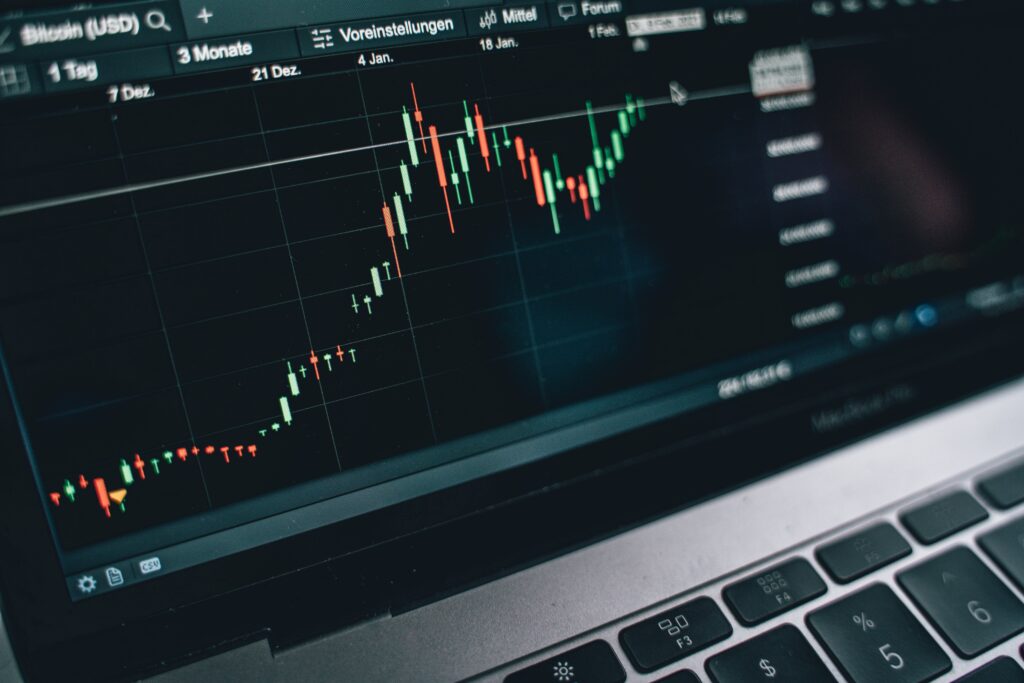
Chart patterns play a crucial role in understanding and predicting price movements in the cryptocurrency market. Three of the most significant chart patterns that matter in cryptocurrency trading are triangles, head and shoulders, and flags and pennants.
Triangles: Triangles are consolidation patterns that indicate a temporary balance between buyers and sellers. They are categorized into three types: ascending, descending, and symmetrical triangles. Ascending triangles exhibit a flat top trendline and a rising bottom trendline, signaling potential bullishness. Descending triangles possess a downward sloping top trendline and a horizontal bottom trendline, indicating possible bearishness. Symmetrical triangles present converging trendlines without any discernible slope, indicating indecision in the market.
Head and Shoulders: The head and shoulders pattern is a bearish reversal formation characterized by three distinct peaks. The first and third peaks (the shoulders) are lower in height than the center peak (the head), forming a visual pattern similar to a human’s head and shoulders. This chart pattern often indicates a trend reversal from bullish to bearish when it breaks below the neckline.
Flags and Pennants: Flags and pennants are shorter-duration continuation patterns that usually emerge after a sharp price movement. A flag pattern consists of two parallel trendlines: one representing the flagpole (the steep price movement) and the other as the flag itself (a period of consolidation). Bullish flags slope against the prevailing price trend, while bearish flags slope in favor of it. Pennants are similar to flags but have converging trendlines rather than parallel ones.
Why They Matter: These chart patterns matter because they can offer traders essential information about potential future price movements. Understanding these patterns aids in identifying breakout or breakdown points, confirming trend reversals, or recognizing the consolidation phase before resuming an existing trend. Recognizing these patterns can provide insights into price targets, entry/exit points for trades, and risk management strategies.
In conclusion, triangles, head and shoulders, and flags and pennants are valuable chart patterns that significantly impact cryptocurrency trading. Analyzing these patterns helps traders make informed decisions backed by technical analysis to navigate the ever-changing crypto market landscape effectively.
Using On-Balance Volume (OBV) to Uncover Momentum Shifts in the Crypto Market

On-Balance Volume (OBV) is a popular technical indicator that can be used to analyze momentum shifts in the crypto market. It serves the purpose of measuring the buying and selling pressure exerted on an asset over a given period of time. By understanding how OBV works, traders and investors can uncover valuable insights into market trends and make informed decisions.
To start with, OBV takes into consideration a simple premise: volume precedes price. This means that changes in trading volume often indicate potential price movements before they actually occur. Instead of focusing solely on price changes, OBV combines both volume and price action to provide a more comprehensive analysis.
The OBV indicator operates on the principle that positive volume should be added when prices close higher and subtracted when prices close lower. This cumulative volume is displayed as a line on an indicator chart, either above or below a zero line, depending on the underlying asset’s performance. If the OBV line moves upwards, it indicates that buying pressure is increasing, while a downward movement suggests growing selling pressure.
Traders and investors employ OBV to identify momentum shifts in the crypto market by using several key techniques:
Firstly, divergence analysis involves comparing the direction of OBV movements with actual price trends. If the price is moving downwards while the OBV line is moving upwards, it suggests that a potential trend reversal is brewing. Conversely, if prices are climbing but the OBV line is declining, it may indicate weakening buying power and signal an upcoming correction.
Secondly, trendline analysis can help identify trend confirmations or potential breakouts. By drawing trendlines on the OBV chart and comparing them with corresponding price trendlines, traders can gauge how buyers or sellers are influencing overall market sentiment. A breakout above or below a trendline on both charts could indicate a potential change in momentum.
Thirdly, use of support and resistance levels enhances the interpretation of OBV signals. When the OBV line encounters a significant support or resistance level corresponding with price action, it can strengthen the conviction in the upcoming trend continuation or reversal. If the OBV breaks through a support or resistance level alongside similar price movement, it further confirms the validity of the shift.
Lastly, analyzing OBV in confluence with other technical indicators can provide more reliable signals. Utilizing complementary tools such as moving averages, oscillators, or trend indicators strengthens the analysis. Confirming indications from multiple indicators can minimize false signals and increase confidence in spotting momentum shifts.
Overall, using On-Balance Volume to uncover momentum shifts in the crypto market is a valuable approach when analyzing trends and making trading decisions. Understanding how OBV uses volume to anticipate price movements, along with divergence analysis, trendline analysis, support and resistance levels, and considering other technical indicators can enhance accuracy when using this tool. By continuously monitoring OBV in conjunction with other relevant aspects of market analysis, traders can stay ahead of potential turning points and adapt their strategies accordingly.
The Importance of Relative Strength Index Divergence in Cryptocurrency Trading

The Relative Strength Index (RSI) is a crucial tool used by cryptocurrency traders to analyze market trends and predict potential price movements. However, it becomes even more powerful when traders pay attention to RSI divergence.
RSI divergence occurs when the trend of the RSI line deviates from the trend of the actual cryptocurrency price. This phenomenon often indicates that a trend reversal may be imminent and can provide traders with useful trading signals. By observing these differences between the RSI and price, traders gain insights into market sentiments and possible upcoming changes in direction.
A bullish RSI divergence suggests that despite the price indicating a downward trend, the RSI shows higher lows. This contrast may indicate underlying strength in the market, leading traders to anticipate an upcoming price increase. It indicates a potential buying opportunity as traders expect the price to reverse its downtrend soon.
Contrarily, a bearish RSI divergence occurs when the price continues to make higher highs while the RSI consecutively creates lower highs. This pattern might indicate weakness in the market and suggest that a downward trend reversal could take place. In such cases, traders can consider shorting or selling their holdings, capitalizing on an expected fall in prices.
Understanding and recognizing RSI divergence allows traders to assess market conditions beyond mere price analysis. Traders who solely rely on price patterns can miss these critical signals as they pay no attention to confirmation or disagreement presented by the RSI line.
Ultimately, incorporating RSI divergence analysis as part of your trading strategy empowers you with a complementary tool for verifying market trends and making well-informed investment decisions. By staying attentive to both price movements and RSI shifts, you can enhance your accuracy in predicting future cryptocurrency price actions.
Moreover, utilizing other key technical analysis indicators along with RSI divergence will further refine your insights into potential market moves. Always remember that analyzing multiple indicators in combination produces more reliable results compared to relying solely on one.
In summary, along with monitoring the RSI indicator, incorporating RSI divergence analysis into cryptocurrency trading strategies is crucial. Identifying these divergences enables traders to make more informed decisions and boosts their confidence in seizing profitable opportunities. By unearthing hidden signals, traders can navigate uncertainties and better position themselves in the volatile and ever-changing crypto market.
Applying the Concept of Elliot Wave Theory in Crypto Market Prediction

Elliot Wave Theory is a widely-used concept among technical analysts for predicting market trends. By analyzing price patterns, it aims to identify recurring and predictable wave movements in financial markets, such as cryptocurrencies. In the context of the crypto market, applying Elliot Wave Theory can provide insights into potential future price movements.
The theory is based on the premise that markets move up in five waves (bullish phase) and correct down in three waves (bearish phase). Furthermore, these waves are labeled with numbers and letters according to a specific structure. The idea behind this theory is to decipher the collective psychology of market participants, which reflects the ongoing struggle between buyers and sellers.
Here’s a breakdown of how Elliot Wave Theory is applied in crypto market prediction:
- Wave Count: In Elliot Wave Theory, the market is divided into different waves where each wave represents a specific trend or correction. Traders try to identify these waves to get a comprehensive view of market behavior.
- Impulse Waves: The five-wave upward movement, often referred to as an impulse wave, indicates a bullish trend. This movement consists of three upward waves (1, 3, 5) and two downward correctional waves (2, 4).
- Corrective Waves: After the impulse waves come corrective waves – three downward moving waves (A, B, C) that usually retrace a significant portion of the previous impulse wave’s rally. These corrections help balance and stabilize the market.
- Trend Reversals: Recognizing wave structures becomes crucial when anticipating trend reversals in the crypto market. Traders look for signs that confirm the end of one major wave count and the start of another reversal pattern.
- Fibonacci Retracement: Elliot Wave Theory often integrates Fibonacci retracement levels to predict potential areas of support or resistance during price corrective moves.
- Time Frames: Applying Elliot Wave Theory can happen on various time frames ranging from minute charts to weekly or monthly charts. It’s important to decide on the time frame that aligns with your trading strategy and the market you are analyzing.
- Flexibility and Subjectivity: Applying Elliot Wave Theory requires some subjectivity as identifying waves is not always clear-cut. Traders may interpret the wave count differently, leading to slightly different predictions.
- Practice and Experience: Mastering Elliot Wave Theory in crypto market prediction takes practice and experience. Traders often utilize chart analysis tools and indicators to validate their interpretations and gain more confidence in their wave counts.
Overall, it’s important to remember that no trading theory or strategy guarantees absolute accuracy, including Elliot Wave Theory. As with any technical analysis tool, it’s essential to combine multiple indicators, risk-management strategies, and fundamental analysis when making investment decisions related to cryptocurrencies. Success in forecasting market movements comes with learning, adapting, and understanding statistical probabilities over time rather than relying solely on a single concept like the Elliot Wave Theory.
Heiken Ashi Candles: Smoothing Out Price Action for Better Trend Analysis in Crypto Trading

Heiken Ashi candles are a popular tool used in technical analysis for better trend analysis in crypto trading. These unique candles are designed to “smooth out” price action, providing traders with a clearer picture of the market trends. Unlike traditional candlestick charts, Heiken Ashi candles focus on smoothing the price data to help identify long-term trends and avoid getting caught up in short-term market noise.
The name “Heiken Ashi” is derived from Japanese words, where “Heiken” means “average” or “balance,” while “Ashi” represents “bars” or “candles.” By balancing the market fluctuations, these candles aim to overcome the erratic movements commonly seen in cryptocurrency markets and enable traders to make more informed decisions.
Rather than relying solely on open, close, high, and low prices (like traditional candles), Heiken Ashi candles consider a combination of the current and previous bars’ data. The formula for calculating Heiken Ashi candlestick values involves four key components: opening price, closing price, high price, and low price. Based on these inputs, each candle is calculated using its own unique formula.
One key characteristic of Heiken Ashi candles is their ability to filter out noise created by random price fluctuations. By doing so, they offer clearer indications of the overall market trend and potential trend reversals. Traders can benefit from using them to spot price patterns and better understand market dynamics because these candles often show more consistent trends when compared to regular candles.
The color-coding system used in Heiken Ashi candles adds another layer of simplicity for trend identification. Typically, green signifies an uptrend, while red represents a downtrend. This visual representation can assist traders in making quick and intuitive decisions based on the current market sentiment.
It’s important to note that Heiken Ashi candles alone should not be relied upon as the sole indicator for trading decisions; they’re typically utilized as a supplementary tool along with other technical indicators. Price chart analysis using these candles is subjective and depends on the individual trader’s interpretation.
In summary, Heiken Ashi candles offer traders an alternative perspective on traditional candlestick analysis. By smoothing out the price action and reducing market noise, they provide a clearer view of market trends in crypto trading. Understanding the nature and usage of these candles can be beneficial for traders seeking more reliable trend signals and improved decision-making in the crypto market.
Utilizing Parabolic SAR for Determining Momentum Direction and Potential Reversals in Cryptocurrency Markets

Parabolic SAR (Stop and Reverse) is a popular technical indicator utilized by traders to determine the momentum direction and potential reversals in cryptocurrency markets. This tool provides important insights into market trends and helps traders make informed decisions. So, how does Parabolic SAR work?
The Parabolic SAR indicator appears as a series of dots either above or below the price chart. These dots represent potential reversal points in the current market trend. When the dots are positioned below the price, it signals an uptrend, while dots above the price indicate a downtrend.
In terms of momentum direction, Parabolic SAR offers valuable information on possible trend continuation or change. During an uptrend, the SAR dots remain beneath the price, illustrating that buyers are in control. Conversely, when the dots shift above the price bar, it suggests a potential trend reversal and a shift towards a downtrend.
Traders interpret Parabolic SAR in relation to the analyzed cryptocurrency’s price movement. When the price crosses above the SAR dot, it indicates a potential bullish signal. On the other hand, a price crossing below the SAR dot is considered bearish and may foreshadow a downtrend.
The distance between the price bar and the SAR dot can provide insight into the market’s momentum strength. A wider gap signifies stronger momentum, indicating an extended trend. However, caution must be exercised if this gap widens significantly as it might imply an eventual reversal or exhaustion of the trend.
At times, Parabolic SAR dots might converge towards or even overlap with each other directly following a significant move in either direction. This scenario could imply indecision or lack of clear momentum direction. Traders should exercise caution during such periods and await confirmation by looking for other indicators or patterns.
Additionally, combining Parabolic SAR with other technical indicators can enhance decision-making accuracy. Popular complementary indicators include moving averages, Relative Strength Index (RSI), and Bollinger Bands.
In conclusion, employing the Parabolic SAR indicator simplifies the identification of momentum direction and potential trend reversals in cryptocurrency markets. By inspecting the location of the dots in relation to the price, traders can determine the prevailing trend. Moreover, paying attention to the convergence or divergence of the dots with price movements assists in estimating market momentum strength and identifying potential reversal points. Nonetheless, as with any tool, it is wise to confirm Parabolic SAR signals by considering other indicators or patterns before making trading decisions. Happy trading!
Pivot Points Calculation and Its Significance in Identifying Critical Support and Resistance Levels for Cryptos

Pivot Points Calculation is a widely used tool in technical analysis for determining critical support and resistance levels within the cryptocurrency market. These levels carry substantial significance as they assist traders in making informed decisions regarding potential entry points for buying or selling.
The calculation of pivot points involves five simple steps. To begin, one must calculate the pivot point itself. This is accomplished by adding the high, low, and closing prices of the previous trading session, then dividing the sum by three. The resulting value represents a key level that showcases the overall sentiment of the market.
Once the pivot point has been determined, key support and resistance levels are calculated using the following formulas. First, an upper resistance level (R1) is calculated by multiplying the pivot point by two and then subtracting the previous day’s low. A lower support level (S1) is derived by multiplying the pivot point by two and subtracting the previous day’s high.
Additionally, a second resistance level (R2) is identified by adding the pivot point to the difference between yesterday’s high and low. Conversely, a second support level (S2) can be calculated by subtracting the difference between yesterday’s high and low from the pivot point. Lastly, a third resistance level (R3) can be obtained by adding yesterday’s high to twice the difference between the pivot point and low. Similarly, a third support level (S3) can be derived from yesterday’s low minus twice the difference between yesterday’s high and the pivot point.
Undoubtedly, Pivot Points Calculation plays a vital role in cryptocurrency trading as it helps identify critical levels that indicate major price movements or potential reversals. When prices approach these levels, they act as powerful markers for both support and resistance zones.
When a cryptocurrency’s price exceeds its first or second resistance level (R1 or R2), it often indicates bullish momentum in which buyers overpower sellers. This may push prices higher as a result. Conversely, if a cryptocurrency’s price breaches its first or second support level (S1 or S2), it could signal bearish momentum indicating that sellers are dominating the market. This scenario frequently leads to a decline in prices.
By keeping track of these levels provided by Pivot Points Calculation, traders can gain valuable insights into potential reversals or breakouts within the crypto market. Whether a trader utilizes pivot points in conjunction with other technical indicators or decides to trade solely based on these levels, they represent a crucial tool for decision-making in the challenging and dynamic cryptocurrency landscape.


